- Privacy Policy

100+ Electrical Engineering Research Topics Examples
Electrical engineering comprises the comprehension of electricity and how it works. The main task of electrical engineers is to improve the distribution of energy to different electrical devices. Electrical engineers utilize their skills and knowledge to solve different technical issues. Electrical engineers’ tasks are working with the airline navigation system, GPS, systems for power generation, and transmissions like the wind farmhouses and similar projects. Working on different energies also comes in the domain of electrical engineers such as hydro-energy, turbine, fuel cell, gas, geothermal energy, solar energy, and wind energy. Electrical engineers use various passive components such as inductors, capacitors, and resistors, and so on while working on electrical devices and systems.
Students need to get different ideas for the research in electrical engineering on the latest ideas during the academic career of engineering. If you have been looking for an article that includes interesting research paper topics for electrical engineering students at a single site, you have come to the right place.
Top Research Topics for Electrical Engineering Students
For your convenience, we have compiled here a list of the top 100 electrical engineering project ideas in 2021.
- Distance Locator for an underground cable fault
- An analysis of battery energy storage (BES) systems financial incentive policies
- Photovoltaic conversion efficiency improvement using the sparse matrix converter
- Multiphase power and DC power transmission
- SVPWM inverter harmonic elimination
- Electric cars Regenerative braking efficiency improvement
- UPS systems issues in power quality
- Techno-environmental feasibility assessment of a standalone photovoltaic system
- Electric Scooter Simulation model
- Load-leveling economical analysis using EV
- Energy minimization algorithm for an electric car with many motors
- Minimization of Switching loss in the grid-connected system
- Economic analysis and a battery’s life analysis with the supercapacitor
- Protection System for an induction motor
- A high-efficiency PLC boiler control system
- SMART cities and IoT
- Electric scooter Performance analysis using different motors
- Semantics, knowledge management, and data acquisition using IoT
- Technologies of Network virtualization
- IoT home networks
- Electrical Appliance Control with Android
- The cost-benefit analysis of energy projects on grid-scale: A case study
- Detection of the arcing fault in the electrical systems
- Induction motor map development for efficiency
- A sensitivity analysis for the parameters vehicle design
- Research on electrical loads in the public and residential buildings
- Comparative Analysis and Calculation Methods of the Losses in the electrical energy in low-voltage devices
- Hybrid charging stations powered with solar energy
- IoT smart energy meter
- Wind-power generation using a synchronous generator with permanent magnet
- Off-grid rural areas applications using a switched reluctance machine
- Analysis and design of a magnetless multiphase dc-field machine to generate wind power
- Smart home electric energy management
- A techno-economic viability assessment of a decoupled energy storage
- A techno-economic optimization and modeling of storage-based PV power generation systems
- A technical model for the lithium-ion storage for biogas and PV energy system
- An analysis of transparent power grids
- Battery life and efficiency of regenerative braking
- Economic and life analysis of a battery with the supercapacitor
- EV home charging using the load-leveling algorithm
- In-Vivo Imaging of the cancer cells using the Fluorescent Microscopy
- Use of Dynamic Instrumentation for analyzing WhatsApp security
- Smart grid architecture design
- Use of PID controller for IM torque control
- Design of a hybrid power system
- Use of FIXCOM for designing a 3-level inverter
- Harvesting solar energy from a solar-powered satellite
- Use of microcontroller for battery discharging and charging of hybrid energy system
- Analysis and modeling of electrical gripper’s DC motor actuator
- Use of a brushless DC motor for Zeta converter’s power quality improvement
- Use of a three-phase Inverter based on Thyristor for simulation and control of a DC motor
- Use of PI Controller for designing a PLC speed control DC motor
- Use of PID controller for speed control of a DC motor: a comparative study
- Front-End ASICs power management circuits
- Off-Grid renewable energy’s remote monitoring system
- Non- Renewable and Renewable Energy Resources comparative analysis
- Development of Green Building for harvesting renewable energy
- Low carbon achievement: a case study
- Use of PSO for load dispatch in case of renewable uncertainties
- The hot climate and Vertical axis wind turbine relationship and consequence
- Use of fuzzy control for efficient electrical energy management
- Degradation in the performance of PV panel performance and shading effect: a case study
- Solar angles simulation to maximize solar thermal collectors efficiency
- Use of Node MCU for active solar tracking
- Different techniques for DC networks with low voltage
- Waste Management Approach based on information
- Grid-Connected Solar PV System with decoupled control
- Electric vehicle life analysis
- Use of ADVISOR for minimizing EV energy consumption
- Field data examination of energy consumption for an electric scooter
- Use of an electric car for peak load shaving
- Effect of the temperature on PV energy conversion
- Digital Signal process control system for motors
- Use of EMTDC/ PSCAD for evaluation of harmonic analysis and filter design
- Load flow analysis of integrated DC/ AC power system using newton-raphson method
- Auto-Irrigation System development using solar power
- DC motor speed control unit design
- Protection System design for under-voltage
- Protection System design for over-voltage
- Silicon robot based on solar power
- 3-phase grid-connected PV systems simulation and design
- Analysis of brushless servo motors
- Grid-connected PV systems multilevel inverter simulation
- MIMO transformer models
- Fault detection in 3 phase transmission lines
- An optimization technique for flexible load scheduling
- Design of remote terminal unit for secure control of power
- Use of the artificial neural network for 3-phase fault detection
- Design of electrical substation earthing system
- Microgrid integration in the power transmission lines
- Induction motor temperature and material selection
- Open-loop simulation for an optimal vehicle simulation and design
- Use of STATCOM for improving the transient stability of a power grid
- Peak load management using Vehicle to Grid system
- Image sensing for a closed-loop traffic control system
- Arduino based smart home automation system
- 3 phase induction motor controlled by SVPWM in an electric vehicle
- Increasing the efficiency of a superconducting transformer
- An analysis of (SCADA) System in Power Stations
Research topics for electrical engineering can be exciting yet challenging to find at the same time as they require a lot of time for thorough research and writing. Moreover, the topic and the desired approach can a lot of time to be finalized. Keeping this hassle in view, we have compiled a list of the top 100 electrical engineering research paper topics in a single article to save your time. We will also keep updating the list to include some more latest and fresh research topics related to electrical engineering.
Related Posts
Learn a new language with this new trending..., top safety measures for small vehicle owners on..., balancing free speech and user safety in the..., the ultimate guide to e-commerce website design, unable to work after an injury, securing fair treatment after workplace injuries, anton kreil – trading masterclass course: an over-review, the legal path: navigating road accident claims with..., these are the best chess openings for black, how to edit an essay well, 10 comments.
Please example of research proposal Title solar about technology research 1
Solar tittle of research
Help us to connect the latest electrical engineering research topic
Please help to a research project about renewable energy
Your Comment technical report
I want two research papers in electrical engineering.
I will pay for that
Awesome 👍 How do the research topic on DC induction motors
Yes, sure do contact with me.
I want two research paper in electrical engineering
How do Hybrid charging stations powered with solar energy
Leave a Comment Cancel Reply
Please enter an answer in digits:
- Interesting
- Scholarships
- UGC-CARE Journals
Top 75 Emerging Research Topics in Electrical Engineering
Discover the cutting-edge frontiers of electrical engineering with our comprehensive list of the Top 75 Emerging Research Topics
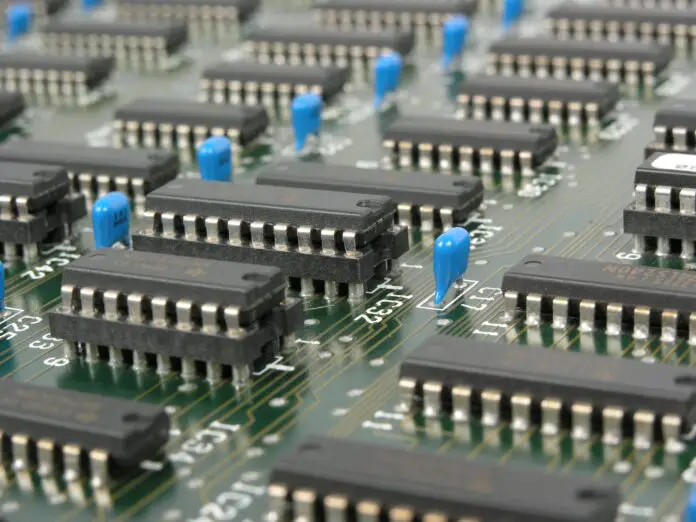
Table of contents
1.1 smart grids and micro-grids, 1.2 energy harvesting and storage, 1.3 electric vehicles and transportation, 2. communications and networking, 2.1 5g and beyond, 2.2 iot and wireless sensor networks, 2.3 satellite and space communications, 3.1 autonomous systems, 3.2 biomedical and healthcare robotics, 3.3 machine learning and control, 4.1 nano-electronics and quantum computing, 4.2 flexible and wearable electronics, 4.3 neuromorphic engineering and brain-computer interfaces, 5.1 sparse signal processing, 5.2 explainable ai and interpretability, 5.3 adversarial machine learning and security.
In the ever-evolving realm of Electrical Engineering, innovative research continually drives the field’s progression, shaping our future technologies and solutions. As we step into an era dominated by AI, IoT, renewable energy, and more, the scope for innovative research widens. In this article, iLovePhD listed the top 75 emerging research topics in the field of Electrical Engineering.
1. Power Systems and Renewable Energy
a. Distributed control strategies for micro-grid management.
b. Blockchain applications for secure energy transactions in smart grids.
c. Resilience and robustness enhancement in smart grid systems against cyber threats.
d. Integration of renewable energy sources in micro-grids.
e. AI-based predictive maintenance for smart grid components.
a. Next-gen battery technologies for energy storage systems.
b. Wireless power transfer and energy harvesting for IoT devices.
c. Super-capacitors and their applications in renewable energy storage.
d. Materials research for efficient energy conversion and storage.
e. Energy-efficient architectures for IoT devices powered by energy harvesting.
a. Charging infrastructure optimization for electric vehicles.
b. Vehicle-to-grid (V2G) technology and bidirectional power flow.
c. Lightweight materials and design for electric vehicle batteries.
d. Autonomous electric vehicle technology and its integration into smart cities.
e. Energy-efficient route planning algorithms for electric vehicles.
a. AI-driven optimization for 5G network deployment.
b. mmWave communication technologies and their implications.
c. Quantum communication for secure and high-speed data transfer.
d. 6G technology and its potential applications.
e. Edge computing and its role in 5G networks.
a. Energy-efficient protocols for IoT devices.
b. AI-enabled edge computing for IoT applications.
c. Security and privacy in IoT data transmission.
d. Integration of AI with IoT for intelligent decision-making.
e. Communication challenges in massive IoT deployment.
a. Low Earth Orbit (LEO) satellite constellations for global connectivity.
b. Inter-satellite communication for improved space exploration.
c. Secure communication protocols for space-based systems.
d. Quantum communication for secure space-based networks.
e. Space debris mitigation and communication systems.
3. Control Systems and Robotics
a. AI-driven control for autonomous vehicles and drones.
b. Swarm robotics and their applications in various industries.
c. Human-robot collaboration in industrial settings.
d. Autonomous navigation systems for underwater vehicles.
e. Control strategies for multi-agent systems.
a. Robotics in surgical procedures and rehabilitation.
b. Wearable robotics for physical assistance and rehabilitation.
c. Robotic prosthetics and exoskeletons for enhanced mobility.
d. Telemedicine and remote healthcare using robotic systems.
e. Ethics and regulations in medical robotics.
a. Reinforcement learning for control system optimization.
b. Neural network-based adaptive control systems.
c. Explainable AI in control systems for better decision-making.
d. Control strategies for complex systems using deep learning.
e. Control system resilience against adversarial attacks.
4. Electronics and Nanotechnology
a. Quantum-resistant cryptography for future computing systems.
b. Development of reliable qubits for quantum computers.
c. Quantum error correction and fault-tolerant quantum computing.
d. Nano-scale transistors and their applications.
e. Hybrid quantum-classical computing architectures.
a. Stretchable electronics for wearable applications.
b. Smart textiles and their integration with electronic components.
c. Biocompatible electronics for healthcare monitoring.
d. Energy harvesting in wearable devices.
e. Novel materials for flexible electronic devices.
a. Neuromorphic computing for AI and cognitive systems.
b. Brain-inspired computing architectures and algorithms.
c. Non-invasive brain-computer interfaces for diverse applications.
d. Ethics and privacy in brain-computer interface technology.
e. Neuroprosthetics and their integration with neural interfaces.
5. Signal Processing and Machine Learning
a. Compressive sensing for efficient data acquisition.
b. Sparse signal reconstruction algorithms.
c. Sparse representations in machine learning.
d. Deep learning for sparse signal recovery.
e. Applications of sparse signal processing in various domains.
a. Interpretable machine learning models for critical applications.
b. Explainable deep learning for decision-making.
c. Model-agnostic interpretability techniques.
d. Human-centric AI and its interpretability.
e. Visual and intuitive explanations in machine learning models.
a. Robust deep learning models against adversarial attacks.
b. Adversarial machine learning in cybersecurity.
c. Detecting and mitigating adversarial attacks in AI systems.
d. Secure and private machine learning protocols.
e. Ethical considerations in adversarial machine learning.
As technology continues to redefine boundaries and explore new horizons, these research topics in Electrical Engineering stand at the forefront, ready to shape the future of our world. The amalgamation of these fields showcases the diversity and depth of possibilities waiting to be unlocked by the curious minds and diligent efforts of researchers and engineers in the years to come.
- Advanced sensors
- AI Applications
- AI in robotics
- Autonomous vehicles
- Brain-machine interfaces
- Cognitive radio
- Electric vehicles
- Electrical engineering research
- Electroceuticals
- Electromagnetic compatibility
- Electronic design automation
- Electronics advancements
- Emerging research topics
- Energy efficiency
- Energy forecasting
- Energy storage
- Grid stability
- Health technology
- HVAC systems
- IoT devices
- Microgrid technology
- Molecular electronics
- Nanoelectronics
- Power systems
- quantum computing
- Quantum cryptography
- Quantum internet
- Remote Sensing
- renewable energy
- Smart buildings
- Smart grids
- Smart grids cybersecurity
- Speech and audio processing
- sustainable manufacturing
- Terahertz electronics
- VLSI design
- Wearable technology
- Wireless protocols
10 ideas to get 10x more Google Scholar Citations
What is a research design importance and types, indian council of social science research calls for collaborative research project, email subscription.

iLovePhD is a research education website to know updated research-related information. It helps researchers to find top journals for publishing research articles and get an easy manual for research tools. The main aim of this website is to help Ph.D. scholars who are working in various domains to get more valuable ideas to carry out their research. Learn the current groundbreaking research activities around the world, love the process of getting a Ph.D.
WhatsApp Channel
Join iLovePhD WhatsApp Channel Now!
Contact us: [email protected]
Copyright © 2019-2024 - iLovePhD
- Artificial intelligence
Thank you for visiting nature.com. You are using a browser version with limited support for CSS. To obtain the best experience, we recommend you use a more up to date browser (or turn off compatibility mode in Internet Explorer). In the meantime, to ensure continued support, we are displaying the site without styles and JavaScript.
- View all journals
- Explore content
- About the journal
- Publish with us
- Sign up for alerts
Browse Articles

3D integration of 2D electronics
Since the most advanced nodes in silicon are reaching the limits of planar integration, 2D materials could help to advance the semiconductor industry. With the potential for use in multifunctional chips, 2D materials offer combined logic, memory and sensing in integrated 3D chips.
- Darsith Jayachandran
- Najam U Sakib
- Saptarshi Das
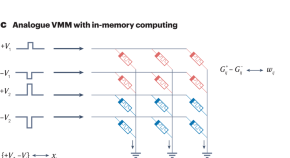
Memristor-based hardware accelerators for artificial intelligence
This Review summarizes latest advancements in memristor-based hardware accelerators, an energy-efficient solution for computing-intensive artificial intelligence algorithms, covering crossbar arrays, peripheral circuits, architectures and software–hardware co-designs. It analyses challenges and pathways for the transition of memristor technology to commercial products.
- Takashi Ando
- Qiangfei Xia

Medical artificial intelligence should do no harm
Bias and distrust in medicine have been perpetuated by the misuse of medical equations, algorithms and devices. Artificial intelligence (AI) can exacerbate these problems. However, AI also has potential to detect, mitigate and remedy the harmful effects of bias to build trust and improve healthcare for everyone.
- Melanie E. Moses
- Sonia M. Gipson Rankin
Promoting women in tech
In the spirit of promoting gender equality, Sony, in partnership with Nature , has launched the ‘Sony Women in Technology Award’ to recognize and celebrate the remarkable women spearheading advancements in STEM.

Tailoring materials, structures and fabrication processes for stretchable electronics
An article in Nature presents large-area, high-performance intrinsically stretchable electronics thanks to innovation in materials selection, fabrication processes, device engineering and circuit design.
- Silvia Conti

Van der Waals magnet integration for energy-efficient spintronics
An article in Science Advances reports an integrated van der Waals system that enables field-free electric control of the magnetization of Fe 3 GaTe 2 above room temperature.
After confronting one uncanny valley, another awaits
The ‘uncanny valley’ has guided robot engineers on the limits of human likeness, yielding design principles to mitigate the risk of creepy robots. Yet unease with advancements in AI has exposed a new ‘uncanny valley of mind’, with researchers now exploring acceptable boundaries on simulating human intelligence, emotion, empathy and creativity.
- Jan-Philipp Stein
- Karl F. MacDorman
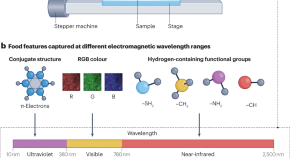
Applications of hyperspectral imaging technology in the food industry
Rational and scientific use of hyperspectral imaging involves the selection of appropriate imaging hardware and data analysis software. Sun et al. describe applications of hyperspectral imaging in food quality inspection and provide guidance for non-specialist researchers aiming to implement this technology.
- Jingxiao Yu
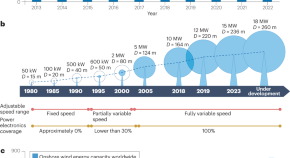
Power electronics in wind generation systems
This Review discusses the current capabilities and challenges facing different power electronic technologies in wind generation systems from single turbines to the system level. Several projects are reviewed to highlight areas of current research focus, and future trends of wind power generation are summarized.
- Frede Blaabjerg
- Liang Huang
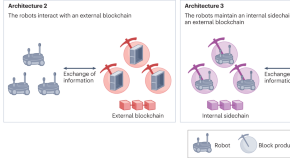
Blockchain technology for mobile multi-robot systems
Blockchain technology can be integrated into mobile multi-robot systems. This Perspective overviews the initial achievements, open challenges and research directions in the field of blockchain-based mobile multi-robot systems.
- Marco Dorigo
- Alexandre Pacheco
- Volker Strobel
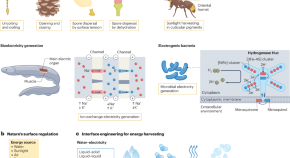
Nature-inspired interfacial engineering for energy harvesting
Nature evolves intricate surfaces/interfaces to achieve high energy efficiency, providing a promising, low-carbon solution to energy crisis. This Review explores diverse energy processes in nature and how to translate nature’s inspiration to efficiently harvest energy from water, sunlight, heat and their hybrids, especially through interfacial engineering.
- Baoping Zhang
- Wanghuai Xu
- Zuankai Wang

A life in electrical engineering, glancing at biology
Evolution and interdisciplinarity are key words for Elisa Vianello, senior scientist and Edge AI program coordinator at CEA-Leti, who talks to Nature Reviews Electrical Engineering about her research activity and the importance of bridging the gap between academia and industry.
- Elisa Vianello
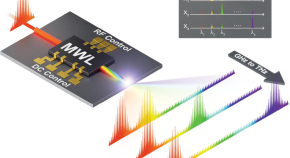
Spectral multiplication enables THz-tunable and broadband electro-optic combs
An article in Nature Communications presents a spectral multiplication approach to obtain THz-tunable and broadband electro-optic combs using integrated multi-wavelength semiconductor lasers.
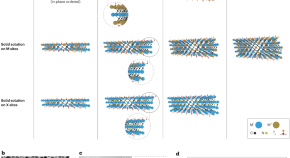
MXenes for multispectral electromagnetic shielding
Two-dimensional MXenes have emerged as state-of-the-art functional electromagnetic interference shielding materials in multispectral electromagnetic bands. Highly conductive and ultrathin films of MXenes can efficiently block electromagnetic waves from radiofrequency and gigahertz-range microwaves to terahertz or infrared-frequency waves.
- Aamir Iqbal
- Tufail Hassan
- Chong Min Koo
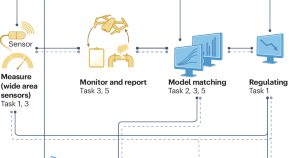
Sensing fugitive hydrogen emissions
For the transition to a sustainable energy sector, massive hydrogen production and use is crucial. There is growing awareness of a connection between an indirect global warming potential and the production of hydrogen, so its fugitive emissions must be addressed. This Comment emphasizes the need for affordable hydrogen-sensing methods to benefit safety, energy efficiency and the climate.
- Sudipta Chatterjee
- Kuo-Wei Huang
Turning e-waste into opportunity
Addressing the electronic-waste crisis requires global cooperation to enhance recycling, innovate in sustainable materials management and embrace eco-design. By viewing electronic waste as valuable ‘urban mines’, we can unlock a circular economy and ensure the sustainable recovery of strategic metals, fostering a greener, more sustainable future.
- Alessia Amato
- Francesca Beolchini
Transforming edge hardware with in situ learning features
Memristor devices have shown notable superiority in the realm of neuromorphic computing chips, particularly in artificial intelligence (AI) inference tasks. Researchers are now grappling with the intricacies of incorporating in situ learning capabilities into memristor-based chips, paving the way for more powerful edge intelligence.
- Huaqiang Wu

A new path for organic electrochemical transistors
An article in Nature Electronics presents how to use electron-beam lithography to obtain p- and n-type vertical organic electrochemical transistor matrix arrays and complementary logic circuits.
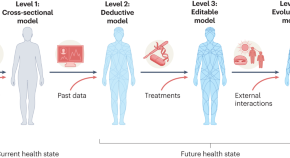
A roadmap for the development of human body digital twins
The rapid development of on-body sensors and multimodal artificial intelligence is accelerating the emergence of the human body digital twin (DT) as an interdisciplinary research topic. This Perspective outlines a roadmap for applications of human body DTs in health monitoring, disease prevention and treatment.
- Chenyu Tang
- Luigi G. Occhipinti
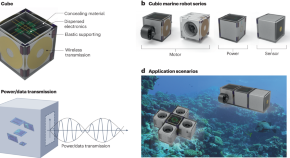
Cubic marine robotics
Modular robotics offers design flexibility that could enable the scale-up of robotic systems for marine applications. We have developed simple repeating cubic modular components that can be assembled and reconfigured to create different types of underwater robots for marine applications, enabling them to navigate and perform tasks underwater with ease and efficiency.
- Xiangning He
Quick links
- Explore articles by subject
- Guide to authors
- Editorial policies
EE Research at Stanford: The Big Picture

AI, machine learning, optimization
Optimal design and engineering systems operation methodology is applied to things like integrated circuits, vehicles and autopilots, energy systems (storage, generation, distribution, and smart devices), ...

Computational Sensing, Imaging, and Display
This area combines advanced computational and algorithmic solutions with next-generation hardware and systems to unlock new paradigms in sensing, imaging, and displays.
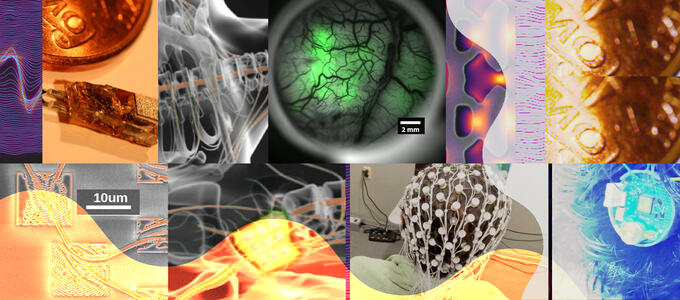
Biology and Health
Discovering and creating fundamentally new devices and systems for critical diagnostics (sensors, imaging), therapeutic (lasers, pacemakers, and neural interfaces), and analytical (high-throughput sequencing, healthcare IT) technologies. ...

Information, Learning, Communication and Coding
Moving information efficiently and reliably across time and/or space supports the modern world and its sustainable future. This area advances fundamental understanding of the communicated information's structure, partitioning …

Computer architecture, including energy efficiency, reliability, security
Exponential growth in performance and storage capacity has been the key enabler for information technology for decades. Yet, current shifts have motivated new system architectures and vertical co-design of hardware, system software, and applications. …
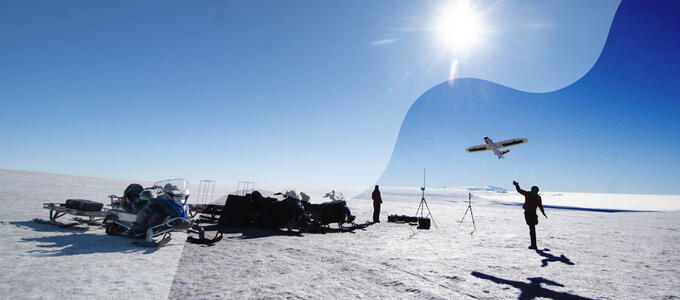
Energy, environment, and sustainability
Motivated at the macro level by the rapid rise in demand for electricity and related threats to the environment, and on the micro level by the number of mobile devices and sensors whose performance and lifetimes are …

Environmental sensors, embedded systems, remote sensing
Drawing on broad disciplines and approaches that advance the state-of-the-art in geoscience remote sensing instrumentation, plus technologies that advance knowledge for the betterment of society and …
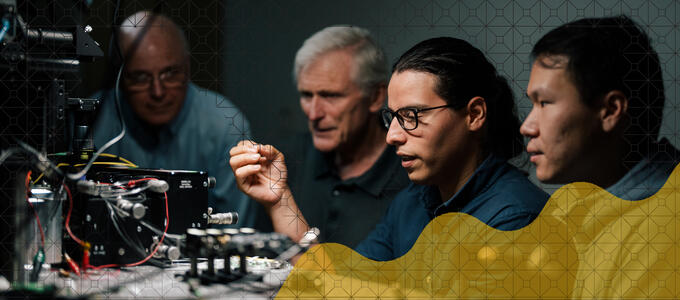
Integrated Circuits and Systems
This area is concerned with the application-driven design of electronic circuits and systems, spanning a wide spectrum from low frequencies to mm-wave and THz. These systems are designed with a variety of fabrics and technologies, ranging from silicon subsystems and modules, CMOS and BiCMOS chips, emerging nano and MEMS devices, as well as discrete electronics.

Nanotechnology, nanofabrication, materials, advanced packaging and manufacturing technologies
Design methodology, validation and test, approximate computing, and robust circuits and systems; Mixed-signal integrated circuit design ...

Physics, materials, devices, and systems are investigated using light and electromagnetism. Applications including sensing, imaging, communications, computing, energy, biology, medicine, security, and information processing. ...

Quantum science and engineering
Quantum mechanical entanglement is the main resource for implementation of all quantum technologies (quantum computers, simulators, sensors, and networks). Our goal is to study and scale entanglement in a variety of physical systems …

Develop broadly intelligent behavior through learning and interaction. Exploring the intersection of machine learning and robotic control, including visual perception and manipulation skills, deep reinforcement learning of general skills …

Signal processing and control
Securing useful information while reducing unwanted noise can be achieved using mathematical methods and computation. Optimal design and engineering systems’ operation methodologies enable the understanding, design, and control of systems …

Software systems, security, distributed systems and networks
Efficient storage, compression, and transmission of information, applies to a wide range of domains, such as communications, genomics, neuroscience, societal networks and urban systems, and statistics. …
Curious about designing a program?
If you are interested in designing a program that fits your interests, please contact the undergrad advisor or graduate advisor.
Want more projects and people?
Visit Faculty research and lab sites. Deeper dive links are available by clicking on our faculty's name.
- Who’s Teaching What
- Subject Updates
- MEng program
- Opportunities
- Minor in Computer Science
- Resources for Current Students
- Program objectives and accreditation
- Graduate program requirements
- Admission process
- Degree programs
- Graduate research
- EECS Graduate Funding
- Resources for current students
- Student profiles
- Instructors
- DEI data and documents
- Recruitment and outreach
- Community and resources
- Get involved / self-education
- Rising Stars in EECS
- Graduate Application Assistance Program (GAAP)
- MIT Summer Research Program (MSRP)
- Sloan-MIT University Center for Exemplary Mentoring (UCEM)
Electrical Engineering
Computer science, artificial intelligence + decision-making.
- AI and Society
- AI for Healthcare and Life Sciences
- Artificial Intelligence and Machine Learning
- Biological and Medical Devices and Systems
- Communications Systems
- Computational Biology
- Computational Fabrication and Manufacturing
- Computer Architecture
- Educational Technology
- Electronic, Magnetic, Optical and Quantum Materials and Devices
- Graphics and Vision
- Human-Computer Interaction
- Information Science and Systems
- Integrated Circuits and Systems
- Nanoscale Materials, Devices, and Systems
- Natural Language and Speech Processing
- Optics + Photonics
- Optimization and Game Theory
- Programming Languages and Software Engineering
- Quantum Computing, Communication, and Sensing
- Security and Cryptography
- Signal Processing
- Systems and Networking
- Systems Theory, Control, and Autonomy
- Theory of Computation
- Departmental History
- Departmental Organization
- Visiting Committee
Explore all research areas

At MIT EECS, our faculty enjoy an intellectually inspiring and nurturing environment where they are empowered to ask creative questions; solve the world’s most pressing problems; and pursue inventive, innovative research.

Electrical engineers design the most sophisticated systems ever built. From computers with billions of transistors to microgrids fed by renewable energy sources, from algorithms that predict disease to solar cells and electric vehicles, electrical engineering touches all parts of modern society. We leverage computational, theoretical, and experimental tools to develop groundbreaking sensors and energy transducers, new physical substrates for computation, and the systems that address the shared challenges facing humanity.

Computer science deals with the theory and practice of algorithms, from idealized mathematical procedures to the computer systems deployed by major tech companies to answer billions of user requests per day. Primary subareas of this field include: theory, which uses rigorous math to test algorithms’ applicability to certain problems; systems, which develops the underlying hardware and software upon which applications can be implemented; and human-computer interaction, which studies how to make computer systems more effectively meet the needs of real people.

Artificial Intelligence and Decision-making combines intellectual traditions from across computer science and electrical engineering to develop techniques for the analysis and synthesis of systems that interact with an external world via perception, communication, and action; while also learning, making decisions and adapting to a changing environment.
The research that drives EECS forward is based out of four major labs. Most EECS faculty members are affiliated with one of these labs, where they explore challenging questions and develop innovative technological solutions every day.
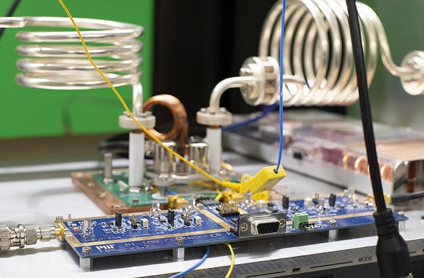
Nearly 130 EECS faculty members find their research homes in four major affiliate labs:
- Computer Science and Artificial Intelligence Laboratory (CSAIL)
- Laboratory for Information and Decision Systems (LIDS)
- Microsystems Technology Laboratories (MTL)
- Research Laboratory of Electronics (RLE)
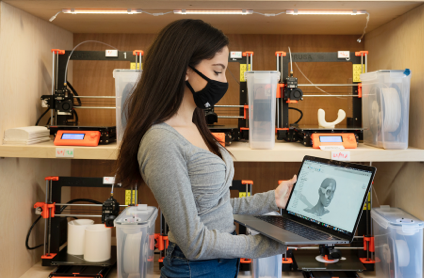
Our boundary-pushing research is often highly interdisciplinary, but it can be roughly broken down into some useful areas of inquiry. Explore them here.
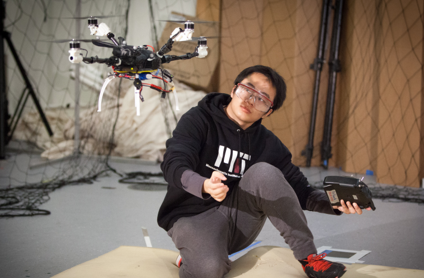
UROP and SuperUROP
Students at MIT can take advantage of many opportunities to participate in research side-by-side with our world-class faculty–even on the undergraduate level.
MIT Undergraduate Research Opportunities Program (UROP)
Advanced Undergraduate Research Opportunities Program (SuperUROP)

is Mainsite

- Search all IEEE websites
- Mission and vision
- IEEE at a glance
- IEEE Strategic Plan
- Organization of IEEE
- Diversity, Equity, & Inclusion
- Organizational Ethics
- Annual Report
- History of IEEE
- Volunteer resources
- IEEE Corporate Awards Program
- Financials and Statistics
- IEEE Future Directions
- IEEE for Industry (Corporations, Government, Individuals)
- IEEE Climate Change
- Humanitarian and Philanthropic Opportunities
- Select an option
- Get the latest news
- Access volunteer resources (Code of Ethics, financial forms, tools and templates, and more)
- Find IEEE locations
- Get help from the IEEE Support Center
- Recover your IEEE Account username and password
- Learn about the IEEE Awards program and submit nomination
- View IEEE's organizational structure and leadership
- Apply for jobs at IEEE
- See the history of IEEE
- Learn more about Diversity, Equity & Inclusion at IEEE
- Join an IEEE Society
- Renew your membership
- Member benefits
- IEEE Contact Center
- Connect locally
- Memberships and Subscriptions Catalog
- Member insurance and discounts
- Member Grade Elevation
- Get your company engaged
- Access your Account
- Learn about membership dues
- Learn about Women in Engineering (WIE)
- Access IEEE member email
- Find information on IEEE Fellows
- Access the IEEE member directory
- Learn about the Member-Get-a-Member program
- Learn about IEEE Potentials magazine
- Learn about Student membership
- Affinity groups
- IEEE Societies
- Technical Councils
- Technical Communities
- Geographic Activities
- Working groups
- IEEE Regions
- IEEE Collabratec®
- IEEE Resource Centers
- IEEE DataPort
- See the IEEE Regions
- View the MGA Operations Manual
- Find information on IEEE Technical Activities
- Get IEEE Chapter resources
- Find IEEE Sections, Chapters, Student Branches, and other communities
- Learn how to create an IEEE Student Chapter
- Upcoming conferences
- IEEE Meetings, Conferences & Events (MCE)
- IEEE Conference Application
- IEEE Conference Organizer Education Program
- See benefits of authoring a conference paper
- Search for 2025 conferences
- Search for 2024 conferences
- Find conference organizer resources
- Register a conference
- Publish conference papers
- Manage conference finances
- Learn about IEEE Meetings, Conferences & Events (MCE)
- Visit the IEEE SA site
- Become a member of the IEEE SA
- Find information on the IEEE Registration Authority
- Obtain a MAC, OUI, or Ethernet address
- Access the IEEE 802.11™ WLAN standard
- Purchase standards
- Get free select IEEE standards
- Purchase standards subscriptions on IEEE Xplore®
- Get involved with standards development
- Find a working group
- Find information on IEEE 802.11™
- Access the National Electrical Safety Code® (NESC®)
- Find MAC, OUI, and Ethernet addresses from Registration Authority (regauth)
- Get free IEEE standards
- Learn more about the IEEE Standards Association
- View Software and Systems Engineering Standards
- IEEE Xplore® Digital Library
- Subscription options
- IEEE Spectrum
- The Institute
- Proceedings of the IEEE
- IEEE Access®
- Author resources
- Get an IEEE Xplore Digital Library trial for IEEE members
- Review impact factors of IEEE journals
- Request access to the IEEE Thesaurus and Taxonomy
- Access the IEEE copyright form
- Find article templates in Word and LaTeX formats
- Get author education resources
- Visit the IEEE Xplore digital library
- Find Author Digital Tools for IEEE paper submission
- Review the IEEE plagiarism policy
- Get information about all stages of publishing with IEEE
- IEEE Learning Network (ILN)
- IEEE Credentialing Program
- Pre-university
- IEEE-Eta Kappa Nu
- Accreditation
- Access continuing education courses on the IEEE Learning Network
- Find STEM education resources on TryEngineering.org
- Learn about the TryEngineering Summer Institute for high school students
- Explore university education program resources
- Access pre-university STEM education resources
- Learn about IEEE certificates and how to offer them
- Find information about the IEEE-Eta Kappa Nu honor society
- Learn about resources for final-year engineering projects
- Access career resources
IEEE Resources for Final-Year Engineering Projects
- Constitutional Amendments
- IEEE Annual Election Home
- Annual Election Candidates
- Candidate Nominations
- Petition Process
- Previous Elections
- Voter Eligibility
- IEEE Assembly Election
- Election Campaign Resources
- Annual Election FAQ
- Candidate Campaign Forums
- IEEE Governing Documents
- Board 30-Day Review/Approval Process
- Initiatives
- IEEE New Initiative Program
- IEEE New Initiatives Committee
- IEEE New Initiative Program Frequently Asked Questions
- Public Visibility
- Public Visibility Home
- Public Visibility Bylaw and Charter Documents
- Technical Expert Form
- Technical Expert Resources
- Report Archive (IEEE Account Required)
- Committee Members and Staff Contacts
- Nominations
- Nominations and Appointments Committee Home
- IEEE Committee Position Descriptions
- Guidelines for Nominating Candidates
- Nominations Form
- IEEE N&A Activity Schedule
- Compliance Related Information
- Membership Discount Promotion Codes
- About National Society Agreements
- IEEE - Establishing a Technical/Sister Society Agreement
- IEEE - Establishing a National Society Agreement
- Board of Directors and Executive Staff
- IEEE Industry Engagement Committee
- IEEE Industry Engagement Committee Events and Activities: Calls for Proposals
- Organization
- Media Resources
- IEEE in the News
- Conflict of Interest
- Principles of Business Conduct and Conflict of Interest Home
- Combined POBC/COI form
- Tax Administration
- VAT and GST Information
- Independent Contractors
- Form 1099 Requirements
- Tax Information for IEEE Conferences Held in Canada
- US Sales Tax Exemptions
- Tax Management Home
- Related Tax Information
- Tax and Corporate Information
- Income Tax Treaty Information
- Risk Insurance
- Business Continuity Management
- Conference Insurance Program
- IEEE Enterprise Risk Management (ERM) Program
- IEEE Risk and Insurance Management Services
- Corporate Insurance Program
- IEEE Activities with Children
- Registration Form
- Insurance for IEEE Organizational Units
- Ethics and Member Conduct Home
- Student Ethics Competition
- IEEE Award for Distinguished Ethical Practices
- Committee Vision and Mission
- Ethics Resources and Organizations
- Ethics and Member Conduct Committee
- Position Paper on Ethical Conduct Awareness
- History Center Home
- History Center: Location & Contact Information
- Newsletters
- History Center: History of the History Center
- History Center: Programs & Projects
- Support the History Center
- IEEE History Committee
- Programs/Projects
- History of the History Center
- Location & Contact Information
- History Center: Events
- IEEE Assembly Election Candidates
Tools for authoring and formatting IEEE papers
Sample Article from the IEEE Xplore Digital Library " Final year projects in electrical and information engineering: Tips for students and supervisors " (Full-text access available with subscription. Check with your academic institution's librarian to see if you have access. Subscription options available at www.ieee.org/innovate )
IEEE Xplore Digital Library Subscription Options IEEE has multiple subscription options available to access IEEE Xplore for individuals or organizations of varying size or need. Determining the optimum way for you to access the IEEE Xplore digital library depends on your research needs and whether you rely on an organization for access or research independently of an organization.
- Author Digital Tools
- Article Templates and Instructions
- Manuscript Templates for Conference Proceedings
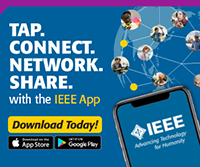
Let's stay connected.
Download today
2022 SURE/SROP Research Projects in ECE
Directions: Below are listed the most recent descriptions of 2022 Summer Undergraduate Research in Engineering (SURE) and Summer Research Opportunity Program (SROP) projects available in Electrical and Computer Engineering (ECE). Please consider this list carefully before applying to the SURE or SROP program. You are welcome to contact faculty if you have additional, specific questions regarding these projects.
*IMPORTANT*: In addition to their online application, SURE applicants for ECE projects must also submit a resume and statement explaining their interest in and qualifications for the project that most interests them, including why they wa7nt to work on the project, the relevant skills they bring, and what they expect from their experience. The statement should be no longer than one page (12 point font and 1” margins) and must be uploaded in “other” at the bottom of the online application. Applications without this information may not be considered. Please include your name and UMID on all documents submitted.
SROP applicants for ECE projects should follow the specific directions outlined in the online application.
Applied Electromagnetics & RF Circuits
Ece project 1: metasurface-based antenna and lens systems.
Faculty Mentor :

Anthony Grbic [email protected]
Course format: Hybrid
Prerequisites : EECS 230 required. EECS 330 preferred.
Description : The research area of metamaterials has captured the imagination of scientists and engineers over the past two decades by allowing unprecedented control of electromagnetic waves. The extreme manipulation of electromagnetic waves has been made possible by the fine spatial control and wide range of material properties that can be attained through subwavelength structuring/patterning. Research in this area has resulted in devices which overcome the diffraction limit, render objects invisible, and even break time reversal symmetry. It has also led to flattened and conformal optical systems and ultra-thin antennas. Electromagnetic metasurfaces are finely patterned surfaces whose intricate patterns/textures dictate their electromagnetic properties. Conventional field-shaping devices, such as lenses in prescription eye glasses or a magnifying glass, require thickness (propagation length) to manipulate electromagnetic waves through interference. In contrast, metasurfaces manipulate electromagnetic waves across ultra-thin thicknesses through surface interactions. In this project, the student researcher will analyze, characterize and design metasurface-based antennas and lens systems, and test experimental prototypes at microwave/millimeter-wave frequencies. These prototypes will be fabricated using additive manufacturing techniques. The student will become well versed in industry-standard microwave/electromagnetic CAD packages. They will use these packages to simulate metasurface designs, and develop their own metasurfaces. The metasurfaces will be characterized in the lab using a Gaussian beam measurement system. The student will study wave propagation and develop analytical/theoretical models for complex 2D structures. They will employ modern techniques for the synthesis of microwave and millimeter-wave devices.
ECE Project 2: Space-Time Varying RF Circuits
Prerequisites : EECS 215, EECS 216, & EECS 230.
Description : Space-time modulation has attracted renewed interest within the fields of radio frequency (RF) circuits, applied electromagnetics and optics in recent years. Progress in the availability and performance of tunable semi-conductor devices as well as electro-/magneto-optic, phase change, and 2D materials have drawn researchers to examine the modulation of electronic circuits and electromagnetic/optical devices in both space and time. Space-time modulation enables filtering (n-path circuits), frequency conversion, parametric amplification, and more recently non-reciprocity (one-way transmission). In this project, the student will develop an in-depth understanding of high frequency circuits, as well as methods to analyze time-modulated and space-time modulated RF circuits. He/she will then apply this knowledge to the realization of novel RF components such as sub-harmonic frequency translators, and magnet-free isolators and circulators. The student will gain a working knowledge of harmonic balance circuit solvers and RF CAD packages, as well as hands-on microwave measurement and high frequency circuit characterization experience. The student will work alongside graduate researchers to develop time and space-time modulated circuits and systems. They will develop space-time modulated RF circuits for various wireless applications relevant to 5G wireless systems, full duplex communications, and radar.
Computer Vision
Ece project 3: detecting fake images.
Faculty Mentor:

Andrew Owens [email protected]
Course format: In person
Prerequisites: EECS 442 (or equivalent)
Description: Computer vision researchers face a dilemma: as their methods improve, so do the tools for malicious image manipulation. For this project, we will develop new methods for detecting manipulated images and video, such as “deep fake” face swap videos. These methods will be based on unsupervised learning, and will be designed to generalize to never-before-seen image generation methods.
Control Systems
Ece project 4: safe and adaptive control and path planning.

Necmiye Ozay [email protected]
Prerequisites : Strong analytical skills, knowledge of linear algebra and differential equations, programming experience in MATLAB and Python.
Description: Resilience and adaptation are essential for safety-critical systems that are expected to achieve complicated tasks. The goal of this project is to implement a robust and adaptive controllers on a small quadrotor system or on a Kinova arm with possibly complicated nonlinear dynamics. The student will be responsible for implementing the control and path following algorithms on hardware. Moreover, we will study generalizations of the uncertainty descriptions used to compute a safety envelope around the planned path. Time-permitting, we will also investigate the effects of nonlinear dynamics and how simpler dynamics can be used for planning while still guaranteeing that the nonlinear model can respect the safety envelopes.
ECE Project 5: Obfuscating Dynamic Information for Ensuring Privacy of Cyber and Cyber-Physical Control Systems
Faculty Mentors:

Stéphane Lafortune [email protected]
Prerequisites : Programming experience in Python highly recommended; experience with algorithm development and coding preferable
Description : We are developing methodologies for privacy enforcement in cyber and cyber-physical systems based on the technique of obfuscation, as described at https://wiki.eecs.umich.edu/obfuscation / We use formal methods to automatically synthesize obfuscation schemes that are simultaneously secure to eavesdroppers yet maintain utility to legitimate recipients with access to the obfuscation strategy. The student will work in collaboration with a graduate student to develop and implement privacy-enforcement frameworks using techniques from reactive synthesis. The student will also evaluate these methods by developing applications to networked cyber and cyber-physical systems. The software to be developed will be integrated into our tool MDESops at https://gitlab.eecs.umich.edu/M-DES-tools The mode of operation (in person/hybrid/remote) can be adjusted based on the student’s preference.
Embedded Systems
Ece project 6: energy harvesting for internet of things applications.

Alanson Sample [email protected]
Prerequisites : Preferred EECS 311 or EECS 373.
Description : This project encompasses a number of efforts at developing energy harvesting, battery free sensing systems that can be easily embedded into everyday objects and thus allowing for near perpetual operation. Topics include ambient energy harvesting techniques, platform architecture and power management, and debugging tools that deal with intermittent power. SURE students will work with faculty and graduate student mentors to create a fully working end-to-end system.
ECE Project 7: Machine Learning for Robot Motion Planning

Dmitry Berenson [email protected]
Prerequisites : EECS 281 and EECS 445.
Description : This project focuses on exploring machine learning methods for use in robot motion planning. The project will begin by implementing and testing existing baseline algorithms for learning dynamics models and constraints for use by a motion planner. Then we will explore how to build and improve on the state-of-the-art methods to enable faster and more accurate planning of robot motion. Example applications will include manipulating deformable objects such as cloth and rope.
Signal & Image Processing and Machine Learning
Ece project 8: reinforcement learning algorithms for the google research football environment.

Lei Ying [email protected]
Course format: Remote
Prerequisites : Familiar with Python, PyTorch (or Tensorflow). Familiar with RL algorithms such as Deep Q-learning and Deep Policy-Gradient algorithms and their implementations.
Description: The objective of this project is to develop single-agent and multi-agent RL algorithms for the Google Research Football environment. Students involved in the project will work with PhD students to develop new RL algorithms and evaluate them.
Solid State & Nanotechnology
Ece project 9: structural characterization of (in,al,ga)n.

Elaheh Ahmadi [email protected]
Prerequisites : Some basic understanding of semiconductors.
Description: In this project, the SURE student will help with structural characterization of (In,Al,Ga)N films. This includes performing atomic force microscopy (AFM), X-ray diffraction (XRD), and scanning electron microscope (SEM) on samples prepared by the graduate student. The student needs to have some basic understanding of semiconductors. Some experience with material characterization is preferred.
ECE Project 10: Electrical characterization of Ga 2 O 3 based high power devices
Prerequisites : EECS 321 or similar courses.
Description: The need for efficient power generation, distribution, and delivery is quickly expanding in different sectors of industry, including transportation, industrial automation, and renewable energy. Power electronics is at the heart of this industrial revolution, which can be found in various applications ranging from servers, solar inverters, electric vehicles, and motor servos in industrial robotics. In addition, we are facing an urgent need for new device technologies to manage electrical power in the 2-100 kV voltage range, which is required in many advanced systems, including distributed grid systems, high-speed train and energy-intensive industrial systems. The breakdown voltage of Si-based devices is limited due to small bandgap of silicon and low critical electric field. Recently, wide bandgap ß-Ga 2 O 3 has become a promising semiconductor material for high power applications. In this project, the undergraduate student will work with PhD students in the group and help them with characterization of Ga 2 O 3 devices.
ECE Project 11: Artificial Photosynthesis

Zetian Mi [email protected]
Prerequisites : None
Description: This project is related to the design, synthesis, and characterization of semiconductor nanostructures for artificial photosynthesis production of clean fuels directly from sunlight and carbon dioxide. The student will gain insight and contribute to the development of state of the art of solar energy devices and systems. This is a highly interdisciplinary project, and the student will have the opportunity to work with experts in electrical engineering, chemical engineering, and materials science and engineering.
ECE Project 12: Ultraviolet-C Light Emitting Diodes
Description: This project is related to the research and development of UV-C (<280 nm) LEDs, which are critically important for water purification, disinfection, and medical diagnostics. Students involved in this project will work together with PhD students on the design and characterization of semiconductor nanostructures, as well as the processing and packaging of UV-C LED devices and device testing.
ECE Project 13: Characterization of new ultra wide bandgap semiconductors

Becky Peterson [email protected]
Prerequisites: EECS 320 or MSE 242.
Description: To combat climate change, it is crucial to increase the efficiency of power electronics. We are developing new semiconductors with ultra-wide bandgaps that are suitable for these applications. In this project, the SURE student will focus on characterization of materials and electrical properties of new semiconductors. You will work with a team of graduate students who will deposit the semiconductor layers. SURE activities will include materials and electrical characterization of the deposited thin films. The student should have a basic understand of semiconductors. A strong interest and aptitude in doing hands-on lab work is required.
ECE Project 14: Circuit models for thin film transistors
Prerequisites: Any of the following: EECS 311, 312, 320 or MSE 400
Description: One of the advancing areas in integrated circuit fabrication is the three-dimensional integration of additional electronics on top of the base layer of silicon transistors. My group has developed thin film transistors that can be directly integrated on top of silicon ICs. In this project, the SURE student will develop device behavioral models to match the measured experimental data from these transistors which are made by a graduate student. The ultimate goal is to use these models in the Cadence Simulation Environment to design circuits. The SURE student should have a basic understanding of the current-voltage characteristics of transistors, and should have an interest in performing device and circuit modeling.
See past SURE/SROP Projects
- List of Projects for 2021
- List of Projects for 2020
- List of Projects for 2019
- Undergraduate Opportunities
Getting started in research
There are a number of ways to get started in research. Here are a few starting points:
- In general, you will have the most success in finding someone to supervise your work if you choose a professor who taught a course in which you got a very high grade.
- Read the professor's research web page before your initial meeting.
- Many professors also look for computer experience since a lot of research involves computer simulations. Therefore, brush up on your computer skills! If you're really serious about doing research, you may find CSE 373, Data Structures and Algorithms, a particularly useful course to take.
- Some professors advertise projects that are looking for students. Look through their web pages and/or see if there are flyers on their doors.
Research for Credit (EE 490/499)
Students can earn two types of credit for EE research: EE 490 (CR/NC), or EE 499 (graded). A maximum of 10 credits of EE 499 (not 490) can count toward the EE elective area. EE 490 or 499 represents research or a design project carried out under the supervision of a faculty sponsor. Students may register for between 2 - 5 credits of EE 499 each quarter; the precise number of credits is determined by the student and the faculty supervisor and is dependent on the amount of work to be carried out. Each credit generally represents between three and five hours of work each week. To register for these credits, please pick up an "EE 490/499 Approval for Undergraduate Research and Special Projects" form from the Advising Office, obtain a faculty signature and turn in your signed approval form to Advising for an entry code.
Click here to view a list of UWEE Research Projects Looking for Students
Research opportunities outside of EE
UW Undergraduate Research Program College of Engineering Research Experience for Undergrads (REU) WSGC Summer Undergraduate Research Program (Washington Space Grant Consortium) National Science Foundation
Once you get started in a research project, we encourage you to submit your research results to the prestigious UW Undergraduate Research Symposium .
If you have questions about undergraduate research, you can contact anyone on the EE Undergraduate Research Committee: Alex Mamishev , Chair Michael Hochberg Shwetak Patel Georg Seelig
Updates or corrections to this page should be sent to [email protected] .
- Research Areas
- Research Labs
- Current Faculty Research
- Tech report Series
- Research Colloquium
- Office of the Chair
- Faculty Awards
- Advisory Board
- Department History
- Affiliate faculty
- Adjunct faculty
- Emeritus faculty
- Grad students
- Visiting researchers
- Undergraduate
- Master's & Ph.D.
- Professional Master's Program
- Non-Degree Options
- Course Info
- Class Home Pages
- Administration
- Calendars & Scheduling
- Payroll & Human Resources
- Research Management
- Teaching & Academics
- Events Calendar
- Department News
- Dean Lytle Lecture Series
- Research Review: EEK
- Newsletter: The Integrator
- Corporate Affiliates Program
- Work with Faculty
- Work with Students
- CAP Members
- Industry Events
- Alumni Profiles
- Class Notes
- Keep in Touch


100+ Recent & Hot Electrical Engineering Research Topics For Students [2024 Updated]
Electrical engineering research topics are good for upgrading your engineering skills. It helps to modify the student’s knowledge as per the technology we use daily, from phones to computers to appliances. Researchers in this field explore new ideas to improve how electricity powers our lives. Here, we cover all research topics that make our devices smarter, connections faster, and energy cleaner.
Imagine a future where a robot can understand voice commands or traffic lights automatically adjust based on real-time conditions. Electrical engineering research brings science fiction to reality! Topics like artificial intelligence, wireless communication, renewable energy, and electronics design are critical for innovation.
In simple words, we find easy ways for electricity to solve problems. How can solar panels provide cleaner power? How do robot vacuum cleaners know when to turn? The core electric engineering research topics for students, whether from high school, college student, etc. These topics are good to use for all students.
The world of electrical engineering shapes the appliances, lights, gadgets, and technologies we rely on daily. From allowing phones to access the internet to powering cities through solar grids, these topics merge electricity with innovation. With rapid technological change, the brightest ideas are yet to be discovered.
You May Also Know: Civil Engineering Research Topics For Undergraduates
Table of Contents
What Are Electrical Engineering Research Topics?
Electrical engineering research looks at many topics. These topics help find new ways to use electricity and circuits. The goal is to improve lives through technology and systems.
Some common electrical engineering research topics are power and energy. Researchers may work on devices that capture renewable power from the sun and wind. They find ways to store and use energy efficiently in homes. Other topics include systems to transfer electricity safely to homes and appliances. Some researchers build smart controllers to automate machines around us.
Another common research area is communication technologies. These allow devices to ‘talk’ to each other wirelessly. Topics include developing fast internet networks, smart Bluetooth devices, and GPS systems.
Other topics focus on building tiny electronic chips inside computers and phones. Researchers also work on voice technologies, self-driving cars, drones, and more.
In essence, electrical engineering researchers focus on a wide variety of subjects. Their aim is to find innovative ways to harness electricity and circuits. This drives the evolution of appliances, devices, networks, and overall technology. Research in the field ultimately seeks to improve how we live globally.
How Can I Find Good Electrical Engineering Research Topic?
Here are some tips to help you find a good electrical engineering research topic:

- Look at emerging technologies and trends. Areas like renewable energy, robotics, artificial intelligence, the Internet of Things (IoT), etc, have a lot of interesting problems to solve. These electrical engineering research topics offer great scope for innovation.
- Talk to professors and industry experts. They are most updated on cutting-edge advancements and can suggest ideas based on current gaps and needs. Discussing with them can help align your interests to impactful topics.
- Read the latest research papers in reputed IEEE journals like Transactions on Power Systems, Transactions on Communications, etc. Identify open research questions and new concepts that need further investigation.
- Attend seminars and conferences in your subfield of interest. Being aware of the latest findings and debates will lead you to potential topics.
- Identify technology problems around you that need electrical engineering solutions, like improving the efficiency of motors, smarter energy systems, better batteries, etc. Ground your topic in real-world relevance.
- Explore interdisciplinary topics combining electrical engineering with fields like computer science, biotech, physics, etc. This can lead to greater impact and uniqueness.
What Are The Some Recent Topics For Research In Electrical Engineering?
Here are some of the recent popular an hottest electrical engineering research topics in electrical engineering presented below:
100+ Recent & Hot Electrical Engineering Research Topics For Students
Here are the hottest topics for research in Electrical Engineering (EE) currently:
Power Systems and Renewable Energy Research Topics
- Resilient Microgrid Design for Disaster Response
- Distributed Energy Storage Systems in Smart Grids
- Real-time Simulation of Power Systems
- Enhanced Fault Detection in Power Distribution Networks
- Renewable Energy Integration Challenges in Developing Countries
- Electrification of Rural Areas using Renewable Energy Sources
- Cyber-Physical Attacks in Power Grids and Countermeasures
- Hybrid Renewable Energy Systems for Remote Locations
- Dynamic Line Rating for Improved Transmission Line Utilization
- Power System State Estimation using Machine Learning
- Intelligent Energy Management for Electric Vehicles
- Grid Integration of Wave and Tidal Energy
- Advanced Synchronization Techniques in Power Systems
- Reliability and Resilience Metrics for Power Distribution Systems
- Advanced Monitoring and Control of Photovoltaic Systems
- Power Electronics for High Voltage Direct Current (HVDC) Systems
- Voltage Stability Assessment in Power Networks
- Smart Buildings and Their Role in Demand Response
- Innovative Approaches for Power Grid Restoration
- Advanced Techniques for Power System Protection
Communications and Signal Processing Electrical Engineering Research Topics
- Cognitive Radio for Spectrum Sharing in 6G Networks
- Massive MIMO Systems for Next-Generation Wireless Communication
- Quantum Communication Networks and Protocols
- Signal Processing for Non-Invasive Brain-Computer Interfaces
- Visible Light Communication for Indoor Positioning
- Dynamic Spectrum Access in Cognitive Radio Networks
- Machine Learning Approaches for Wireless Channel Modeling
- Ultra-Reliable Low Latency Communication (URLLC) in 5G
- Cooperative Communication Strategies for Mobile Ad-Hoc Networks
- Millimeter Wave Communication Systems for 6G
- AI-Enhanced Beamforming in Wireless Networks
- Spectrum Sensing Techniques in Cognitive Radio Networks
- Underwater Acoustic Communication Systems
- Fog Computing for Low-Latency IoT Applications
- Intelligent Antenna Systems for 5G and Beyond
- Cross-Layer Optimization in Wireless Sensor Networks
- Information-Centric Networking (ICN) for Future Internet
- Quantum Key Distribution for Secure Wireless Communication
- 6G Network Slicing and Virtualization
- Energy-Efficient Communication Protocols for IoT Devices
- UAV-Assisted Communication Networks for Disaster Response
- Non-Orthogonal Multiple Access (NOMA) for 5G Networks
- Green Communication Technologies for Sustainable Networks
- Blockchain for Secure and Decentralized Communication
- Deep Learning for Wireless Channel Prediction
- Advanced Error Control Coding Techniques for Wireless Channels
- Terahertz Communication for Ultra-High Data Rates
- Intelligent Spectrum Management in Cognitive Radio Networks
- Satellite Communication Systems for Global Connectivity
- 3D Printing Antenna Technologies for Customized Devices
Control Systems and Robotics Research Topics
- Swarm Robotics for Cooperative Tasks
- Humanoid Robots for Hazardous Environment Exploration
- Cyber-Physical Systems in Industry 4.0
- Learning-Based Control for Robotic Manipulation
- Neuro-Fuzzy Control Systems for Complex Processes
- Explainable AI for Control System Decision-Making
- Autonomous Vehicles and Traffic Management Systems
- Cooperative Control of Multi-Agent Systems
- Soft Robotics for Human Interaction
- Model Predictive Control for Energy-Efficient Buildings
- Haptic Feedback Systems in Virtual Reality Environments
- Intelligent Transportation Systems and Traffic Control
- Biomimetic Robotic Systems for Environmental Monitoring
- Real-Time Adaptive Control Systems for Dynamic Processes
- Augmented Reality in Control System Visualization
- Fault-Tolerant Control Systems in Robotics
- Human-Machine Collaboration in Industrial Automation
- Swarm Intelligence for Smart Grid Management
- Control Strategies for Unmanned Aerial Vehicles (UAVs)
- Model-Free Reinforcement Learning for Control Systems
- Adaptive Cruise Control Systems in Autonomous Vehicles
- Advanced Navigation Systems for Autonomous Robots
- Wearable Robotics for Rehabilitation
- Predictive Maintenance Systems using Machine Learning
- Smart Control of Home Automation Systems
- Human-Computer Interaction in Virtual Reality Environments
- Brain-Inspired Control Algorithms for Robotics
- Machine Learning for Anomaly Detection in Control Systems
- Autonomous Robotic Inspection of Critical Infrastructures
- Intelligent Traffic Signal Control Systems
Electronics and VLSI Design Research Topics
- Neuromorphic Hardware for AI Applications
- Quantum-dot Cellular Automata for Low-Power Circuits
- 3D IC Integration and Design Challenges
- Energy-Efficient Reconfigurable Computing Architectures
- Non-Volatile Memory Technologies for Future Storage
- Neuromorphic Computing Architectures for Edge Devices
- Advanced Materials for Semiconductor Devices
- Silicon Photonics for High-Speed Data Transmission
- Hardware Security in VLSI Design
- Energy-Efficient Analog and Mixed-Signal Circuits
- Spintronics and Magnetoresistive Devices
- Quantum Computing Hardware Design
- Reversible Logic Circuit Design for Low Power
- Wearable Electronics and Flexible Substrates
- Bio-Inspired Computing Hardware
- Emerging Memory Technologies (e.g., Resistive RAM)
- Low-Power Design Techniques for Internet of Things (IoT)
- Hardware Trojans Detection and Prevention
- Energy Harvesting Circuits for Self-Powered Devices
- Advanced Techniques for FPGA-Based Prototyping
What Are Some Cool But Easy Research Paper Topics For Electrical Engineering Students?
Here are some cool and easy research paper topics for electrical engineering students:
Current Electrical Engineering Research Topics PDF
Here is the latest Electrical Engineering Research Topics for students :
What Are Current PhD Research Topics In Electrical Engineering?
Here are some of the currently popular PhD research topics in electrical engineering:
Exploring electrical engineering research topics leads to technologies that empower our modern lives. The field seeks to harness the power of electricity and circuits to drive innovation.
Some key areas researchers focus on include cleaner, smarter energy systems. Advanced tools help capture and distribute electricity from renewable sources like solar and wind. Other systems make appliances and homes more energy-efficient. This allows sustainable power usage globally.
Research also enables various communication technologies . These help devices connect and share data seamlessly around the world. Topics in this area lead to faster wireless networks, intelligent sensors and sophisticated consumer electronics.
Various control systems and robotics topics facilitate automated, self-driving vehicles, drones and smart machinery. While signal processing research realizes advanced wearable devices, imaging techniques and efficient AI.
Cutting across domains, artificial intelligence promises to revolutionize electrical systems by making them highly responsive, predictive and accurate. Researchers also work extensively on using computation power effectively.
The vibrant world of electrical engineering research is shaping smarter grids, appliances, machineries and cities. The ultimate mission is enhancing quality of life by optimally harnessing electricity and digital systems to build a sustainable, highly connected future.
Related Posts

100+ Most Qualitative Research Topics For High School Students In 2024

100+ Most Interesting Google Scholar Research Topics For Students [Updated 2024]
Leave a comment cancel reply.
Your email address will not be published. Required fields are marked *
Save my name, email, and website in this browser for the next time I comment.
Visit the Health Advisories website for the latest vaccination and mask information and to Report a Case.
Questions about FAFSA and CADAA?
Visit our Financial Aid and Scholarship Office for updated information, workshops and FAQs.
Electrical Engineering
Project and Thesis Guidelines
Our department is determined to help you complete the best work possible for your Project or Thesis. We've provided guidelines for the structure of your Proposal and your Project Report or Thesis.
We also want to help you find the research that best suits your interests. Head to the bottom of this page to see what projects each professor is currently working on and learn how you can join their research.
Master Project/Thesis Proposal Guidelines
This information applies to both EE 297A and EE 299A. A Proposal should have eight components: Title and Signature page, Abstract, Objectives, Introduction, Proposed Work, Summary and Conclusion, Proposed Schedule, and References. Find the guidelines for preparing these components below:
Make sure to use the title pages provided in the PDF below when creating your Master Project/Thesis Proposal. Use the template on page two for the project and on page three for thesis
Download the Proposal Cover Pages [pdf]
Note: The file contains one title page for Projects and one for Theses. Make sure you use the template on page two for the Project and on page three for Thesis
Write one or two paragraphs on each of these points: the motivation, tasks, significance of the project, and expected results. The abstract should not exceed 150 words.
Present what the proposed work plans to accomplish.
Discuss the motivation and the need for the proposed work. Present background information on the proposed work and describe current research in the subject area.
Present specifics about the proposed work and what approaches you plan to investigate or implement. Give enough technical details to show that you have thought out your proposed work well.
Summarize the need for the proposed work and the tasks needed to complete it. Discuss the significance and impact of the work you're presenting for your project or thesis. It is also helpful to discuss the possibilities of extending the proposed work.
Break your proposed work into several tasks and provide a timeline for the completion of each part. The final task will be the Master Project/Thesis Presentation and Report.
List sources cited in the body of the Proposal. In the Proposal, number your references consecutively and enclose the reference number in square brackets, e.g., “Pekmestzi [14] suggested using complex binary digit.”
The reference sources cited in this section should be in IEEE reference format, e.g., K. Z. Pekmestzi and G. D. Papadopoulos, “Cellular Two's Complement Serial-parallel Pipeline Multiplier,” Radio and Electronic Engineering, Vol. 49, pp. 575-580, 1979.
Guideline for Writing M.S. Project Report
You must follow the guidelines below when preparing your master project reports (unless your project advisor requires you to use a different style.) The style used should be generally similar to that of technical papers in the IEEE Transactions on Computers.
The text should be double-spaced, on 8.5x11 paper size, with page margins of 1 inch for top, bottom, right, and 1.25 inches for left. The volume should be bound professionally.
You must use the cover page provided below for your project report; otherwise, the department will reject your project.
Download the Project Report Cover Page [pdf]
The abstract should not exceed 150 words and briefly include the project's motivation, tasks, significance, and results.
If you received significant assistance from someone, you could mention their name here.
If you received funds that allowed you to carry out your work, mention the source's name. For example: “The Air Force Office of Scientific Research, Directorate of Information Sciences sponsored the research work described in this report under Grant AF-AFORS-24-92.”
Lead readers into the subject. Discuss the motivation and need for the project and the objective of your work—present background information on the project and review previous and current research in the subject area.
Describe the actual work you have done. Break your report into major sections, each with its own heading to better organize your research. Present enough details so that readers can continue your work if necessary. Give derivations, design flow charts, algorithms, or schematics. Describe significant simulations and experiments.
If the project involves extensive software coding, present the design hierarchy by highlighting code segments or using pseudo code. Note that some derivations, complete software code, simulation data, or experimental data are best put in the appendices to prevent cluttering of the report.
Carefully review what you have done and what your results have been. In particular, restate the significance of your work. Discuss how others could continue the research you have done for your project.
The reference sources cited in this section should be in IEEE reference format. For example:
[1] K. Z. Pekmestzi and G. D. Papadopoulos, “Cellular Two's Complement Serial-parallel Pipeline Multiplier,” Radio and Electronic Engineering, Vol. 49, pp. 575-580, 1979.
Use 8.5x11 size paper. Ensure you set 1-inch margin space for the top, bottom, right, and 1.25 inches for the left margin.
The order of the Sections is Title and Signature, Abstract, Acknowledgement (if any), Table of Contents, Introduction, Report Contents, Summary and Conclusion, and References.
Each of the eight sections must start a new page.
The main report's page number starts from the “Introduction” section. Pages are then continuously numbered through the References section.
Number pages separately for the Appendices (A1, A2 ……for Appendix A, B1, B2… for Appendix B…...)
You must place the page numbers at the bottom center of the page and in 10-point font.
Use “Time New Roman” or an equivalent font in size 12 for the report body, starting from the Abstract page. Exceptions exist for equations, the command script files, and outputs from the software tools and computers.
Use Courier New or an equivalent font in size 10 for the command script files, outputs from the software tools/computers.
Except for the Title and Signature page, all text in the report must be fully justified and double-spaced.
The abstract is to be in fully justified italicized text.
All printed material, including text, illustrations, and charts, must be kept within the print area of the page. Do not let your content extend into the margins on any side of the page.
Start each paragraph with TAB.
Figures and tables must be numbered separately and capitalize only the first letter of the first word of each. For example: “Figure 1. Hardware block”, “Table 1. Input test pattern”.
Center figure captions are below their respective figures. Similarly, center table titles are to above the appropriate tables.
First-order headings (e.g., “ 1. Introduction” ) must be boldface, initially capitalized, and flush left. Use a period after the heading number, not a colon.
You must underline, capitalize, and flush left the second-order headings (e.g., “2.1 Features”). Follow the same rule for third-order and fourth-order headings. Note: Using more than second-order headings is discouraged.
Use footnotes sparingly and place them at the bottom of the page which they reference. Use “Times New Roman” or an equivalent font in 10-point size, single-spaced.
Master Thesis Guidelines
You can find all guideline information about the Graduate Thesis by visiting the College of Graduate Studies’ University’s Master Thesis Guidelines webpage.
Faculty Research Projects
Dr. chang choo.
Research Interests: FPGA Design of Deep Learning Accelerator, Al Edge Computing, Computer Vision, Image Processing, Sensor Fusion for Autonomous Vehicles.
Looking for: Graduate Students Contact Notes: Please contact me in your second semester at SJSU.
Current Research Projects:
- Research Area: FPGA Deep Learning
- Prerequisite(s): EE 275 and/or EE 278
- Research Area: Machine Learning
- Prerequisite(s): EE 258 and/or EE 259
Dr. Sotoudeh Hamedi-Hagh
Research Interests: Design of RF, Analog, and Mixed-Signal Integrated Circuits for Wireless and Wireline Communication System
Looking for: Graduate students with high academic standing and motivation Contact Notes: Contact me as soon as you officially register at SJSU. The earlier you start working on EE 297/299, the more you will learn and achieve.
- Research Area: Analog IC Design
- Prerequisite(s): Send me your resume for an interview.
- Research Area: Mixed-Signal IC Design
- Prerequisite(s): Send me your resume for an interview.
- Research Area: RF IC Design
- Prerequisite(s): Send me your resume for an interview
Dr. Lili He
Research Interests: Semiconductor Device and Materials, Nano-electronics and Nanotechnology, Solar Cell, and System.
Looking for: Graduate Students Contact Notes: Contact me when ready for research.
- Research Area: Nanoelectronics
- Prerequisite(s): EE 221
- Research Area: Solar cell and system
Dr. Binh Le
Research Interests: Digital and Embedded Systems, System on Chip, Domain-Specific Computer Architecture, Energy-Efficient Nanosystems, Neural Networks and Applications, Carbon Nanotube, Brain-Machine Interface Systems.
- Research Area: IP-Core Based SoC Design and Verification
Dr. Thuy T. Le
Research Interests: Design and Verification of Arithmetic Circuits, ASIC, System on Chip, Embedded Systems, High-Performance Systems, Quantum Computer, Computational Engineering.
Looking for: Graduate Students Contact Notes: Contact me at the beginning of your second semester at SJSU.
- Research Area:
- Prerequisite(s): EE 271 and/or EE 287
- Prerequisite(s): EE 272 and/or EE 279
Dr. Robert Morelos-Zaragoza
Research Interests: Error Correcting Coding(ECC) Techniques, Digital Signal Processing, Software-Defined Radio, Radio-Frequency Identification (RFID) Systems.
Looking for: Graduate Students with strong mathematical background. Contact Notes: Contact me as soon as you decide to work on a research project.
- Research Area: Wireless Communications, Signal Processing
- Prerequisite(s): EE 251, EE 265
- Research Area: Error Correcting Coding
- Prerequisite(s): EE 251
Dr. Birsen Sirkeci
Research Interests: Wireless Communication, Sensor Networks, Cognitive Radios, Statistical Signal Processing, and Applications of Machine Learning in Cognitive Radios & Communications.
- Research Area: Communications, Signal Processing
- Prerequisite(s): EE 250, EE 251 and/or EE 265
- Prerequisite(s): EE 258 and/or EE 257
Dr. Hiu-Yung Wong
Research Interests: Quantum Computing, Device Physics and Simulation, Cryogenic Electronics, Machine Learning, Analog and Power (WBG) Electronics, Neuromorphic Computing.
Looking for: Undergraduate or Graduate Students Contact Notes: Contact me when ready for research.
- Research Area: TCAD / Simulation
- Prerequisite(s): Interest in ML
- Research Area: Advanced Device Physics
- Prerequisite(s): Taking/taken EE128 or EE 221 or equivalent
- Research Area: Analog Circuits and Neuromorphic computing
- Prerequisite(s): Taking/taken EE124 or EE223 or equivalent
- Research Area: Quantum Computing
- Prerequisite(s): Taking/taken EE225 or equivalent or have a strong interest in this area
* Research Area: Semiconductor * Prerequisite(s): None
Dr. Juzi Zhao
Research Interests: Optical Network, Network Security, IoT, Data Center Architecture and Networks, Cloud Computing, and Networking.
Looking for: Graduate Students Contact Notes: Contact me when ready for research.
- Research Area: Network Security
- Prerequisite(s): EE 209
- Research Area: Optical Networks
- Prerequisite(s): EE 281
17+ Electrical Project Ideas For Engineering Students In 2023

In the field of electrical engineering, projects play an essential role in gaining practical knowledge and polishing your technical skills. Electrical engineering projects allow students to apply theoretical concepts to real-world scenarios, encouraging creativity, problem-solving abilities, and hands-on experience.
In this blog, we will discuss what electrical engineering projects is and provide a step-by-step guide on how to choose the right project for yourself. Additionally, we will explore project ideas in various electrical engineering project ideas categories to inspire and guide you in your project selection process.
Stay tuned to know some exciting electrical project ideas.
What Are Electrical Engineering Projects?
Table of Contents
Electrical engineering projects are practical assignments or tasks that engineering students undertake to further their understanding of electrical principles, systems, and technologies. These projects allow students to apply their knowledge to design, build, and test electrical systems or components. Electrical engineering projects cover various areas such as power generation, electronics, circuits, power systems, automation, and robotics.
Steps on How to Choose an Electrical Project Ideas
Choosing the right electrical project ideas for engineering students can be an exciting but challenging task. To help you make better decision, here are the steps to guide you in selecting a suitable project:
1. Identify Your Interests And Strengths
Consider the areas of electrical engineering that interest you the most. Are you fascinated by power systems, electronics, or automation? Assess your strengths and skills to determine which projects align with your expertise.
2. Research Project Ideas
Explore various sources like academic journals, engineering forums, and online resources to gather project ideas. Look for projects that align with your interests and offer opportunities for learning and growth.
3. Consult With Faculty And Experts
Contact your professors, mentors, or industry professionals for guidance and advice. They can provide insights into current trends, suggest project ideas, and help narrow your options.
4. Consider Available Resources
Assess the resources available, including laboratory equipment, tools, and materials. Ensure that your chosen project can be reasonably accomplished within the available resources.
5. Set Realistic Goals
Set realistic goals and objectives for your project. Break down the tasks into manageable steps and establish a timeline to keep yourself on track throughout the project.
6. Evaluate The Complexity
Consider the complexity of the project and its feasibility within the given timeframe. Choose a project that challenges you but is achievable with your current knowledge and resources.
7. Seek Interdisciplinary Projects
Look for projects that incorporate elements from multiple disciplines. Interdisciplinary projects can broaden your understanding and allow you to apply knowledge from different areas of engineering.
8. Seek Guidance From Seniors
Connect with senior students who have already completed their electrical engineering projects. They can provide valuable insights, share their experiences, and offer suggestions based on their project journeys.
9. Consider Practical Applications
Evaluate the practical applications and relevance of the project. Projects that address real-world problems or contribute to existing research areas can be particularly impactful.
10. Finalize Your Decision
After careful consideration, finalize your project selection. Ensure you are enthusiastic about the chosen project and motivated to invest the necessary time and effort into its completion.
Electrical Project Ideas For Engineering Students In 2023
Here are some electrical project ideas for engineering students In 2023:
I. Power Generation Projects
Here are some power generation projects for engineering students In 2023:

1. Solar-Powered Mobile Charger
Design and develop a portable mobile charger that harnesses solar energy to charge electronic devices. This project involves studying solar panels, energy conversion, and developing a circuit to regulate the charging process. You’ll contribute to sustainable energy solutions by building a solar-powered mobile charger.
2. Wind Turbine Generator
Construct a small-scale wind turbine generator to harness wind energy and convert it into electrical energy. This project requires understanding aerodynamics, generator principles, and the design of efficient blades. Implementing this project will give you hands-on experience in renewable energy systems.
3. Hydroelectric Power Generation
Create a model to demonstrate hydroelectric power generation. Study the principles of hydropower, design a water turbine, and generate electricity from flowing water. This project will deepen your understanding of renewable energy sources and power generation techniques.
4. Biomass Power Plant
To produce electricity, design a biomass power plant using organic waste materials such as agricultural residues or wood chips. Explore the process of biomass combustion, power generation, and environmental considerations. This project focuses on sustainable energy solutions and waste management.
5. Geothermal Heat Pump System
Develop a geothermal heat pump system that utilizes the Earth’s natural heat to provide heating and cooling for residential or commercial buildings. Understand geothermal energy, heat exchange mechanisms, and control systems. By implementing this project, you’ll contribute to energy-efficient heating and cooling solutions.
II. Electronics And Circuit Projects
Here are some power generation projects for engineering students In 2023 :

6. Home Automation System
Create a home automation system that enables remote control of household appliances using a mobile app or voice commands. This project integrates sensors, microcontrollers, and communication protocols to build a smart home solution. Develop functionalities like controlling lights, fans, and other electronic devices for enhanced convenience and energy efficiency.
7. Digital Thermometer With Temperature Display
Build a digital thermometer with an LCD that accurately measures and displays the temperature. This project requires an understanding analog-to-digital conversion, sensor interfacing, and coding skills. By developing a digital thermometer, you will learn about temperature measurement and electronic circuit design.
8. Wireless Power Transfer
Design a wireless power transfer system that can charge electronic devices without physical connections. Explore concepts like electromagnetic induction, resonant coupling, and power transmission efficiency. This project focuses on advancing wireless charging technologies.
9. Traffic Light Control System
Develop a traffic light control system that regulates the flow of vehicles at intersections. Understand traffic flow patterns, microcontroller programming, and communication protocols. By implementing this project, you’ll contribute to improving traffic management and safety.
10. Gesture-Controlled Robot
Build a robot that can be controlled through hand gestures. Explore gesture recognition techniques, sensor integration, and motor control. This project combines elements of electronics, robotics, and human-machine interaction.
III. Power Systems Projects
Here are some power systems projects for engineering students In 2023:

11. Power Factor Correction Unit
Design and implement a power factor correction unit to improve power efficiency in electrical systems. This project involves analyzing power factor issues, designing suitable capacitors, and developing a control mechanism. By working on power factor correction, you’ll optimize power consumption and reduce energy wastage.
12. Grid-Tied Solar Inverter
Develop a grid-tied solar inverter that converts solar energy into electricity and feeds it back to the utility grid. This project requires knowledge of power electronics, control systems, and grid synchronization. Implementing a grid-tied solar inverter will give you hands-on experience in renewable energy integration with existing power infrastructure.
13. Fault Detection And Protection System
Create a fault detection and protection system for electrical networks. Study fault types, develop algorithms for fault detection, and design protective relays. This project focuses on enhancing power system reliability and safety.
14. Smart Grid Monitoring System
Build a smart grid monitoring system that collects data from various points in the power grid, analyzes it, and provides real-time insights. Understand communication protocols, data analytics, and visualization techniques. By implementing this project, you will contribute to developing intelligent power grids.
15. Microgrid Implementation
Design and develop a microgrid system that can operate independently or in connection with the main power grid. Explore renewable energy integration, load management, and control strategies. This project emphasizes decentralized power generation and energy resilience.
IV. Automation and Robotics Projects
Here are some automation and robotics projects for engineering students In 2023:

16. Line-Following Robot
Construct a line-following robot that uses sensors to detect and follow a marked path on the ground. This project involves working with microcontrollers, motor control, and sensor integration. Building a line-following robot gives you insights into autonomous navigation and control systems.
17. Automated Irrigation System
Design and develop an automated irrigation system that regulates water flow based on soil moisture levels. This project requires understanding sensor technologies, microcontroller programming, and actuator control. By implementing an automated irrigation system, you’ll contribute to efficient water management in agriculture.
18. Warehouse Automation
Develop an automated system for warehouse operations, including tasks like inventory management, product sorting, and transportation. Understand robotics, machine vision, and control systems. This project focuses on improving efficiency and productivity in logistics.
19. Drone-Based Surveillance System
Build a drone-based surveillance system to monitor and analyze a given area for security purposes. Explore drone flight control, image processing, and data transmission. By implementing this project, you’ll gain insights into drone technology and aerial surveillance.
20. Robotic Arm Control
Design a robotic arm and develop a precise movement and manipulation control system. Understand kinematics, control algorithms, and sensory feedback. This project emphasizes robotic manipulation and automation in industrial settings.
Electrical engineering projects provide a platform for students to apply their knowledge and skills in practical settings. Selecting the right project can enhance your understanding of electrical principles, develop critical thinking abilities, and foster innovation. These are just a few examples of electrical engineering projects in different categories.
Well, choose a project that aligns with your interests, skills, and available resources. Follow the steps that are mentioned in the blog and choose an electrical engineering project that excites you and helps you grow as an engineer.
Related Posts

R vs Matlab: Which one is more powerful and Why?
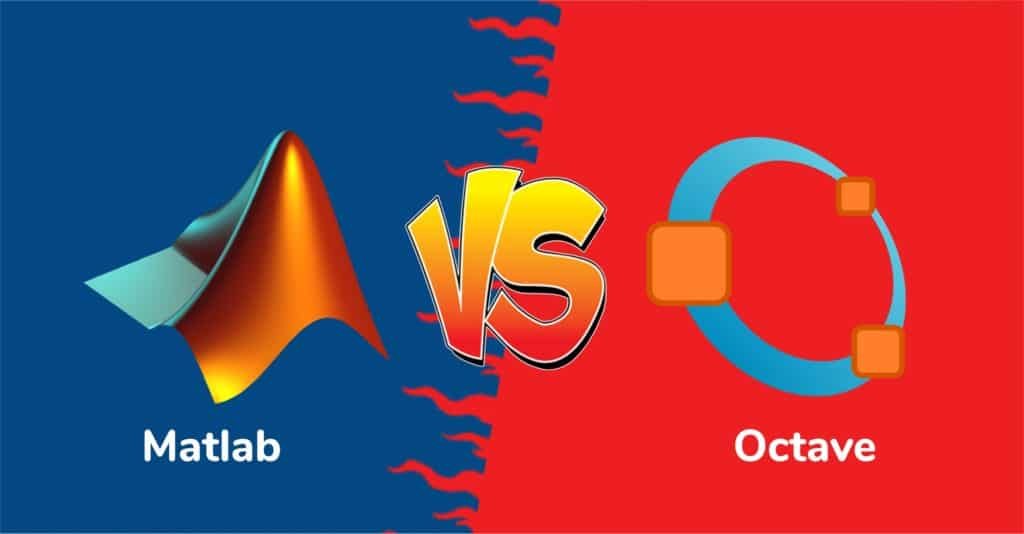
MATLAB vs Octave: All You Need To Know
Electrical and Computer Engineering

Research Projects
Power system area frequency and inertia for multi-area dynamic network reduction, level of difficulty :.
MS Thesis – Student must register for ECE299.
Thesis Supervisor contact info :
Hassan Ghoudjehbaklou, Ph.D., PE, SMIEEE
Principal Engineer, Transmission Planning
San Diego Gas and Electric (SDG&E)
Instructor at UC San Diego (UCSD), UCSD Extension
IEEE: Senior Member, Chair of PES & PELS Chapters, San Diego Section
Email: [email protected]
Background :
Power system frequencies during disturbances and post disturbances are good indicators of stability of the system. On the other hand, the inertia of generating units dictate the oscillation of the rotors, which in turn impact the frequency of the voltages and currents in the system. When reducing a large network, the definition of Area Frequency and estimation of Area Inertia could play important roles.
MS Thesis research proposal:
The main objective of this research is to come up with methodologies for calculating Area Frequency and Inertia that can be applied on actual power system netwrok Phasor Measurements Units (PMU) data. We will then utilize this information to reduce a multi-area transmission network for dynamic stability studies.
Skills required :
At a minimum, some Power system dynamic modeling knowledge, at the level of Swing Equations are required. In addition, proficiency in Matlab programming and strong background in control system & estimation theory would be a plus. (Student and professors involved in the project may have to sign a Non-Disclosure Agreement, NDA, to not disclose the data in any form without prior written approval from the thesis supervisor.)
Multi-terminal lines impedance estimation
Line impedances are important parameters that are used in Planning, Protection Relaying, and operation control, among other areas, and their accuracies could impact day-to-day operating decisions. However, it is well understood that line impedances change under different transmission line loading and operating conditions, including climate changes.
On the other hand, in recent years, a large number of Phasor Measure Units (PMUs) have been deployed in power system utilities around the world. PMUs could provide power system measurements at high sampling rates. Due to limitation of equipment costs and required communication, at present, PMU measurements are mainly available in dense concentration at high voltage transmission systems, while deployment at distribution levels are very scattered.
With high sample rate voltage and current measurements coming from PMUs, the idea is that, one could potentially estimate the changing line impedances in real-time and utilize more accurate impedances in the operational studies and decisions.
The theory of impedance estimation for two terminal lines are straight forward and many researchers have worked on some variations of it. However, in each utility, several 230 kV lines might have 3-terminal configuration and some utilities might even utilize higher number of terminals for several of their 138 kV or 69 kV lines. The idea of this research project is to estimate line impedance of multi-terminal lines in real-time, using PMU measurements. The initial focus of this project would be 230 kV 3 -terminal lines.
Some power system knowledge, at the level of ECE121A, proficiency in Matlab programming, and strong background in control system & estimation theory, such as time series ARMA and Kalman filters, are required. (Student and professors involved in the project may have to sign a Non-Disclosure Agreement, NDA, to not disclose the data in any form without prior written approval from the thesis supervisor.)
Electrical Engineering
Search form.
- Future Students
- Current Students
- Accreditation
- Senior Design
- Scholarships and Funds
- Marketable Skills
- Study Abroad
- M.S. Program
- Ph.D. Program
- Research Overview
- Research Labs
- Research Equipment
- Stay Connected
- Update Your Info
- Order Transcript
- Mission and Vision
- Department History
- Board of Advisors
Electrical Engineering Research
Faculty members and students at the department of Electrical Engineering work together to conduct research across many areas in the field of electrical engineering as well as related fields such as computer science and engineering. These research areas can be divided into three groups.

Communications, Signal Processing and Networking
This group focuses on design and development of advanced communication techniques to provide efficient and robust information transmission over wired and wireless networks.
This group has an extensive collaborative research program with the Computer Science and Engineering Department. Working in concert with academia and industry partners, the group is dedicated to research on:
- information and communication theory
- source and channel coding
- wireless communication and networking
Both undergraduate and graduate levels courses are offered by the faculty members in this group.
The Applied Electromagnetics Laboratory focuses on the domain of applied electromagnetics with applications ranging from developing biomedical devices to designing antennas for various wireless systems. Research topics include:
- Microwave ablation and monitoring
- Self-interference cancellation techniques for in-band full-duplex communications
- Adaptive phased-array antennas for beam-steering applications
- Reconfigurable multi-beam antennas for millimeter-wave communications
The Applied Optics Lab aims at:
- Optical system (imaging and non-imaging) design and modeling, tolerance analysis, and system optimization to improve design for manufacturability.
- Design and fabrication of electro-optic polymer integrated circuits for chemical/biological sensors and optical current sensors (OCS) for smart grid electric distribution system.
The Communications and Signal Processing Laboratory (CSPL) focuses on design and development of advanced communication techniques to provide efficient and robust information transmission over wired and wireless networks. Working in concert with academia and industry partners, CSPL is dedicated to research in coding and information theory; aerial communication and networks; drone system design and applications, especially in emergency response; and wireless sensor networks.
The Embedded Sensing & Processing Systems (ESPS) Laboratory focuses on research in the areas of statistical signal processing, machine learning, real-time embedded systems, and wireless sensor networks with applications in wireless localization and tracking, environmental monitoring, cyber-physical systems, Internet of Things, and artificial intelligence. The overarching goal of our research is to solve real-life system-level challenges through theoretical research in signal processing and machine learning, networking protocol design and analysis, and practical system developments with hardware and software implementations.
The Information Theory and Applications Laboratory focuses on the application of information theory to communications, networking, privacy, security and storage. Current research interests include private information retrieval, index coding, optimality of treating interference as noise, topological interference management, and interference alignment.
The Optimization, Signal Processing, and Control Algorithm Research Lab (O.S.C.A.R.) focuses on fundamental algorithm development at the forefront of machine learning seeking efficient and accurate solutions based in traditional optimization, signal processing and control theory techniques. Current research topics include:
- Classification and Identification
- Image Compression
- Image Super Resolution
- PCA Applications
- STEM Outreach
Systems and Control
This group investigates state of the art research problems in robotics, power systems, and cooperative decentralized systems.
Faculty and students work on autonomous systems including wireless sensor networks, robotic systems, airborne networks, and networks of unattended air vehicles.
Research applications include disaster recovery, search-and-rescue operations conducted by teams of people, surveillance of ground-based targets by fleets of unmanned aerial vehicles and exploration of planetary surfaces by swarms of robots.
The Autonomous Systems Laboratory focuses on information assurance, decision making and video communications aspects in autonomous systems, such as unmanned aerial vehicles (UAVs). This laboratory consists of infrastructure and simulation tools necessary to develop protocols for autonomous systems and to analyze their performance. The laboratory has several UAVs that are being used to develop and test decentralized decision-making and task-scheduling algorithms. The laboratory's infrastructure includes computing and networking equipment suitable for simulating civilian and military applications.
The Control Systems Laboratory focuses on the advancement of control theory and technology with applications to intelligent and autonomous systems. Current research topics include control systems with time delay, unmanned aerial vehicles, deep reinforcement learning based control, and active magnetic bearings.
The Environmental and Ecological Engineering Laboratory integrates environmental modeling, real-time monitoring, and renewable power systems for applications to sustainability. Research topics include food-energy-water nexus, sustainable brackish water desalination systems, land-use change, landscape dynamics, and forest ecology, coupled human-natural systems, watershed and reservoir management, wireless sensor networks and environmental observatories, and global climate change.
The Power Electronics and Renewable Energy (PERE) Laboratory focuses on developing effective power electronics technologies to improve the generation, conversion, and control of electrical energy in smart cities and sustainable energy applications. Research topics include wide-bandgap semiconductor applications, renewable energy conversion technologies, smart grids, distributed energy systems, and electric vehicle grid integration.
RF and Circuit Design
Faculty and students of this group are working on a wide variety of fundamental and applied problems in circuits and systems as well as their applications in communications, networking, geolocation, and vision processing.
This group offers many courses in RF/microwave/millimeter-wave circuit and antenna design at both undergraduate and graduate levels.
Designed circuit components will be implemented either on the board-level or on the chip-level.
The Analog/Mixed-Signal Design and Simulation Lab focuses on design and simulation of analog/mixed-signal AMS) integrated circuits (ICs) for multimedia and IoT security applications. Research topics include:
- Surrogate modeling (metamodeling) of complex IC functional design units
- Hardware/software co-design of secure multimedia digital systems
- High-level behavioral simulation of AMS ICs
- Hardware design of Physically Unclonable Functions (PUFs)
- Embedded system design for the IoT
- Emerging Technology and VLSI Research Lab Faculty: Edgard Munoz-Coreas
The Nanoscale Materials and Devices Lab (NMDL) focuses on emerging devices from low-dimensionality solid-state materials. Research topics include but are not limited to:
- Low-power nanoelectronic devices and circuits
- Photodetectors and optoelectronic devices
- Flexible and printed electronics
- Physical sensors and sensor arrays
- Synthesis of semiconducting selenides and sulphides
- Nanofabrication
The Reconfigurable Computing Laboratory provides infrastructure for electronic design automation, including several workstations with the latest Electronic Design Automation (EDA) software, enabling design and simulation of a range of electronic chip designs. Students have access to EDA software including Cadence, Synopsys, and Xilinx design tool suites. The laboratory supports high quality research activities related to digital design, reconfigurable computing, FPGAs, ASICs, VLSI design, electronic design automation, SoC design, portable computing, and wearable computing.
- Communications and Signal Processing Laboratory
- Embedded Sensing & Processing Systems Laboratory
- Information Theory and Applications Laboratory
- Autonomous Systems Laboratory
- Cyber-Physical Energy Systems Laboratory
- Networked Intelligent Control Systems Laboratory
- Computer Aided Design (CAD) Laboratory
- Integrated Biomedical Circuits and Systems Laboratory (iBioCASL)
Research Home
Laboratories, research faculty, research for students, facilities and equipment use.
UNT's Electrical Engineering labs offer a wide variety of research opportunities and experiences for all of our students.
Institutional labs can be used by any student, with or without faculty supervision, for any projects. As the name suggests, these often double as classrooms.
Research labs are under the direct supervision of a faculty member and usually dedicated to a single research area. They often contain specialized equipment appropriate for study of the research area.
Finding your Research Niche
Both graduate and undergraduate students can work with the three faculty research groups mentioned at the beginning of this page.
Faculty research areas give students the chance to work closely with professors and other students in a variety of projects centered around important engineering subjects.
If you're interested in participating in research in the Electrical Engineering department, it's as easy as knocking on a faculty member's door and asking what opportunities are available.

50 Best Electrical Engineering Project Topics: Charged with Innovation
Discover a world of innovation and hands-on creativity with our curated collection of “Electrical Engineering Project Topics.” From crafting smart home solutions to reimagining power systems, these engaging projects are designed to spark curiosity and empower aspiring electrical engineers.
Hey, future electrical maestros! Welcome to the buzzing universe of “Electrical Engineering Project Topics” – where we’re not just talking about circuits; we’re talking about turning ideas into a tech extravaganza!
Picture this: smart homes that are practically mind-readers, or power systems that are so slick, they’re practically the rockstars of the engineering world. This lineup of projects isn’t just about acing exams; it’s about getting your hands dirty (not literally, we promise) and creating stuff that’s not just cool but game-changing.
So, if you’re ready to ride the lightning in your electrical engineering adventure, you’re in the right place! We’re about to explore projects that not only light up bulbs but also light up your passion for everything electric. Grab your virtual toolkit, and let’s make sparks fly!
Table of Contents
Importance of Selecting the Right Project Topic
Alright, let’s talk about picking the perfect project topic—it’s like choosing the flavor of your academic journey! Here’s why it’s a big deal:
Passion Booster
Ever had to work on something you just love? That’s the magic of a project that clicks with your interests. It’s not just a task; it’s your passion on steroids!
Career Sidekick
Your project can be your secret career sidekick. Find a topic that matches your future dreams, and suddenly, you’re not just studying; you’re prepping for your dream job.
Trailblazer Vibes
Who wants to follow the crowd? The right project lets you explore new stuff, bring in fresh ideas, and basically be the superhero pioneer in your subject.
Learning Fiesta
Learning can be a party, seriously! A well-picked project is like an invite to a learning fiesta. Dive into exciting things, pick up new skills, and become a problem-solving ninja.
Resource Smarty
We all have limits, right? Picking a project that fits your resources (time, budget, tools) makes the journey less of a hassle and more of a smooth ride.
Supervisor Sidekick
Imagine having a supervisor who’s like your project superhero guide. Choose a topic in their zone of expertise, and suddenly, you’ve got a mentor to help you rock that project.
Real-World Coolness
Your project isn’t just about grades; it’s your chance to be a real-world cool cat. Whether you’re solving a real problem or making life a bit smoother, the right topic lets you be the hero.
Skills Showtime
Think of your project as your skills’ time to shine. The right topic lets you flaunt your new knowledge and talents, making you the academic rockstar everyone wants on their team.
So, there you go—picking the right project topic is like crafting an adventure that’s all about your passions and dreams. Ready to turn your project into the coolest part of your academic journey? Let’s roll!
Electrical Engineering Project Topics
Check out electrical engineering project topics:-
Power Systems
- Smart Power Party: Making Energy Management Cooler
- Electricity Ninja Moves: Improving Power Quality
- Sunshine Switch: Exploring Solar and Wind Power
- Microgrid Magic: Tiny Power Grids with Big Dreams
- Faultbusters: Solving Mysteries in Power Systems
- Energy GPS: Real-Time Tracking for Power Nerds
- Voltage Vibes: Keeping it Smooth in the Power Game
- Power Predictors: Guessing Tomorrow’s Energy Needs
- Filter Heroes: Fixing Power Problems with Filters
- Speedy Power Travel: HVDC Transmission Adventures
Electronics and Control Systems
- E-Vote Extravaganza: Making Voting Techy and Fun
- Home Wizardry: Smart Homes for Everyone!
- Robot Rodeo: Letting Robots Take the Wheel
- Motor Groove Master: DJ Your Motor’s Speed
- Traffic Tango: Dance of the Smart Traffic Lights
- Biometric Bliss: Your Fingerprint as a Superpower
- Sound Sorcery: Your Personal Music Magician
- Signal Sleuths: Solving Mysteries with Digital Eyes
- Home Talker: Your Home, Your Voice!
- Wireless Whiz: Chatting with Machines, No Strings Attached
Signal Processing and Communication
- Pic Shrinking Party: Tiny Photos, Big Charm
- Noise Busters: Making Speech Crystal Clear
- Modulation Nation: Understanding Digital Chatter
- Radar Heroes: Target Spotting Beyond Movies
- Radio Wizards: Smart Radios in Action
- Tune Bodyguards: Protecting Songs with Digital Spells
- Eco-Spy: Keeping an Eye on Nature with Sensors
- Space Chatterbox: Satellite Communication Unleashed
- Underwater Whispers: Talking Beneath the Waves
- Radio DIY Fun: Craft Your Own Software-Defined Radio
Electrical Machines and Drives
- Zoom Zoom Machines: Supercharged Electric Cars
- Sixth Sense Motors: Running Motors without Sensors
- Motor Health Spa: Keeping Them Fit with IoT
- Speed DJ Beats: Jamming with Motors in Style
- Trouble Detectives: Spotting Motor Issues Early
- Green Power Machines: Saving Energy, Saving the Planet
- Magnet Magic: Controlling Motors without Brushes
- Wireless Motor Hugs: Charging Cars Sans Cords
- Brushless Brilliance: Navigating the World of Brushless Motors
- Stepping Up Fun: Mastering Stepper Motors like a Pro
Renewable Energy Systems
- Solar Streetlights Party: Lighting Up Nights with Sunshine
- Wind Power Dance: Twirls and Whirls of Wind Turbines
- Sunshine Tap: Solar Water Pumping Extravaganza
- Shake It Up Energy: Harvesting Power with Vibrations
- Sun Squeeze: Getting Every Drop of Solar Goodness
- Trash to Treasure Power: Biomass Energy Fiesta
- Power Mix Jamboree: Hybrid Systems for Renewable Bliss
- Ocean Symphony: Tapping into the Rhythms of Tidal Energy
- Earth’s Heat Adventure: Geothermal Energy Unveiled
- Sunshine in a Box: Storing Solar Fun for Rainy Days
What are some good electrical engineering projects?
Here are some cool electrical engineering project ideas:
- Create a system that turns your home into a smart paradise – control lights, thermostat, and more with just a tap on your phone.
- Build a charging station that runs on solar power, so you can charge your gadgets while soaking up the sun.
- Cook up an app that keeps an eye on your energy use, helping you save money and the planet.
- Craft a door entry system that recognizes your fingerprint, making your home as secure as a secret agent’s hideout.
- Ditch the cords! Create a way to charge your devices wirelessly – it’s like magic, but with electricity.
- Make your own assistant that follows your every command – just like having a tech-savvy sidekick.
- Build a drone pal that can find lost items or just cruise around capturing epic views.
- Design a system that makes power grids super smart, so you get electricity without the hiccups.
- Cook up a robot that understands your hand signals, turning you into the ultimate robot whisperer.
- Create a digital DJ system for signals, tweaking and tuning them for the perfect beats.
- Craft a weather station that talks to you, giving you the lowdown on everything from rain to sunshine.
- Develop a supercharged electric car – it’s like the Batmobile but for eco-warriors.
- Make a wristband that keeps tabs on your health, giving you superhero-level insights into your well-being.
- Build a traffic light system that dances to its own silent, efficient tune, making traffic jams a thing of the past.
- Create a box that stores sunshine for rainy days – because your gadgets deserve endless energy.
These projects are not just about circuits and wires; they’re about making cool stuff that makes life better. Pick one, dive in, and let the magic begin!
What are some projects electrical engineers do?
- Imagine creating the ultimate power system that keeps everything running smoothly – like the MVP of electricity.
- Picture making machines do the heavy lifting, from assembly lines to robots that follow your lead.
- Dive into the world of cool gadgets, designing everything from gaming consoles to the tech behind your favorite devices.
- Turn electronic vibes into something awesome by diving into signal processing – it’s like being a DJ for technology.
- Join the quest to make energy greener by crafting solar panels, wind turbines, and superhero-worthy energy storage.
- Be part of the revolution by designing electric cars that zoom without a drop of gas – the superheroes of the road.
- Create systems that let your devices chat seamlessly – whether it’s sending messages or streaming videos.
- Imagine making robots follow your every command with just a flick of your engineering wand.
- Contribute to healthcare tech, designing life-saving devices and futuristic diagnostic tools.
- Be the brains behind the Internet of Things, connecting devices and making your home as smart as you want.
- Dive into the tech behind electric vehicles – design motors, batteries, and chargers that make them go vroom.
- Use the magic of computer software to create and test electrical wonders before they exist in the real world.
- Keep everyone safe from electrical hazards by designing foolproof safety systems for homes and industries.
- Picture yourself crafting the next must-have gadget, from the newest smartphone to wearables that make life a breeze.
- Embark on a journey of discovery through research, pushing the boundaries of what’s possible in electrical engineering.
These projects are like jumping into the shoes of a tech superhero – solving problems, creating wonders, and making the world a cooler place. Ready to pick your favorite adventure?
What are the latest research topics in electrical engineering?
Ready for an electrifying journey into the coolest research happening in electrical engineering? Hold on tight because we’re diving into the most mind-blowing areas where tech and innovation collide:
AI & ML Power Duo
Picture electrical engineers teaming up with AI and ML – it’s like having tech superheroes fine-tuning power grids, revolutionizing renewable energy, and giving electric vehicles a brain boost. Think of it as a power-packed alliance for the electric world!
Cool Cousins: Wide Bandgap Semiconductors:
Move over, old-school silicon! Meet its cool cousin, wide bandgap semiconductors. They promise higher efficiency and power density – imagine trading in your old bike for a sleek, high-speed electric scooter. It’s tech upgrade time!
Quantum Computing Magic
Quantum computing is rewriting the rules, diving into the world of quantum mechanics . Electrical engineers are on a quest to use it for everything from supercharging renewable energy to unlocking the secrets of materials. It’s like bringing a lightsaber to a tech duel!
Terahertz Electronics: Beyond the Visible:
Ever thought about the world beyond what you can see? Terahertz electronics is the cool exploration into that territory. Think mind-blowing security screening, futuristic medical imaging, and communication at lightning speed. It’s like living in a sci-fi adventure!
Energy Storage Heroes
Meet the unsung heroes of the clean energy scene – energy storage researchers. They’re on a mission to make batteries supercharged, affordable, and as strong as a superhero’s shield. Get ready for a clean energy power-up!
Smart Grids: Where Power Meets Brainpower
Say hi to smart grids – the brainy heroes of power grids. Imagine smart meters, grid-scale energy storage that plans ahead, and distributed energy resources working together like a superhero team. It’s like turning regular power grids into genius grids!
Electric Wave Riders
The electric vehicle revolution is here, and electrical engineers are the masterminds behind it. Better batteries, more efficient motors, and genius charging infrastructure – it’s like taking a joy ride into the future. Buckle up for an electric wave!
These are just the tip of the electrical engineering iceberg. It’s a playground of innovation where electrical engineers are fearless explorers, turning obstacles into opportunities. Get ready for a thrilling ride into the future of electrical engineering!
What is electrical engineering topics?
Check out electrical engineering topics:-
- Ever played detective with electricity? Check out how circuits work, meet the gang of resistors and capacitors – it’s like solving cool mysteries.
- Imagine being the boss of gadgets! Learn the basics of electronic circuits, mess around with semiconductors, and find out how amps and digital stuff do their thing.
- Dive into stories about signals and systems – it’s like your favorite bedtime story, but for tech. See how signals chat and systems team up to make the tech world spin.
- Wanna join a digital dance party? Learn the moves of the number dance and create some awesome beats in music and pictures.
- Picture going on an adventure in the land of electrical power. Explore how power is made, sent around, and shared – it’s like discovering the real superheroes of electricity.
- Go on a quest for renewable energy treasures! Use the power of the sun, wind, and water to make energy that’s good for the planet.
- Play around with tech control like it’s playtime. Control robots, make things move on their own – feel like a superhero in the world of tech.
- Imagine a magic show, but for communication! Watch tricks that keep us all connected – it’s like having a backstage pass to a tech magic extravaganza.
- Play in the electromagnetic playground. Mess around with invisible fields, discover the wonders of antennas – it’s like being in a tech wonderland.
- Join the carnival of power electronics. Ride the electrical rollercoaster, control motors like a pro, and see the magic behind electric vehicles.
- Go on a tiny adventure with computers! Explore microcontrollers, chat in their language, and use them to create mini-tech wonders.
- Embark on an expedition with robots and control stuff. Control robots, guide them through challenges – it’s like being the captain of your tech crew.
- Step right up to the instrumentation fun fair. Play games with measurement tools, become a master of precision – it’s like having a fun day in the world of science.
- Join a quest through computer networks. Navigate through the digital seas, guard against digital monsters – it’s like being a tech explorer.
- Have a picnic in the world of microelectronics. Shrink down, play with tiny circuits – it’s like having a chill day in a small-scale tech wonderland.
Think of these topics as your guide to a super laid-back journey in the world of electrical engineering. Ready for the tech adventure?
Hey future tech champs! Let’s chat about these electrical engineering projects – they’re like your backstage pass to the coolest tech party in town. Forget the snoozefest; we’re diving into a world where you’re not just studying; you’re cooking up the future!
Imagine creating your own tech gadgets, tapping into the superhero vibes of renewable energy, or even building your robot sidekick. Sounds like a dream, right? Well, get ready because your upcoming projects are the VIP ticket to this tech adventure.
As an electrical engineering student, it’s not about acing exams; it’s about becoming the tech wizard everyone talks about. You’re not just fixing problems; you’re crafting a future where tech isn’t just smart – it’s jaw-droppingly awesome.
So, gear up for this tech rollercoaster. It’s not about grades; it’s about becoming the maestro who turns the tech world into a symphony of awesomeness. Ready to rock? Let’s make sparks fly!
Frequently Asked Questions
Are interdisciplinary projects in electrical engineering beneficial.
Interdisciplinary projects can be highly beneficial as they allow you to explore the intersection of electrical engineering with other fields, creating opportunities for innovation and problem-solving.
What are some hot topics in electrical engineering for research?
Hot topics in electrical engineering include renewable energy systems, IoT applications, and nanotechnology applications. These areas offer great potential for research and innovation.
Leave a Comment Cancel Reply
Your email address will not be published. Required fields are marked *
Save my name, email, and website in this browser for the next time I comment.
- Help & FAQ
Electrical Engineering
- College of Engineering
- School of Electrical Engineering and Computer Science
State College
United States
- 1 Not started
- 99 Finished
Projects per year
- 1 - 50 out of 169 results
- Status, start date (ascending)
Search results
Relativistic runaway discharges in the earth's atmosphere.
Pasko, V. P.
National Science Foundation
2/1/24 → 1/31/29
Project : Research project
- Earth atmosphere 100%
- lightning 98%
- electrons 84%
- multiplication 81%
CAREER: Irregular Modulation: Harnessing the Hidden Potential of PWM
1/1/24 → 12/31/28
- Modulation 100%
- Parallel processing systems 33%
- Artificial intelligence 28%
- Topology 21%
- Education 18%
CAREER: Rethinking Spiking Neural Networks from a Dynamical System Perspective
Sengupta, A.
- Machine learning 100%
- Neural networks 99%
- Dynamical systems 89%
- Artificial intelligence 71%
- Neurons 50%
CEDAR: Modeling of Initial Temperature Relaxation and Expansion of Meteor Trails
1/1/24 → 12/31/26
- meteor trails 100%
- meteoroids 21%
- multidisciplinary research 13%
- Earth environment 13%
- cylindrical plasmas 11%
DREAM Sentinels: Multiplexable and programmable cell-free ADAR-mediated RNA sensing platform (cfRADAR) for quick and scalable response to emergent viral threats
Lian, X. L. & Guan, W.
- Adenosine Deaminase 48%
- Viruses 25%
- SARS Virus 14%
- Simulation Training 12%
IUCRC Phase II Georgia Institute of Technology: Center for Advanced Electronics through Machine Learning [CAEML]
Swaminathan, M.
10/1/23 → 3/31/27
- Microelectronics 93%
- Electronic equipment 74%
- Industry 12%
- Computer simulation 10%
Energy-Efficient Broadband Spectrum Sensing in Real Time Based on a Frequency-Domain Analog Signal Processor
Lee, W. & Yang, J.
9/15/23 → 8/31/26
- Signal processing 100%
- Millimeter waves 81%
- Semiconductor materials 73%
- Silicon 64%
- Wireless networks 64%
Taming the randomness of random lasers with reconfigurable active particle assemblies
Liu, Z. & Keating, C. D.
9/1/23 → 8/31/26
- Scattering 100%
- Polarization 48%
- Electric fields 32%
- Education 29%
EFRI BRAID: Neuroscience Inspired Visual Analytics
Itti, L., Raghunathan, A., Sengupta, A. , Mahdavi, M. & Narayanan, V.
9/1/23 → 8/31/27
- Computer hardware 79%
- Hardware-software codesign 69%
- Ferroelectric materials 59%
- Object detection 46%
CPS: Small: Controlling Sub- and Supersynchronous Oscillations in Inverter-dominated Energy CPS
Chaudhuri, N. R. & Lagoa, C. M.
- oscillation 100%
- corruption 73%
- energy flow 41%
- project 37%
- damping 36%
Home Fingerprick Blood-Based HIV Self-Test For Quantitative Monitoring Of Viral Rebound
National Institute of Allergy and Infectious Diseases
9/1/23 → 8/31/24
- Viral Load 80%
- Microfluidics 49%
- Treatment Adherence and Compliance 23%
RI: Medium: From Vision to Dynamics
Challis, J. H. , Liu, Y. & Collins, R.
8/15/23 → 7/31/26
- Computer vision 100%
- Anthropomorphic robots 88%
- Video cameras 85%
- Learning systems 80%
Topologically Enhanced Raman Spectroscopy
- metalloids 100%
- insulators 65%
- students 63%
- augmentation 53%
- platforms 53%
Collaborative Research: Metasurface-Enabled Broadband Circular Dichroism Spectroscopy and Imaging
8/1/23 → 7/31/26
- Circular Dichroism 100%
- Chirality 32%
- Electrooptical Effect 24%
- Molecular Probe 20%
- Optical Spectroscopy 20%
Efficacy of Precision Text Messaging to Increase Physical Activity in Insufficiently-Active Young Adults
Conroy, D. E. & Lagoa, C. M.
National Heart, Lung, and Blood Institute
8/1/23 → 7/31/24
FuSe-TG: Heterogeneous module, array antenna, and IC co-design for energy-efficient D-band wireless communications and radar
Rodwell, M. J. W., Wu, C. M., Gu, K. K. X. & Lee, W.
6/15/23 → 5/31/25
- Antenna arrays 93%
- Antennas 79%
- Packaging 66%
- Communication 49%
Collaborative Research: CIF: Small: Approximate Coded Computing - Fundamental Limits of Precision, Fault-Tolerance, and Privacy
Cadambe, V. R.
6/1/23 → 5/31/26
- Fault tolerance 100%
- Data privacy 92%
- Distributed computer systems 70%
- Redundancy 57%
- Information theory 52%
CAREER: Tunable Graphene Microdevices for Multiplexed Detection of Biomolecules Beyond Diffusion Limit
Ebrahimi, S.
4/1/23 → 3/31/28
- Graphene 100%
- Biosensors 86%
- Biomolecules 39%
Broadband and tunable enhanced chiral light-matter interactions at the visible with new ultrathin helical metamaterials
Schubert, E. & Argyropoulos, C.
4/1/23 → 3/31/26
- broadband 100%
- optical materials 87%
- chirality 83%
- manipulators 69%
- interactions 56%
Design and Develop Dielectric Polymers and Nanocomposites Of High Energy Density and Low Losses with High Thermal Stability
- polymers 100%
- nanocomposites 93%
- polymer blends 37%
- energy storage 23%
CAREER: Multiplexed and Selective Molecular Sensing Based on Raman Enhancement Through 2D Materials
10/1/22 → 8/31/25
- students 100%
- augmentation 72%
- Raman spectroscopy 50%
- sensitivity 46%
- molecules 42%
FET:Medium: Drug discovery using quantum machine learning
Dokholyan, N. & Ghosh, S.
10/1/22 → 9/30/26
- Drug Discovery 100%
- Machine learning 65%
- Field effect transistors 55%
- Chemical compounds 45%
- Quantum computers 45%
CNS Core: Medium: Field-Nets: Field-to-Edge Connectivity for Joint Communication and Sensing in Next-Generation Intelligent Agricultural Networks
Vuran, M. C., Liu, Q., Nie, S. & Argyropoulos, C.
10/1/22 → 9/30/25
- connectivity 100%
- project 71%
- communication 66%
- participation 34%
Collaborative Research: CNS Core: Medium: Rethinking Multi-User VR - Jointly Optimized Representation, Caching and Transport
Kesidis, G.
- Virtual reality 100%
- Education 35%
- Computer science 20%
- User experience 20%
- Outages 19%
Towards Provable Security of Real-world Servers: Where Online Learning Meets Server Retrofitting
Zhu, M. & Liu, P.
9/1/22 → 8/31/25
- Retrofitting 100%
- Servers 96%
- Security of data 45%
- Mathematical models 41%
- Machine learning 17%
Collaborative Research: Optimized Testing Strategies for Fighting Pandemics: Fundamental Limits and Efficient Algorithms
- Pandemics 100%
- Distance Education 65%
- Public Opinion 31%
- Certification 27%
- Viral Load 22%
AMPS: Compositional Data-Driven Modeling, Prediction and Control for Reconfigurable Renewable Energy Systems
Harlim, J. , Li, Y. & Huang, D.
- Renewable energy resources 100%
- Data structures 79%
- Machine learning 68%
- Dynamical systems 50%
- Plug-in electric vehicles 42%
Collaborative Research: FACTs: Forcing of the upper Atmosphere from Coupling of Troposphere during extreme weather Systems
8/15/22 → 7/31/26
- student 100%
- upper atmosphere 81%
- ionosphere 67%
- observatory 65%
- middle atmosphere 57%
NCS-FO: Fully Wireless Flexible Electrical-Acoustic Implant for High-Resolution Neural Stimulation and Recording at Large Scale
Chen, H. , Kiani, M. , Jackson, T. N. , Tehranchi, F. & Trolier-McKinstry, S. E.
8/1/22 → 7/31/25
- Ultrasonics 87%
- Acoustics 56%
- Thin film transistors 23%
- Machine learning 20%
Beamed Microwave Energy Propulsion Leveraging Lunar Resources and Dual-Use Infrastructure Systems
Bilen, S. G.
NASA Headquarters
8/1/22 → 7/31/26
- Microwave 100%
CNS: Core: Small: Consistent, Geo-Distributed Data Stores on the Public Cloud Using Erasure Coding
Cadambe, V. R. & Urgaonkar, B.
- Reservation systems 100%
- Cost reduction 65%
- Fault tolerance 63%
- Testbeds 62%
High-Resolution Transcranial Ultrasound Neuromodulation at Large Scale
Kiani, M. & Monga, V.
6/15/22 → 5/31/25
- Ultrasonics 100%
- Students 50%
- Machine learning 38%
RINGS: Just-in-Time Security: Adaptive Physical-Layer Security for NextG Low-Latency mmWave Wireless Networks
Bloch, M. R., Raychowdhury, A. & Swaminathan, M.
5/1/22 → 4/30/25
- Physical layer 100%
- Wireless networks 47%
- Computer hardware 30%
- Machine-to-machine communication 17%
- Radio waves 16%
IUCRC Phase II University of Illinois Urbana Champaign: Center for Advanced Electronics through Machine Learning (CAEML)
Rosenbaum, E., Franzon, P. D. & Swaminathan, M.
4/15/22 → 3/31/27
- Microelectronics 96%
- Electronic equipment 94%
- Nonlinear dynamical systems 13%
- Industry 13%
IUCRC Phase II North Carolina State University: Center for Advanced Electronics through Machine Learning [CAEML]
Franzon, P. D., Rosenbaum, E. & Swaminathan, M.
- Computer simulation 11%
Swaminathan, M. , Franzon, P. D. & Rosenbaum, E.
SaTC: CORE: Small: SLIQ: Securing Large-Scale Noisy-Intermediate Scale Quantum Computing
2/1/22 → 1/31/25
- Quantum computers 100%
- Intellectual property 65%
- Crosstalk 60%
- Networks (circuits) 59%
Compressive ultrahigh-speed imaging beyond trillions of frames per second using spatiotemporally encoded metasurfaces
Ni, X. & Liu, Z.
10/1/21 → 9/30/24
- Ultrafast phenomena 100%
- Imaging systems 35%
- Imaging techniques 29%
Collaborative Research: CNS Core: Small: Timely Computing and Learning over Communication Networks
- Communication 100%
- Scheduling 91%
- Telecommunication networks 86%
- Servers 48%
- Information theory 38%
Antarctic Super DARN Research Operations and System Enhancements
Bristow, W. & Breakall, J. K.
10/1/21 → 9/30/26
- polarization 49%
- upper atmosphere 43%
- solar wind 39%
CNS Core: Small: Principled Methodologies and Systems Support for Automated Cost-Effective Service Blending in the Emerging Public Cloud
Urgaonkar, B. , Kandemir, M. & Kesidis, G.
- Information technology 27%
- Cloud computing 27%
- Automation 23%
Strengthening Pathways for the Domestic Graduate Engineering Workforce and Future Professoriate: Increasing Access to Engineering Master's Programs
Urbina, J. , Peeples, T. , Hamilton, R. F. & Berdanier, C. G. P.
10/1/21 → 9/30/27
- engineering 100%
- graduate 81%
- low income 70%
- student 47%
- mentoring 46%
A Toolkit for Efficient Co-Simulation and Inverse-Design of Broadband Electronically Small Antennas
Werner, D. H.
Defense Advanced Research Projects Agency
10/1/21 → …
- Antennas 100%
- Bandwidth 78%
- Networks (circuits) 68%
- Shape optimization 21%
- Deep neural networks 20%
Developing a Rapid, Simple-to-use Sensory Platform for Detection of Ultralow Concentration of SARS-CoV-2 Viral Particles Enabled by Electrophoretic Enhancement and Redox Cycling
National Institute of Biomedical Imaging and Bioengineering
9/21/21 → 9/20/24
- Coronavirus 97%
- Oxidation-Reduction 49%
- Electrodes 44%
- Costs and Cost Analysis 32%
Cryogenic Solid-state Circuit Breaker
Advanced Research Projects Agency-Energy
7/15/21 → 7/14/24
- circuit breakers 100%
- switches 62%
- cryogenics 59%
- solid state 47%
- malfunctions 36%
CAREER: Amplification-Coupled Solid-State Nanopore Digital Counting based a Versatile Platform for Point-of-Care Nucleic Acid Testing
6/1/21 → 5/31/26
- Nanopores 100%
- Nucleic acids 84%
- Amplification 41%
- Testing 27%
- Molecules 13%
Unifying and Securing Naval SCADA Networks through Scalable SDN
- Software defined networking 100%
- Data acquisition 54%
- Students 37%
- Naval architecture 19%
- Naval vessels 19%
CAREER: Photonic Integrated Guided-Wave-Driven Metasurfaces
4/1/21 → 3/31/26
- Photonics 100%
- Guided electromagnetic wave propagation 62%
- Nanophotonics 59%
- Wavelength 21%
Security-Driven, Explainable Artificial Intelligence for Undergraduates
1/11/21 → …
- Students 100%
- Cloud computing 78%
- Artificial intelligence 78%
- Security of data 42%
- Deep learning 40%
CNS Core: Medium: When Next Generation Wireless Networks Meet Machine Learning
Yang, J. , Gowda, M. & Mahdavi, M.
10/1/20 → 9/30/24
- Millimeter waves 100%
- Wireless networks 39%
- Resource allocation 28%
- Particle beam tracking 27%
- Time varying networks 24%
- Switch skin
Home > Electrical Project > Top Electrical Projects ideas for Engineering Students
Top Electrical Projects ideas for Engineering Students
Top 70+ electrical engineering projects ideas for students.
Below is the updated list of project ideas for Electrical Engineering students and hobbyists. We will update the list below with new electrical projects ideas time to time, so don’t forget to subscribe and bookmark this page.
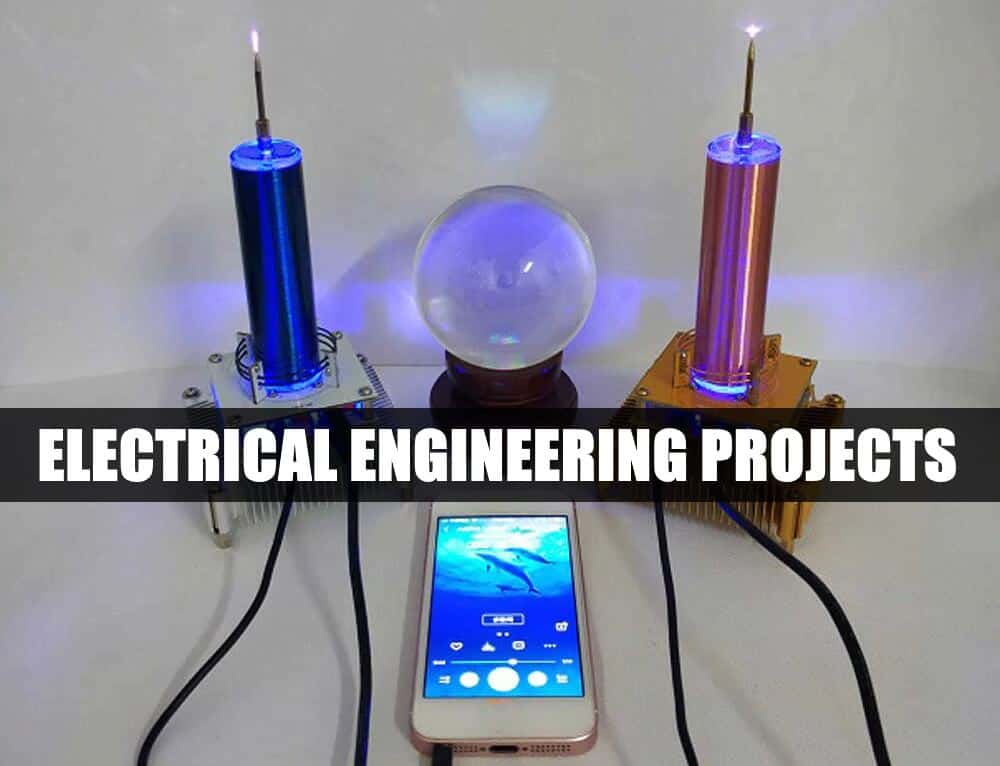
Design of an intelligent and efficient light control system
The aim of this project is to save energy & utilize it (as low as possible) depending on the people inside a room and lighting design . A PIR sensor senses the people entering inside the room & switches on the light & other appliances accordingly. Thus the efficient lighting system helps in saving energy when the room or building is empty.
Induction Motor Starter Using Auto Delta Star Starter
The idea behind this project is to implement an induction motor starter that provides a low voltage at the start & provide full voltage after some time. This project uses a 555 timer to switch between two relays having Star & Delta connection . Initially, it should run on Star connection for low voltage & then switch to Delta connection for full speed.
Soft starter for 3 phase induction motor using microcontroller
An inductor motor draws huge current while starting which can cause mechanical as well as winding damage. In order to avoid such damage, the voltage is gradually increased by varying the firing angle of a TRAIC. A microcontroller is used to vary the firing angle with a zero voltage detector circuit.
Solar Energy Measurement using Pic Microcontroller :
The idea behind this project is to measure the power supplied from a solar panel and display the readings along with the voltage & current. This project uses current & voltage sensors connected with a microcontroller that displays the calculated power using the LCD display.
BLDC Motor Speed Control with RPM Display:
In this project, we are going to use a microcontroller to measure & control the speed of the BLDC motor . The desired speed will be entered using a keypad, while the actual speed of the motor will be measured using an IR sensor (tachometer). The controller will then try to match the actual speed with the desired speed by increasing or decreasing through the PWM method.
Auto No Break Power Supply Control :
The aim of this project is to provide uninterruptible power supply from various power sources without any break. It uses a microcontroller to sense a power fail in primary source & switch the load to the secondary source by switching relay. It can be modified to use more than two sources.
Smoke Detector Alarm Circuit
The aim of this project is to trigger alarm such as buzzer or light when there is smoke detected inside a building. A smoke sensor along with a comparator IC is used to trigger the alarm when the sensor detects smoke. It can also be designed using a 555 timer IC. It is a protection device used in the kitchen etc. to notify the residents & prevent the damage & monitoring of No-smoking areas.
Automatic Railway Gate Controller
In this project, we are going to use a microcontroller to open or close the railway gate based on the position of the train. We are going to use some sensors in two positions to detect whether the train is coming or leaving & close or open the gate respectively using a servo motor.
PC Based PWM Speed Control of DC Motor System :
This project enables the full control of a DC motor i.e. its speed & direction through a wireless link between a PC & motor. This project is made of a wireless link between two Arduinos that is connected with PC & motor to send & receive commands. The speed is varied using PWM & the status information is displayed on an LCD.
Highway Alert Signal Lamp :
This is an alarm circuit that is used for providing safety during highway night driving. It uses photosensor to sense the vehicle behind and switch a bright light using a 555 timer IC for a specific duration to alert the driver & switch off when the vehicle overtakes.
Automatic College Bell System :
This is a mini college bell project that rings the bell when the class time is over. It uses timer IC with a decade counter to count time for the preset time of the period. Once the timer runs out, the 555 timer switch the bell through a relay that is powered from the AC mains.
Fuse and Power Failure Indicator
The aim of this project is to alert the person if there is a fuse or main power failure . The mains voltage is brought down using a transformer & voltage regulator which relays the signal through an Opto-coupler to the alarm circuit. The Optocoupler signal is amplified to trigger the LED & buzzer using a 555 Timer IC during a power failure.
Automatic Plant Watering & Irrigation System – Circuit, Code & Project Report
The objective of this project is to irrigate the plant automatically depending on the temperature & moisture of the soil. A temperature & moisture sensor provides the data to an Arduino which controls a solenoid valve to provide water accordingly. The system also notifies the owner regarding the status of plants.
Stress Meter
The skin resistance depends on the emotional state as the resistance decreases due to the high blood pressure caused by high stress. This principle is used in this project to measure the resistance of the skin & display the level of stress through a strip of LEDs.
Bidirectional Rotation of an Induction Motor with a Remote Control Device:
The idea is to use an IR remote to switch the direction of the induction motor wirelessly. The IR sensor feds the data to the microcontroller that changes the direction of the induction motor by switching the relay.
In this project, we are going to use a microcontroller to measure & control the speed of the motor. The desired speed will be entered using a keypad, while the actual speed of the motor will be measured using an IR sensor (tachometer). The controller will then try to match the actual speed with the desired speed by increasing or decreasing through the PWM method.
Low-Cost Hearing Aid
A low-cost hearing aid can be designed using cheap components. The purpose of this circuit is to amplify the incoming sound. It uses a microphone whose output is amplified using Op-amp with high gain & then fed to a headphone that is powered by a medium gain op-amp.
Thyristor based variable DC charger
In this project, we are going to control the voltage of the DC power supply by changing the firing angle of the trigger pulse of the TRIAC through a microcontroller. Two push buttons connected to the microcontroller are used for increasing or decreasing the firing angle of the trigger pulse. The output of TRIAC is then rectified into DC output. A voltmeter connected to output will display the actual DC voltage.
AC Power Control Based on Thyristor & Microcontroller
The aim of this project is to control the power supplied to any appliance using a TRIAC & a microcontroller. In order to do that, we are going to use a keypad as a user interface to enter the delay & a microcontroller to vary the firing angle delay to trigger the TRIAC. A zero-crossing detector is used for detecting the reference starting point for the trigger pulse.
Thyristor based Power Control by IR Remote
The aim of this project is to wirelessly control the duty cycle of AC mains to any appliance by varying the firing angle of the TRIAC through a microcontroller. A TV remote is used for wireless control which increases or decreases the firing angle delay.
Chopper Based Speed Controlling of Electric Motor
The name of this project is self-explanatory. The chopper is a DC to DC converter except the output is variable. The circuit is this project is designed to control the switching to increase or decrease the speed of the motor.
Over Voltage Protection of Lead Acid Battery DC Charger
This is a DC charger project for 12v lead acid battery that incorporates overvoltage protection. The idea is to use a comparator IC or an OP-amp in comparator mode to monitor the voltage. Overvoltage damages battery so it is required in those places where the voltage levels are not steady.
Electrical Devices Protection from Earth Fault through Circuit Breaker
This project is used for the protection of devices against the earth’s fault. The idea is to use a current sensor to measure the current flow in earth cable. The sensor is connected to a microcontroller that immediately switches off the power supply using a relay.
LDR and RTC Based an Efficient Power Saver for Street Lights
The intelligent street light idea is proposed mainly to save energy. the idea is to use LDR to switch the system based on the light intensity. But still, there are some roads that do not have traffic after midnight, so the RTC provides the timing to maintain an effective lighting schedule of street lights.
Speed Control System of Electric Motor in Clockwise and Anti-clockwise Directions
The purpose of this project is to control the speed as well as the direction of a DC motor using a microcontroller. The speed is controlled using the PWM (pulse width modulation) while the direction is determined by changing the polarity of the driver IC. Multiple input pushbuttons are used to increase or decrease the PWM & change the direction.
Battery Status Indicator using Arduino
The purpose of this project is to indicate the battery levels & also trigger an alarm when the battery is low. An Arduino is able to measure the voltage of the battery, the voltage must be scaled down to its measurable limit. Based on the battery voltage, the Arduino will display the status using an LCD or through LEDs. The same concept can be used for water level indicator or rain alarm indicator .
Non-Contact Tachometer for Speed Measurement of Electrical Motor by Using Hall Effect Sensor
The Hall Effect sensor is used for sensing the magnetic field. The magnetic field of the magnet attached to the shaft of the motor will vary when it rotates. The sensors send the info to a microcontroller that processes it & calculates the RPM of the motor.
Digital Tachometer using IR sensor
A tachometer is a measurement instrument used for measuring the speed of a motor. In this project, we are going to use an IR sensor to count the revolutions of a motor for a few seconds and display the RPM of the motor through LCD.
Intelligent Fire Sprinkler System
The idea is to automate the sprinkler that activates whenever there is a fire or increase in temperature. The proposed method is to use smoke & temperature sensors to detect the fire & release the sprinkler using the electronic valve. It is all controlled by a microcontroller. the system is used for protection & in early detection of fire to prevent further damage which is known as Intelligent fire alarm system as compared to addressable and conventional fire alarm systems .
Remote Controlled Robotic Arm
In this project, we are using an Arduino to control 3 servo motors that move like an arm to hold & pick up any object and place it where you want. It can be controlled wirelessly by a remote for convenience.
Obstacle Detection Robot with Ultrasonic Sensors
In this project, we are proposing a robot that detects & avoids when there is any object in front of it. An ultrasonic sensor (long-range) or infrared sensor (short-range) is placed in front of the vehicle to stop & turn when it detects an object. It can be implemented in automobiles to avoid an accident.
Automatic Load Controller and Sharing System
The purpose of this project is to monitor the load current & if the current exceeds a specified limit the supply is automatically stopped. A current supplied to the load is sensed and passed the info to the microcontroller that processes it. If the current exceeds the limit, the controller triggers the relay to switch the load to prevent damage.
Ultrasonic Parking Guidance System
It is a safety project for new drivers during parking to know if there is any object behind the vehicle & how far it is. The ultrasonic sensor interfaced with the Arduino in this project provides the info about the distance between the vehicle & the object & display the distance on an LCD with warning LEDs.
GSM based Autonomous Car Parking
The idea behind this project is to automate the car parking system. The proposed method suggests the use of multiple microcontroller units to communicate with each other. A single module will be used to control the parking door in the presence of the vehicle & also the identification of the vehicle. An available parking slot will be assigned to the vehicle with its billing information that will be sent over a GSM kit.
Finger Print Based Security System
This project’s aim is to provide security for a lock or door using the finger print of the users. The proposed idea is to use a finger print sensor module with a controller or Arduino to detect the valid finger print & lock/unlock the door using servo motors. There is also an LCD to display the status of your finger print & door etc.
Bi-directional Visitor Counter
The aim of this project is to keep the number of count of people leaving & entering the building. This circuit counts the number of visitors inside a building by counting up or down when a visitor enters or leave respectively. It is done by using two IR sensors in a line to determine the direction of the visitor movement. You can also control the appliance inside the building using the number of available visitors.
Finger Print Based Car Starting System
The proposed system provides an anti-theft feature that allows the vehicle to only start when the owner thumb impression is recognized. The finger print scanner matches the impression & unlocks the vehicle starting mechanism only if it matches.
Wireless Temperature & Humidity Monitoring System of Soil
The aim of this project is to monitor the temperature & humidity of the soi l wirelessly in real time. The proposed system uses two microcontrollers & wireless modules ( ZigBee ) for communication. The temperature & humidity sensors provide the info to the microcontroller which is transmitted wirelessly to the 2 nd microcontroller that displays the info on an LCD.
Sun Tracking Solar Panel
In this project, we are going to use a microcontroller to rotate the solar panel using a servo motor to face the sun. The LDR (light dependent resistor) is used for measuring the intensity of sunlight & provide valuable data to the microcontroller for processing.
Password Based Circuit Breaker
The idea behind this project is to make or break the circuit using a password to avoid an unauthorized person. The password is entered through a keypad connected to the microcontroller which controls the relay to break the circuit or make it. The same idea can be used for smart WiFi circuit breaker .
Smart Power Manager Using Microcontroller
In this project, we are going to use a microcontroller to switch on the appliances inside a room depending on the number of people entering or leaving. The entering or leaving is detected using IR sensors. Also, the 7 segment display will show the number of people inside the room.
Smart Energy Meter using GSM & Arduino
This is an Arduino based project intended for notifying the owner about the amount of energy consumption during a specific time using GSM kit. It helps in managing and monitoring your energy consumption using a cellphone.
Automatic Changeover Switch
This project aim is to automatically switch from primary to secondary power source & vice versa when either one of them is not available. The idea is to use a 555 Timer IC in the bi-stable mode that is triggered by a transistor. when the primary source supply stops, the transistor triggers the Timer & switch the relay to a secondary source.
Overload Protection of Transformer :
The purpose of this project is to protect the transformer from overloading. The objective is to sense the current supplied by the transformer & if the current exceeds a certain limit, the relay is triggered to break the circuit.
GSM based Real Time Street Light Control Systems
The purpose of this project is to control the street light wirelessly from the control center. The idea is to use the GSM module to communicate between the modules. The CC sends the command, the GSM module passes the command to the microcontroller that switches the corresponding relay.
Wireless Load Controller By GSM
This project’s purpose is to control various kinds of loads using GSM. The commands are sent through SMS to switch different loads using relays. It can also be a program to switch off or switch on a specific load after a specified time.
Car Speed Detector Circuit – Working and Source Code
In this project, we are going to measure the speed of a vehicle using an Arduino. It involves two IR sensors that sense the vehicle & the Arduino calculates the time passed between these two sensors. The speed is calculated using the time duration & the distance between the sensors.
Smart Home Automation System using Bluetooth & Arduino
In this project, we are going to control a number of home appliances wirelessly through a Bluetooth module. The Bluetooth is linked with the Arduino to control individual relays to switch the appliances.
Wireless Motor Control System
The aim of this project is to wirelessly control a motor using IR communication. This system proposed is mainly for safety reasons where the motor is used for testing equipment. The remote sends the commands to the IR receiver kit that forwards it to the microcontroller to execute it.
Prepaid Energy Meter
Unlike the postpaid meters, this meter supply & consumes energy units based on the balance its owner has deposited. The meter is embedded with a notification feature that allows the owner to know when their deposited amount is low. It enables the owner to manage their expanses & save energy.
Tanker Robot for Vision Based Surveillance System
This wireless controlled robot is made for the purpose of video surveillance of inaccessible areas. The robot is equipped with cameras that transfer the video signal through a wireless module to a handheld screen. The handheld device is used for controlling the movement & direction of the robot.
Automated Stair Climbing robot
The most challenging obstruction for an autonomous vehicle is stairs. This project is the main focus is to design a robot that can easily cover the steps going up or down the stairs. Such a system can be then implemented in wheelchairs for disabled people to overcome the challenges.
Conversion of Single Phase to Three Phase Supply
The project aim is to convert the single-phase supply into a three-phase supply for powering three-phase loads. The system creates two new lines each with a phase difference of 120°.
Below are some additional electrical engineering projects list and ideas .
- Cell Phone Detector
- Design of PM Generator for A Vertical Axis Wind Turbine
- Energy Leak Detector
- Low Cost FM Booster
- Plant Boiler Automation Using GSM Technology
- Put Coin And Draw Power
- Railway Security System based on Wireless Sensor Networks
- Room Noise Detector
- Transmission of data using Power line carrier communication System:
- Industrial Automation with Door Controlling by Using Touch Screen
- Real Time Monitoring for GB MMC Card Based Data Logger and GSM Based SCADA
- Intelligent Auto Controlling of Train Security System
- GSM Technology Based Power Grid Devices Controlling and Monitoring System
- ZIGBEE and GSM SMS Based an Online Monitoring and Fittings System of Temperature of Conductors
- Power Electronic BasedControl Design of Fault Current Limiter
- Proportional Integral Controller Based Thirteen level Inverter for PV System Connected by Grid
- Power Control and Energy Management of a Hybrid Active Wind Generator for Grid Integration and Distributed Power Generation
- Full Bridge Converters and Multi Boost Based Battery Power Management and Super Capacitors for Hybrid Vehicle Applications
- Two Parallel Single phase Rectifiers Based Single Phase to Three Phase Drive System
- Speed Control of Induction Motorsby Using Hybrid plus Fuzzy Controller
Let us know in the comment box below if you have any other related project idea to add it in the Electrical Engineering Project Ideas post.
Related EE Engineering Project Lists & Ideas:
- Electrical Engineering Final Year Projects
- Top Electrical Mini Projects Ideas List
- Electronics Final Year Projects Ideas List
- Electronics Engineering Project Ideas for Engineering Students
- Simple and Basic Electronics Mini Project Ideas for Beginners
- Simple Electrical & Electronics Projects
Electrical Technology
Related articles.

A Complete Guide About Solar Panel Installation. Step by Step Procedure with Calculation & Diagrams

How to Size a Single Phase and Three Phase Transformer in kVA? Calculator

How to Calculate the Battery Charging Time & Battery Charging Current – Example

Automatic UPS / Inverter Connection Diagram to the Home Panel Board

How To Calculate Your Electricity Bill. Electric Bill Calculator with Examples

How to Find the Proper Size of Wire & Cable: Metric & Imperial Systems
best for electrical engnr.
Electrical and electronics
If you are going for best contents like me, just go to see this website daily because it presents feature contents, thanks.
Leave a Reply Cancel reply
Your email address will not be published. Required fields are marked *
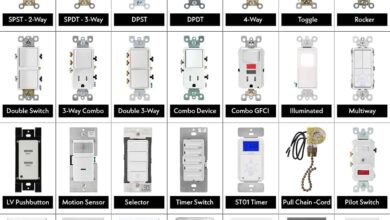
Skip to Content
PhD students earn major NSF graduate research fellowships
Three Electrical, Computer and Energy Engineering graduate students have received 2024 National Science Foundation (NSF) Graduate Research Fellowships for their promising quantum and metameterial antennas research.
This year, the NSF awarded 27 students from CU Boulder , including 18 from the College of Engineering and Applied Science with the 2024 graduate research fellowship, a prestigious award recognizing students in a wide variety of STEM disciplines, exploring some of the most pressing issues of our time.
Each recipient will receive three years of financial support, including an annual stipend of $37,000, as well as professional development and research opportunities.

Aliza Siddiqui
Advisor: Joshua Combes Lab: Combes Group
Bio: Siddiqui is a first-year PhD student with a research concentration in Quantum Engineering and Architecture. She graduated from Louisiana State University, home of the Tigers, with a degree in computer science.
My proposal involves creating a new benchmarking/testing framework for the next generation of error-corrected quantum computers. Given the noise of physical qubits, recent work has suggested combining the state of several physical qubits to create a logical qubit. I will collaborate with Dr. Josh Combes and Sandia National Labs for my PhD. Through this work, the quantum community will have a tool-kit that will help us determine how well a quantum computer performs, diagnose what and where the issues are and create solutions to realize full-scale, error-corrected quantum systems.

Dylan Meyer
Advisor: Scott Diddams Lab: Frequency Comb & Quantum Metrology Lab
Bio: Meyer is a first-year PhD student in the FCQM group. He received his undergraduate degree from the University of Alabama in Electrical Engineering.
My research proposal is the development of highly stable and robust millimeter wave time and frequency (T&F) transfer, supporting T&F transfer between atomic clocks. T&F transfer is used to create clock networks that are essential for positioning and navigation, such as GPS and essential infrastructure like the Internet and power grid. These technologies support up to $1 billion dollars of trade and financial transactions a day. In addition, these clock networks are capable of fundamental science experiments capable of probing new and exciting questions related to physics and geodesy.

Advisors: Cody Scarborough and Robert MacCurdy Lab Groups: EMRG and MAClab
Bio: Pham received their Bachelor's and Master's degrees in Electrical & Computer Engineering from the University of Oklahoma, where he conducted research on RF filters. After graduating, he worked for 3 years in industry as an RF engineer developing radar systems. He will begin his PhD this fall 2024.
My research proposal is on the application of multi-material additive manufacturing techniques for metamaterial antennas. Metamaterial antennas are capable of more sophisticated capabilities and unique form-factors compared to conventional antennas. By leveraging multi-material additive manufacturing, there are more degrees-of-freedom for the shape and composition of the metamaterials. This research would enhance the design flexibility and capabilities of next-generation antennas to meet the growing performance demands of future wireless systems.
Related Articles

ECEE students earn college undergraduate awards 2024

Innovation unveiled: ECEE students to showcase design projects

Zoya Popovic elected to the National Academy of Inventors
Apply Visit Give
Departments
- Ann and H.J. Smead Aerospace Engineering Sciences
- Chemical & Biological Engineering
- Civil, Environmental & Architectural Engineering
- Computer Science
- Electrical, Computer & Energy Engineering
- Paul M. Rady Mechanical Engineering
- Applied Mathematics
- Biomedical Engineering
- Creative Technology & Design
- Engineering Education
- Engineering Management
- Engineering Physics
- Environmental Engineering
- Integrated Design Engineering
- Materials Science & Engineering
Affiliates & Partners
- ATLAS Institute
- BOLD Center
- Colorado Mesa University
- Colorado Space Grant Consortium
- Discovery Learning
- Engineering Honors
- Engineering Leadership
- Entrepreneurship
- Herbst Program for Engineering, Ethics & Society
- Integrated Teaching and Learning
- Global Engineering
- Mortenson Center for Global Engineering
- National Center for Women & Information Technology
- Western Colorado University
Get Electric Vehicle
All about electric vehicles, 100 plus electrical engineering research project ideas.
August 18, 2018 Sibi Krishnan EV Projects 0

I would like to add a post on Electrical Engineering Project Ideas so that to get a complete list of electrical engineering projects that derived from all blog posts in GetElectricVehicle.com .
You can visit all the posts in the category “ Project ” to develop innovative research projects for electrical engineering.
You can grab “ Electric Vehicle Research Projects ” eBook
Electrical engineering is a professional engineering discipline generally deals with the application of electricity, electronics, and electromagnetism.
Read interesting facts about electrical engineering ( Wikipedia )
Let’s focus on electrical project ideas. As I mentioned earlier its quite difficult to read all posts in the blog and find innovative electric vehicle project ideas.
Here is an idea!
This article would help you to have a quick overview of the posts and related research project ideas.
I would update this post often so that to have an inclusion of project ideas from all new posts.
Kindly bookmark this post and visit for updates. Or you can subscribe to our mailing list to get updates on latest posts. One more option – follow us on social media to get updates!
How to use these ideas for electrical engineering projects
We are going to list a few major projects in electrical engineering from different blog posts published in GetElectricVehicle.com
Each sentence that writes in bold italics letters would be expanded and developed as electrical engineering projects.
Once a point is selected as project topic search for related latest articles in the below technical journals.
- IEEE Xplore (Institute of Electrical and Electronics Engineers)
It’s highly recommended to have a clear detailed picture of the topic that we select and what advancements are already been happened in the field.
#1 What are driving cycles and how to develop one for electric vehicle simulation?
Let’s start with driving cycles and see how to develop one driving cycle for EV simulation. It’s available right in the above post #1.
Yeah, from the blog post I would say that following are a few electrical engineering project ideas.
- Electric vehicle model simulation
Develop a mathematical model of an electric vehicle in Matlab . It’s an interesting as well as challenging task indeed.
A closed loop electric vehicle system which takes driving cycle (somehow represents driver’s torque demand from the vehicle motor) as input and outputs expected velocity, state of charge (SoC) of battery, operating points of the motor, inverter, etc.
Electric vehicle closed loop mathematical modeling comprises the following steps
- Battery modeling
I would say battery modeling of an electric vehicle would be another electrical engineering research project area.
I did a project on performance improved battery modeling for electrical vehicle simulation. You can find the paper presented at the IEEE conference held at IIT Delhi (ICPS 2016) here .
Internal resistance, self-discharge, etc. had been taken into account in the battery model.
Life of the battery will be affected by a lot of factors. Battery model can be developed including life modeling as well.
- Inverter modeling
An electrical vehicle makes use of SVPWM (State vector pulse width modulation) inverter to control the speed of the motor.
Simulation and hardware of SVPWM inverter with enhancements, especially to drive electric vehicle motors would emerge as a good project. Please think about possible enhancements in the inverter ( harmonics elimination and switching loss reduction at high frequency in SVPWM)
- Electric machine modeling
Electric machines are being modeled for vehicle simulation as efficiency maps . Efficiency maps are the contours that represent the efficiency of the electrical machine at a different speed and torque combination.
Efficiency maps would have speed in the X-axis, torque in Y-axis, and corresponding efficiency in Z-axis.
Efficiency maps for an electrical machine can be experimentally created performing load test in the lab. Interpolated data points would give a continuous contour of an efficiency map.
Induction motor equivalent circuit can be modeled and performance of the motor at different loads can be analyzed.
- Driver modeling (forward facing simulation)
- Vehicle Control Unit modeling
A vehicle control unit (VCU) is the component where we can implement and test our logic for optimal operation of the electric vehicle .
VCU controls and decides torque from motor considering maximum and minimum torque limits, energy consumption from the battery, how much energy can be delivered in accordance with all other constraints (thermal, mechanical, electrical, etc.)
A complete vehicle model can be used for a variety of analysis . For example minimization of energy loss , optimized selection of components .
Vehicle models are readily available in Matlab and there is a free tool called Advisor (Advanced Vehicle Simulator) which is highly customizable. I recommend you to use the tool for your projects.
With the help of a complete vehicle model battery performance can be analyzed. How does the SOC vary with distance traveled?
#2 How do we develop an electric scooter yourself?
Electric scooter development is a hardware DIY project that could turn into a highly reputed hardware and analysis academic project. Hardware projects always top in the list of electrical engineering projects.
Post #2 explains how to develop an electric scooter yourself. The calculations needed to select the appropriate motors , components , circuits , etc. are explained in post #3 (you could modify accordingly).
Calculations and analysis of prior hardware implementation itself would be a creative project. Once the components are selected based on an open loop electric vehicle model (post #3 ) hardware of the vehicle can be developed.
The real-time analysis would be the next step. How the vehicle performs , how is the energy consumption , how SOC of the battery varies, charging time , optimal charging .
Do you start thinking deeply about the ideas that I share in the post? Could you get new innovative thoughts on EEE projects?
Keep your brain engaged!
#3 How to calculate the energy consumption of an electric car
Open loop electric vehicle model (that’s what I would like to call the set of equations that represent an electric vehicle) developed for backward facing simulation of an electric vehicle.
Its a comparatively easiest model that would be used for a lot of electrical academic projects. I developed and used the same for my electrical engineering MTech project. You can also use open loop EV model for electrical engineering projects that get from this article. 🙂
If a driving cycle is given as input, it calculates energy consumption at each stage of the powertrain . Component rating selection can be performed using the model.
Performance of vehicle in different driving cycles can be analyzed. Energy consumption minimization would be analyzed.
How does a slight variation of efficiency of the component affect the overall energy consumption of the vehicle?
Most critical factor (most sensitive factor) of electric vehicle design can be found out.
A vehicle that supposed to serve in a city and hilly areas differ in their design. Aerodynamic design , the mass of the vehicle, etc. are factors that affect the energy consumption of the electric vehicle.
Open loop simulation of the electric vehicle in different driving cycles could help to determine the factors to be considered for optimal vehicle design .
#4 Electric car battery modeling and life analysis
The battery is the component that supplies energy to an electric vehicle. A simulation model of an electric vehicle battery can be developed in Matlab and other software.
Life of battery affects the overall cost of an electric vehicle. Regenerative braking of the electric vehicle can be a good project.
Read about Regenerative braking: Advantages, disadvantages, and challenges
It’s not always possible to apply regenerative braking on an electric car.
Percentage of recuperated energy calculation , improvement of energy recuperation , impact and effectiveness of regenerative braking at low speed , etc are a few MTech electrical engineering project ideas.
Battery life depends on the frequency of charge-discharge cycles . Regenerative braking affects the life of the battery. Analyze how regenerative braking affects the battery.
Supercapacitor integrated battery system for an electric vehicle could be used to store energy that generated during braking. It can enhance the battery life preventing sudden charging and discharging .
Economical and technical analysis of supercapacitor-battery integrated system can be an EEE project.
How could be the energy split between battery and supercapacitor for so that the life of the battery is maximum?
How could be the energy split between the capacitor and battery for minimizing the life cost of the whole system
#5 Vehicle to grid (V2G) and vehicle to home (V2H): Why does grid integration of EV lag?
Vehicle to grid and vehicle to home do have a large potential of research projects for electrical engineering.
The grid-connected vehicle is a power system related project. An electric car has a battery that can power a house for 20 days. Its a kind of micropower generating station.
An electric car with a bi-directional power converter can act as a load as well as a generator. You can design and develop a bidirectional power converter for electric vehicle grid integration.
An electric vehicle that connected to the grid can be used for
- Peak load shaving
- Load leveling
- Power system stability
- Reducing losses during peak hours
- Capacity reduction of generation at peak hours
Each of the above points becomes really well electrical engineering project.
Algorithm for power flow to and fro electric car and grid can be developed.
#6 How All Wheel Drive (AWD) electric car works: Advantages and challenges
AWD electric cars are a challenging field of research. Electric vehicles are manufactured with a single motor configuration in general. But the advantages of multi-motor multi-axle driving encouraged Tesla to manufacture their multi- axle electric car.
Simulation of a multi-axle all-wheel-drive electric vehicle, energy calculation , battery performance analysis , etc. would be electrical engineering projects in the field of AWD electric vehicle.
Electric Vehicle Research Projects eBook
We have published a book “ Electric Vehicle Research Projects ” – Objectives to Conclusion – for PhD, MTech, MS, and BTech Electrical Engineering students which is a comprehensive guide to do research in the field of electric vehicles. You can read more about the book from here and download kindle eBook from here .
You can watch the video “List of 55 electric vehicle projects”
Do you get a few electrical engineering project ideas from the article? Here I tried to include a lot of project ideas. You have to think about those ideas to develop them as a good academic research project.
I would frequently update the post including the latest ideas on electric vehicle projects. Please bookmark this page for updates.
I would create a list of electrical engineering projects soon so that you can directly implement them. 🙂
Comment your queries and wish you a great academic project 🙂
Next post : List of 55 project ideas
You may also like
- Basics of Electric Vehicles: Advantages, disadvantages, and classifications
- How promising would be the future of electric vehicles?
- 11 interesting facts about electric Vehicles
- Blog Series
- Project Ideas
Copyright © 2024 | WordPress Theme by MH Themes
DipsLab.com
by Dipali Chaudhari

325+ Latest Electrical Engineering Projects for Final Year Students (Major)
Are you in the final year and looking for electrical engineering projects and ideas?
Let me tell you, this is the most challenging task I faced during my Electrical and Electronic Engineering (EEE). Getting the right project idea to work on is not an easy job.
So, I can correlate whatever you are going through now.
In this article, I’m listing 325+ project ideas you can pick up right away as your final year project (both major and mini projects for electrical engineering).
Actually, I am sharing my experience, when it was time to choose an engineering project in the final year semester. I got more lists of the electrical and electronics engineering topics for the projects through online resources.
I was so confused. You might be the same situation right now.
To help you out of this, my friend Vishvas Prajapati and I are sharing the latest topmost 325+ electrical and power electronics-based project ideas.
Let’s look at them one-by-one.
Table of Contents
325+ Topics for (EEE) Electrical Engineering Projects
The electrical and electronics projects deal with generation, design, control, automation, and integration with advanced technology.
These project ideas are based on the electrical power system, electronic application, instrumentation, control system, wireless communication technology, automation system and so on…
I’m categorizing these project topics into the different technology threads so that you can choose based on your interest.
1. Project-based on Electric Machine
The electrical machine project develops on the basis of the design, drive, control system…
- Stepper Motor Controller
- Speed Control of DC Motor
- PC based Speed Controlled DC Motor
- AC PWM Control for Induction Motor
- Predefined Speed Control of BLDC Motor
- Automatic Sensor Gate using Stepper Motor
- Single Phase Induction Motor Speed Control
- Thyristor Power Control of Induction Motor
- AC to DC with Four Quadrant Motor Operation
- Electronic Voting Machine with Seven Segment
- Smooth Start of a Single Phase Induction Motor
- Electronic Soft Start for 3 Phase Induction Motor
- Induction Motor Speed Control using TV Remote
- Speed Control of DC motor by Smart Voice Recognition
- Speed Synchronization of Multiple Motors in Industries
- Touch Screen Based Security & Speed Control DC Motor
- Four Quadrant DC Motor Speed Control with Microcontroller
- Cellular Phone through Industrial DC Motor Speed Controlling System
- Wireless DC Motor Speed and Direction Control for Robotic Applications
- Induction Motor Protection System (Over Load Voltage or Current Strip)
- DC Motor Speed Control using Radio Frequency Suitable for Robotic Arm
- Speed Synchronization of Multiple Motors in Industries using RF remote
- Bidirectional Rotation of Single Phase Induction Motor without Run Capacitor
- Brushless DC Motor (BLDC) or PMDC Speed Control by PWM with RPM Display
- Remote Induction Motor Control by Android Application with 7 Segment Display
- Four Quadrant Operation of DC Motor Remotely Controlled by Android Application
- Bidirectional Rotation of a DC or Stepper or Servo Motor with a Remote Control Device
- Automatic Star-Delta Starter Using Relays and Adjustable Electronic Timer for Induction Motor
In most of these projects, the electrical motor is used as a piece of important equipment.
2. Project-based on Solar System
Now a day, renewable energy sources are very popular in generating and converting into another form of energy like electrical energy.
A solar PV system is the best example of renewable energy sources. You can easily develop a project base on the solar system.
There are some advantages to building projects. As solar energy is free to consume, it is economical. Solar energy is an environmentally pollution-free source of energy.
Sadly, solar system-related equipment is costly.
You can choose the best solar project from the following list of electrical engineering projects.
- Solar based Invertor
- Solar Tracking System
- Peltier Cooler using a solar panel
- Solar based Elevator System
- Solar based Auto Irrigation System
- Train with Solar Panel
- Solar based Power Charge Controller
- Solar based Dam control using 8051 microcontroller
- Optimal Power Generation using Solar System
- Solar based Water Irrigation using RF Remote Control
- Solar based Variable DC Power Switching using RF Remote
- Charge and Load Protection in Solar Power Management
- Solar Irrigation System with Soil and Temperature Sensor
- Solar Powered LED Street Light with Auto Intensity Control
- Farmer Friendly Solar Based Electric Fence for Deterring Cattles
- Solar Tracking System with Cooling Panel with Solar Charger
- Solar Highway Lighting System with Auto Turn Off in Daytime
- RF Controlled Electric wheel Chair with IR Obstacle using Solar Energy
- Solar based Electric Wheel Chair with IR Obstacle with RF Remote
- Auto Power Supply Control from Three Different Sources ( Solar, Mains, Battery)
- Solar Water Pump Control with Four Different Time Slots for Power Saving Applications
- IR or RF Remote Control (Bulb, Tubelights, Fan, TV) using Solar System
- Solar Energy Measurement System Conveyed over RF using a PIC Microcontroller
Personally, I picked An Automatic Solar tracking system using Microcontroller as a major project during post-graduation.
3. Project-based on Electronic System
These projects include the collection of some power electronics project ideas along with different electronics applications and different updated technology like embedded systems, Arduino , Microcontroller, etc.
- Hover Board
- Electronics Power Saver
- Cyclo Converter using Thyristors
- Four-Channel Data Logger using EEPROM
- Electronics Code Look using Matrix Keypad
- Marx Generator based High Voltage using MOSFETs
- Home Appliances Controlling using Android Mobile via Bluetooth
- Embedded Quiz Monitoring System for Team Performance Evaluation
- Temperature Adjustable Heating System with Power Electronic Devices
- High Voltage DC up to 2KV From AC by Using Diode and Capacitors in Voltage Multiplier Circuit
The microcontroller-based project topics are shared later part of this article. Keep reading.
4. Project-based on Electrical Power System
In the electrical power system environment, generation, transmission, and distribution , switchgear protection systems such as switches, protective equipment (like a fuse and circuit breaker ), isolator, relay, transformer , etc the most important and essential topics.
- Password-Based Circuit Beaker
- Commercial Power Saver System
- Channel Relay Operated using PC
- Three Phase Change Over System
- Foot Step Power Generation System
- Super-fast Electronic Circuit Breaker
- Flexible AC Transmission using TSR
- Flexible AC Transmission Using SVC
- AC Power Transfer Wirelessly by HF
- Underground Cable Fault Distance Locator
- Power Grid Monitor and Control through PC
- Transformer Monitoring and Control System
- Phase Sequence Checker for Three Phase Supply
- Electronic Soft Start for Single Phase Pump Motor
- Instant Electrical Load Survey for Industries or Home
- Single Phase Preventer with Overload Control Switch
- Load Cut off Switch Upon Over Voltage or Under Voltage
- Load Shedding Time Management for Utility Department
- Mains Supply Sensed Over Voltage or Under Voltage Trip Switch
- Password-based Electronic Line Trip in GEB with all Indication
- Transformer Over Load Alert System With Voice Announcement
- Footstep Power Generation System (Weighing Machine based )
- Auto Selection of any Available Phase, in 3 Phase Supply System
- Zig Bee Wireless Relay Control and Power Monitoring System
- Remote Monitoring of Transformer or Generator Health Over the Internet
- Industrial Power Control by Integral Cycle Switching without Generating Harmonics
- Grid Synchronization Fail Detection on Sensing Frequency or Voltage Beyond Range
- XBEE based Remote Monitoring of Three Parameters on Transformer or Generator Health
- APFC (Automatic Power Factor Compensation) for Industrial Power use to Minimize Penalty
- Three Phase Fault Analysis with Auto Reset on Temporary Fault and Permanent Trip Otherwise
You can use a smart system like wireless communication, remote control system as a part of the innovation to operate wireless power transmission projects.
5. Project-based on the Control System and MicroController
In the following list, the projects are built with the help of the control system and microcontroller.
By using the basic Control System:
- Traffic Light Controller using LCD
- Traffic Light Controller Using Seven Segment
- Contactless Liquid Level Controller
- Access Control System Using Card
- PC Based Electrical Load Control
- Lamp Illumination Control with Precision
- Temperature Controlled DC Fan
- Servo Motor Control Using Mobile Phone
- Brain Controlled Robot
- Mobile Charging On Coin Insertion
- Brain Controlled Wheel Chair
- CAR Controlling using Mobile
- Voice Controlled Home Appliances
- Hand Motion Controlled Robotic Arm
- LED Street Light Control with Power Saver
- Dish Positioning Control by IR Remote
- AC Power Strength Controller System
- Capacitive Touch-based Electric Load Control
- AC Power Control with Programmable Interface
- Phone Controlled-Load Management System
- Intelligent Traffic Light Controller for Ambulance
- PC Controlled Scrolling Message Display for Notice Board
- Exhaust Fan for Bidirectional Motion with Remote Control
- AC PWM based Power Control by IGBT / MOSFET
- Any Type of Liquid Level Controller using Ultrasonic Transducer
- Human Controlled Colour Changing LED (RGB) Lighting
- Automatic LED Intensity Control with Vehicle Movement
- Voice Controlled Robot by Cell Phone with Android App
- I.V.R.S. System for Industrial Process Control
- Pick and Place Robotic Arm and Movement Control
- Intelligent Train Security System and Auto Controlling
- Battery Operated Motorized Wheel Chair for Handicaps
- Submersible Pump Controlling with Power Failure Protection
- Android Controlled Military Spying and Bomb Disposal Robot
- PC Mouse operated Electrical Load Control Using VB Application
- Reducing Electric Bill for Industries and Commercial Establishments
- Voice Controlled Robotic Vehicle with Long Distance Speech Recognition
- Thermoelectric PELTIER Cooler with Temperature Controller Cooler System
- Submersible Pump Controlling using Cell phone With Power Failure Protection
- High Power LED-based Intelligent Streetlight Controlling System with Vehicle Counter
- Submersible Pump Controlling with Temperature Controlling with Power Failure Protection
- Programmable Switching Control for Industrial Automation in Repetitive Nature of Work (Pick & place)
By using the Microcontroller:
- Microcontroller based on Data Logger
- Multiple Microcontrollers in LAN like Setup
- Microcontroller based on Heart Beat Counter
- Microcontroller based on Caller ID (AT89C2051)
- Mains Fail Detection with UPS Analogy using 8051 Microcontroller
- Microcontroller based on Electronics Baby Swing
- Microcontroller based on Green House Control
- Power Theft Detection using 8051 Microcontroller
- Microcontroller based on Line Following Robotic Vehicle
- Microcontroller based on Dam Control with LCD Display
- Ultrafast Acting Electronic Circuit Breaker Using PIC Microcontroller
- Microcontroller based Voice Operated Load Status with GSM
- Microcontroller based on Cordless Mouse Features by TV Remote
6. Project-based on the Communication System
The latest wireless communication system and remote control system-based electrical engineering projects have been listed here.
By using the Bluetooth System:
- Bluetooth Operated Home Automation
- Bluetooth based Calling System in Elevator
- Advanced Wireless Industrial Automation System based on Bluetooth
- Bluetooth Controlled the Robot using Android Mobile
- Bluetooth based Security Enabled Powered Devices Control System
By using the Infrared (IR) Sensor:
- IR Sensor-based Automatic Toll Tax
- Energy Saver using PIR motion Sensor
- IR Remote operated Pick and Place Robot
- Distance Measurement by Ultrasonic Sensor
- IR Remote based Controlled Robotic Vehicle
- IR Remote based Operated Home Automation
- Multi-Sensor Strategies to Support Blind People (LDR – IR – ultrasonic )
- IR Remote based Submersible Pump Controlling with UPS System for Power Failure
By using the Radio Frequency (RF) System:
- RF Remote based Door Control
- RF-ID based Library Automation
- RF-based Elevator Calling System
- RF-ID based Access Control System
- RF-based Automatic Hover Board Machine
- Auto Mains Power Failure using the RF system
- Variable DC Power Switching using RF Remote
- Direction Control of DC motor using RF Remote
- RF-ID based Highway Toll Tax Collection System
- RF Controlled Wildlife Observation Robot Project
- RF-based Petrochemical Fire Monitoring and Control Station
- Remote Monitoring of Patient Body Temperature Over Internet
- Wireless Home Appliance like Fan Speed Control using RF Communication
- Automatic Electrical Appliances Control Using RF Remote with Power Saver
- RF-ID based Electronic Passport System for Easy Governance using Arduino
- Submersible Pump Controlling using RF Remote with UPS System for Power Failure
- Security Integrated System based on RF-ID Access Protocol for Industrial Applications
- Industrial and Commercial Appliances Monitoring and RF Controlling with Power Saver
By using SMS System:
- Electronic Code Lock with Voice Message
- Sensor Gate Operated with Voice Message
- SMS Based Stepper Motor Controlling System
- Pre Recorded Leave Messages with Basic Home Appliances Load for Emergency
- Railway Level Crossing Gate Control through SMS by the Station Master or the Driver
- Theft Intimation of the Vehicle Over SMS to Owner Who Can Stop the Engine Remotely
By using the Global System for Mobile communication (GSM) System:
- Automatic Power Saver with GSM
- UPS System with Alert by GSM Modem
- Heart Beat Counter using GSM SIM300
- Process Control System using GSM
- Vehicle Protection System with GSM
- Voice-based Notice Board using GSM
- Medical Emergency Alert system through GSM
- Weather Report Information System using GSM
- Power Meter Reader Plus Load Control using GSM
- GSM based Monthly Energy Meter Billing via SMS
- Wireless Electronic Notice Board using GSM
- SMS based Device Control using GSM Modem
- Submersible Pump Controlling using GSM Modem
- Water Level Measurement through GSM SIM300
- Remote Access to Agriculture Motor through GSM
- Automatic Load Switching of Transformer using GSM
- Vehicle Accident Detection with GPS and GSM Modem
- Power Grid Monitor & Control System using GSM Modem
- Underground Cable Fault Distance Conveyed over GSM
- GSM based Garbage and Waste Collection Bins Overflow Indicator
- Data Communication or Machine Controlling through GSM System
- SMS based Device Control using GSM Modem with Status Message
- Personal Computer High Security using GSM with an Alert Message
- GSM Modems based Irrigation Water Pump Controller for Illiterates
- Green House Environment Monitoring and Controlling using GSM
- Public Transportation Management through GSM for GSRTC
- Cell Phone based Boiler ON or OFF System using GSM Modem
- Control System for Modern House-GSM, Timer, LDR, Temperature
- GSM based Remote Monitoring of Eight Parameters of Transformer
- Power Theft, Mains Fail Monitoring and Load Control using GSM
- Robotic Car Operated by GSM Modem(any remote location)
- An Online Monitoring System of Temperature and Controlling through GSM SMS
- Thermoelectric PELTIER Cooler with Temperature Controller using GSM Modem
- ON/OFF Program Time Changing for Electrical Appliances by Wireless(GSM) Method
- Industrial Appliances Monitoring and Controlling System Using GSM with Auto Alerts
- Detecting Power Theft Prior to Feeding Energy Meter and Intimating to Control Room by GSM
- Integrated Energy Management System based on GSM Protocol with Acknowledgement Feature
- AC Power Line (AC 230v) through All Industrial Electrical Appliances Controlling (ON or OFF) Indicating System by GSM
Other Wireless Communication System:
- WI-FI Operated Robot
- Wireless Power Transfer
- Wireless Elevator System
- Zig Bee based Wireless Notice Board
- Wireless Power Driven Car or Train
- Remote Alignment Of 3D Dish Positioning
- LI-FI base Guiding System in Historical Place
- Voice Recording (30 sec) with USB Mp3 Interfacing
- Zig Bee based Wireless Data Uploading Automation
- Listen Privately to TV Audio Wirelessly Over FM Band
- Wireless Power Transfer by High-Frequency Resonating Coils
- Wireless Touch Screen base Ordering System for Restaurants
- Automatic Wireless Health Monitoring System in Hospitals for Patients
- Dedicated Message Communication Wirelessly between Two Computers
7. Project-Based on Security (Alarm) System
Here are some different project ideas you can develop for security and safety purposes.
- Baby Protecting Alarm
- Smart Helmet for Smart City
- Gas Detector with Alarm System
- Two Zone Home Security System
- Capacitive Touch Electric Switch
- Three Zone Home Security System
- Digital Clock using RTC with Alarm
- Fingerprint-based Security System
- Car Operating Panel (G+4) System
- Parking Availability Indication System
- Automated Elevator with Overload Alert
- Home Security System with High Alerts
- Auto Metro Train to Shuttle Between Stations
- Touch Screen based Industrial Load Switching
- Touch Screen based Security with Event Logging
- Railway Track Security System with IR Interfacing
- Speed Checker to Detect Rash Driving on Highways
- Gas Leakage Detector and Auto Dialler Controller System
- Password-based Lock for Bike Security with the Ignition Key
- OverFlow Water Announcement in the River for People Safety
- Finger Print and Keypad based Industrial Security Access Control System
- Fully Automated Home Security System with Missed Call and Message Facility
- Networking of Multiple Street Junction Signals for Better Traffic Management
8. Project-based on Measuring Instruments
There are so many measuring instruments classified into different types .
Here are some electrical engineering project ideas if you are more interested in developing a project related to measuring instruments.
By using the Meter:
- Non-Contact Tachometer
- Digital Auto (Rickshaw) Meter
- Data Logger for Energy Meter with Readings
- Milk or Petrol Flow Meter with Thermal Printer
- Milk or Petrol Flow Meter with Data Backup System
- Accelerometer-based Wheel Chair Controlling
- Accelerometer-based Automatic Hover Board Machine
- Device Load Monitor With Programmable Meter For Energy Audit
- Accelerometer-based Digital Vocaliser for Deaf and Dumb People
By using the Display:
- Moving Message Display on LCD
- Water Level Indicator on LCD
- Electronic Voting Machine with LCD
- 3 Phase Sequence Checker by LED Indication
- Scrolling LED-based Lending Operating Panel
- LED Lamp Dimmer Circuit
- Rolling Display using LEDs Matrix
- Virtual Display of Message by Propeller Driven LEDs
- LDR based Power Saver for Intensity Controlled Street Light
- Automatic LED Intensity Control with Human Movement
- Wireless Rolling Display using LEDs Matrix
- Street Light LED Energy Saver with Vehicle Movement
- Intelligent Overhead Tank Water Level Indicator
- Automatic Car Parking Indicator System
- LCD based College notice board
- Moving Message Display On LCD with Hyper Terminal
- Remote AC Power Control by Android Application with LCD Display
The multiple types of displays are used in the above electrical projects list.
9. Project-based on Automation System
In an earlier article, I shared 50 Project Ideas on Automation (PLC, SCADA, and HMI) for EEE. Now, we are sharing an electronic application-based automation system project.
- Working Model of Elevator
- Touch Screen based Elevator
- Power Efficient Elevator System
- Automatic Bottle Filling Machine
- IoT based Elevator Fault Detection
- Public Garden Automation System
- Automatic Body Size Measurement
- Home Automation using Cell Phone
- Touch Screen based Home Automation system
- Home Automation by Smart Voice Recognition
- Long Range Spy Robot with Obstacle Detection
- Zig Bee based Automatic Meter Reading System
- Home Automation through P.C. with Power Saver
- Fire Fighter Robotic Vehicle with Night Vision Camera
- Train Automation using IR with Voice Announcement
- Industry Process Automation using Programmable Switching
- Speech Recognition based Wheel Chair with Elevated Features
You can use PLC and relay controller in the automation project.
10. Project-Based on Timer and Counter
Let’s see the Project ideas related to the clock pulse and digital electronic counting system.
- Street Light Timer and Controller
- Timing Based Automatic Fountain
- RTC Timing Based Automatic Fountain
- Automatic Pulse Counter Display on LCD
- Bidirectional Visitor Counter with Power Saver
- Time Delay Based Relay Operated Load – Auto timer
- Entry-Exit Counter Cum Electrical Load Management
- Auto Sensor Gate Control System with Visitor Counter
- Life Cycle Testing of Electrical Loads by Down Counter
- Real-Time Clock Based LED Street Light Automation Using RTC and I2C Protocol
11. Project-based on Mobile and Android Application
The list of wireless communication projects can operate or control by using a smartphone android application.
- Mobile Operated Pick and Place Robot
- Water Irrigation using mobile for Farmer
- Android Controlled Robotic ARM Project
- Android Mobile-based Automatic Hover Board Machine
- Railway Level Crossing Gate Operation Remotely by Android
- Cell Phone based DTMF Controlled Garage Door Opening System
- Metal Detector Robotic Vehicle Operated by Android Application
- Remote Alignment of 3D Dish Positioning by Android Application
- Cell Phone Operated Home Automation System using DATA CALL Facility
- Home Automation under Wi-Fi through Android Apps from any SmartPhone
- Pick and Place Robotic Arm And Movement Controlled by Android Wirelessly
- Smart Phone Controlled Traffic Signal Override with Density Sensing System
Note: If you are not aware of the Android app development, it will be more challenging for you to work on these project ideas.
Do you need any help with Building Your Project?
Now, you are clear about the top and latest electrical project ideas for electrical and electronics engineering students.
Are you still finding it difficult to choose the project ideas for you? Or do you need any help with your EEE project?
I would like to help you. Feel free to drop me a message or comment below.
These project ideas for an electrical project for diploma and degree are listed by Vishvas Prajapati and curated by Dipali Chaudhari.
Project Related Topic:
- Electric Motor Vs Generator
- Induction Motor Vs Synchronous Motor
- Classification of Transformer
- Single Phase System Vs Three Phase System
- Core Transformer vs Shell Transformer
- Alternating Current Vs Direct Current
- Underground Cable vs Overhead Line
Test your knowledge and practice online quiz for FREE!
Practice Now »
I have completed master in Electrical Power System. I work and write technical tutorials on the PLC, MATLAB programming, and Electrical on DipsLab.com portal.
Sharing my knowledge on this blog makes me happy. And sometimes I delve in Python programming.
30 thoughts on “325+ Latest Electrical Engineering Projects for Final Year Students (Major)”
Challenge is the major thing which makes you better than others, I found your blog interesting, but I would also like to see the demonstration of projects in the video for better understanding.
Thanks, Ashwani Kumar Sharma for sharing a few words for the blog.
Thank you, ma’am, for sharing this.
Hey Anjani, it’s my pleasure to contribute and share useful information with DipsLab reader like you.
Thanks a lot, madam. This is really a big help for students who are really in search of project ideas (like me).
You are most welcome Sudarsana.
And thanks for sharing your word for the post. Kindly, you can share this article to your friend circle, hopefully, it will be very helpful to others.
If you want any help in the project, we will ready to help you. 🙂
Hi madam, I was started to search for some IoT based projects as my major project. Can u help me with some recent completed or started projects which take at least 3 months to complete the projects.
Yeah, definitely. We will help you for your project.
Do you have chosen any project topic? Which kind of project (hardware or software-based) in IoT do you want?
Kindly, elaborate on it. You can contact through the mail for further conversation.
Mail ID: [email protected]
Hello mam, I am in the 4th year of engineering (electronics and communication). Could you please share some ideas for the minor project?
We are always ready for your help. Kindly elaborate with me, which kind of project you want?
Do you have to choose any project topic? for your final year project? If no! Don’t worry.
I will provide project ideas and other related kinds of stuff. You can contact through the mail for further communication.
Email ID: [email protected]
Thanks a lot, madam.
This is really a big help for me and many other students who are really in search of project ideas, regarding job opportunities, different tools, and many other related information.
Hello Mam, Currently, I am in 4th-year Electronics Instrumentation Engineering student. Could you please share some ideas for PLC Projects?
Do you have chosen any PLC project topic?
Hello mam, I am from Nepal.
Thanks a lot for sharing your knowledge. You are really good. I need your help please help me. I have selected the project topic but still, I have no idea from where the project start.
Thanks too, Jagram for the compliment. Tell me, which topic you have chosen?
Thanks, Dipali for sharing the article on Electrical Engineering Projects. It helps students to do academic projects.
Thank You very much for sharing, These are great ideas indeed.
You’re welcome 🙂
Nice work . Help a lot
nice work. help a lot
Thank You 🙂
Thanks very much for the Topics it was of big help to me as I am a student who is searching for a not very hard Topic
You’re welcome.
Please suggest any best idea/project based on sensors for electrical instrumentation
I have listed. Kindly check it.
i need help with picking and implementing a project
Do you have to choose any one project? If yes, please drop mail. Here is a email address- [email protected]
Hello madam, I am Nelson from Uganda .
Thanks so much for the good work done. I have a project idea and I think it might not be among the listed ones above but I need your help.
i need help in selecting and implementing a well and economising project
Do you want to select a specific project? or any topic.
Leave a Comment Cancel reply
- Department of Engineering Education >
- Research >
Research Projects

Our faculty members conduct research in the areas of Learning Experiences, Pedagogical Innovations, and Systems and Institutions—with projects focusing on topics such as student learning, curricular design, student success and assessment techniques.
Featured Research Projects
Interested in working with our faculty members on one of these research projects? Contact us with your interest .
Developing Homework Problems to Increase Conceptual Knowledge Development and Sense-making
Principal Investigator: Jessica Swenson
Abstract: Engineering students spend a significant amount solving homework problems for their technical, core courses. Yet, we know little about what students are doing as they solve these homework problems. Dr. Swenson’s previous work examined student group discourse as they solved assigned homework problems and found students conversations mostly focused on getting problems done instead of discussing concepts and their application. This project will focus on developing homework problems that emphasize making sense of concepts, especially through writing and discussion. Work on this project will include collecting data on current homework problems, developing prompts, and piloting problems with small groups of students.
Impact of Pre-College Computing Education
Principal Investigator: Adrienne Decker
Abstract: There are many initiatives in place to introduce computing (and programming) to audiences before reaching university-level education. This project investigates the landscape of pre-college computing education and its impact on those participating. The project is centered around a resource center which contains curated information about pre-college computing education as published in the literature, a set of validated evaluation instruments for computing education, and resources to introduce newcomers to research in this space. The continued development of this resource center is one aspect of the project, but another is the analysis of the data contained within and the collection of new data about the impact of these activities on participants.
Investigating the Role of Problem Typology in Helping Engineering Undergrads Effectively Communicate Their Experience
Principal Investigator: Andrew Olewnik
Abstract: An important and recognized challenge for undergraduate programs is to provide engineering students with experiences that provide insight on what it means to be an engineer in practice. For such experiences to be truly meaningful to professional formation, students must also be capable of internalizing and effectively communicating insights from these experiences later. In this research to “internalize and communicate experience” refers to a student’s metacognition of their professional competencies and the level to which they can effectively communicate those competencies. This ongoing project explicates a problem typology and reflection framework as context for student problem/project-based learning experiences. Through mixed methods research that includes group problem solving discussions, written reflection, and mock interviews, we are investigating the role of problem typology in helping students to: (i) recognize and orient themselves to different types of engineering problems; (ii) deconstruct and re-synthesize technical experiences in terms of specific professional competencies; and (iii) improve communication of professionally relevant experiences to external parties - i.e. employers.

Open-ended Modeling Problems for Engineering Science Courses
Principal Investigator: Jessica Swenson
Abstract: The Open-ended Modeling Problems project is working to create new homework problems for technical, core engineering courses that are open-ended (no one correct answer) in nature. These problems ask students to use course content to create a mathematical model of a given real-world scenario. The study examines how students approach these problems as well as how it is developing their engineering judgment. Work on this project includes analyzing previously collected interviews, in-class discussions, and students’ homework, as well as helping the growing research team to develop new open-ended modeling problems.

Problem Typology as a Foundation toward an Engineering Education Problem Database
Abstract: Engineers are known for defining themselves as problem solvers, and solving open, complex problems is recognized as exemplary practice. However, there is no agreement on how an expert behaves in practice, nor is there agreement on specific problems, protocols, or rubrics to assess student learning as they work toward becoming expert problem solvers. Using engineering problem typology and problem solving characteristics described in the literature, this research seeks to develop a standard for categorizing problems along dimensions like structured-ness, complexity, representation, and domain knowledge. This research requires collaboration and investigation across academics disciplines and with experts in the field in order to contribute to our understanding of specific differences and commonality between disciplines at the resolution of the individual stages of the different engineering problem types. Such knowledge could help to inform the pedagogical approaches, assignments, and assessment methods in individual courses, and serve as a foundation for a standardized, community-developed database of engineering problems.
Use of Homework in Problem-Solving Courses
Principal Investigator: Carl Lund
Abstract: Multiple iterations of practice and feedback are effective for the development of problem-solving ability. Often in engineering courses each homework assignment is graded and used to assess achievement of course learning outcomes. Feedback to students occurs too late and may be limited to providing a “correct” solution to the homework assignment and, perhaps, a few terse comments written on the submission. Alternative approaches to assigning homework that afford opportunities to fail, receive feedback and learn from mistakes prior to assessment of learning are being studied in this project. These approaches include scaffolded in-class practice, grading initial assignments only on effort and using homework wrappers to better target feedback, combined with explicit instruction of problem-type identification and general solution strategy.
Using Subgoal Labeling to Teach Introductory Programming
Principal Investigator: Adrienne Decker
Abstract: This project involves the introduction of subgoal labels into the introductory programming class as a pedagogic technique for enhancing student experience and learning. The research team has developed worked examples of problems that incorporate subgoal labels, which are explanations that describe the function of steps in the problem solution to the learner and highlight the problem solving process. Using subgoal labels within worked examples, which has been shown effective in other STEM fields, is intended to break down problem solving procedures into pieces that are small enough for novices to grasp. The developed subgoals are being piloted at various academic institutions in the US in the upcoming academic year. The team is now focused on analysis of the data from the pilot sites and working on issues of deployment and dissemination. In addition, subgoal labels for additional courses beyond the first course are being explored.
Technical Communication Research
SEAS at UB considers communication skills central to the success of their students, and the Department of Engineering Education houses some of the best teacher-scholars in technical and scientific communication. Faculty cover a range of disciplinary expertise, and students have the opportunity to participate in undergraduate and graduate research project focused on communication in engineering contexts.
Technical Communication research projects in DEE include:
- Cross-cultural Usability (Keshab Acharya)
- Communicating with the Public in Transportation Projects (Kristen R. Moore)
- Introducing Standards into the STEM Communication Curriculum (Lauren Kuryloski and Kristen R. Moore)
The request to the URL needs to be verified.
The request to the URL is paused, and must be verified for you to access it. This question is for testing whether you are a human visitor, and to prevent automated spam submission.
What code is in the image submit
Incident ID: 14604593418745990409
For comments and questions: [email protected]
- News & Events
- Contact & Visit
- Faculty & Staff
- McCormick Advisory Council
- Departments & Institutes
- Diversity Data
- Faculty Journal Covers
- Areas of Study
- Bachelor's Degrees
- Music & Engineering
- Combined BS / MS Program Collapse Combined BS / MS Program Submenu
- Murphy Scholars Program Projects
- Undergraduate Honors
- Certificates & Minors Collapse Certificates & Minors Submenu
- Integrated Engineering Studies
- Engineering First® Program
- Theme Requirement
- Research Opportunities
- Personal & Career Development
- Global Opportunities
- Existing Groups
- McCormick Community
- Transfer AP/IB Credits
- ABET Course Partitioning
- Enrollment and Graduation Data
- Full-time Master's
- Part-time Master's
- MS with Interdepartmental Minors
- Application Checklist
- Application FAQs
- Financial Aid
- International Students
- Student Groups
- Career & Professional Development
- All Areas of Study
- Departments & Programs
- Apply to Northwestern Engineering
- Faculty Fellows
- Office of the Dean
- Administration, Finance, Facilities, & Planning
- Alumni Relations & Development
- Career Development
- Corporate Engagement
- Customer Service Center
- Faculty Affairs
- Global Initiatives
- Graduate Studies
- Information Technology
- Marketing & Communications
- McCormick Advising System
- Personal Development StudioLab
- Professional Education
- Research Offices
- Undergraduate Engineering
- Newsletter Signup
- Information for the Media
- Tech Room Finder
Researchers Take a Step Closer to Better, More Affordable Solar Cells
Innovative technique leads to perovskite-based solar cells with record-breaking efficiency, the problem:.
Scaling single-junction perovskite solar cells (PSCs) has been challenging.
A new technique applied during crystal formation that allows PSCs with an ‘inverted’ or ‘pin’ structure – known for their stability – to exhibit high efficiency.
Why it Matters:
The breakthrough means PSCs are closer to scaling, bringing them nearer their potential to contribute to the decarbonization of the electricity supply.
Professor Ted Sargent, Research Assistant Professor Bin Chen, Postdoctoral Researcher Hao Chen, Postdoctoral Fellow Cheng Liu
An international team of researchers, including a group from Northwestern Engineering and Northwestern Chemistry , has set a new world record for power conversion efficiency (PCE) of single-junction perovskite solar cells (PSCs).
These solar cells – created from an emerging solar material – have the potential to generate greater solar energy at a lower cost than today’s industry-standard silicon solar cells, but scaling the technology has its challenges. Until now, PSCs have shown either high stability and lower efficiency or vice versa, depending on their structure.
Yet this team’s work has resulted in a highly stable, highly efficient 0.05cm 2 perovskite solar cell with a PCE of 26.15 percent certified by a National Renewable Energy Laboratory -accredited facility. The prior certified world record published in a scientific journal was 25.73 percent.
A 1.04 cm 2 device had a certified power conversion efficiency of 24.74 percent, also a record for its size. The best devices retained 95 percent of their initial PCE following 1,200 hours of continuous solar illumination at a temperature of 65 degrees.
“Perovskite-based solar cells have the potential to contribute to the decarbonization of the electricity supply once we finalize their design, achieve the union of performance and durability, and scale the devices,” said Ted Sargent , Lynn Hopton Davis and Greg Davis Professor of Chemistry and Electrical and Computer Engineering at Northwestern University, co-executive director of the Paula M. Trienens Institute for Sustainability and Energy , and co-corresponding author of the paper. “Our team has discovered a new technique applied during crystal formation that allows PSCs with an ‘inverted’ or ‘pin’ structure – known for their stability – to exhibit high efficiency. It’s the best of both worlds.”

Our team has discovered a new technique applied during crystal formation that allows perovskite solar cells with an ‘inverted’ or ‘pin’ structure – known for their stability – to exhibit high efficiency. It’s the best of both worlds.
Ted Sargent Lynn Hopton Davis and Greg Davis Professor of Chemistry and Electrical and Computer Engineering
"Until today, a promising and more stable perovskite solar cell - inverted perovskite solar cells - have suffered lower energy efficiencies than those achieved in their non-inverted counterparts. This work represents an important milestone by crossing the efficiency-parity threshold," said Zhijun Ning, co-corresponding author and assistant professor at ShanghaiTech University.
Findings were reported April 11 in the journal Science.
A new approach to treating defects
The basic structure of “inverted” PSCs consists of an outer electron-transporting layer (ETL), a hole transporting layer (HTL), an anode, and a cathode. The energetic losses for the cells occur primarily at the interfaces between the perovskites and the ETL and HTL layers in places where there are tiny defects in the crystals.
Prior attempts at reducing energy loss have included the use of additive or surface treatments to passivate the defects. Sargent’s team noted that the molecules in these treatments bonded at a single site on the defects in a perpendicular orientation, forcing the electrons to travel a long distance up through the material, causing resistance and lowering efficiency.
The team set out to find a molecule that would bond on two neighboring sites on the defects in a horizontal orientation, reducing the distance the electrons needed to travel and improving efficiency. They identified one molecule – 4- chlorobenzenesulfonate – that could lay down at the surface of the perovskites by forming strong Cl-Pb and SO 3 -Pb bonds with the undercoordinated Pb 2+ and led to improved performance of the devices.
“By carefully selecting molecules that lie flat on the perovskite surface, binding to two sites simultaneously, our new strategy reduced the interface resistance: the result is much higher fill factor in solar cells, reaching 95 percent of the theoretical limit," said Jian Xu, co-first author and postdoctoral fellow at the University of Toronto.
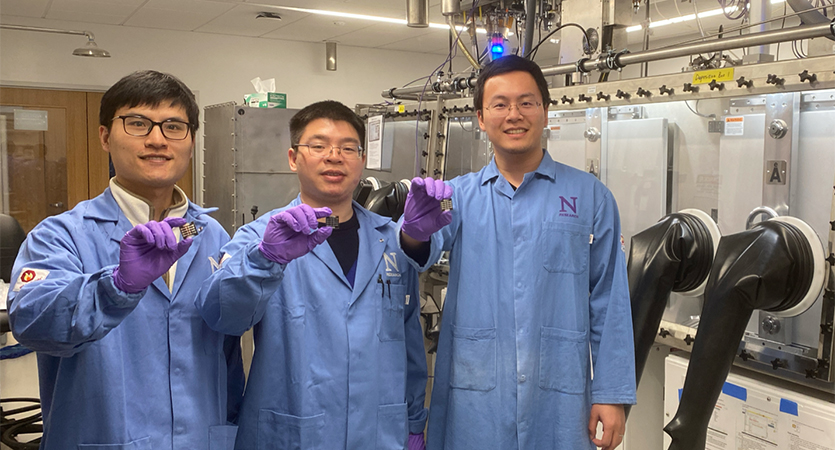
“Not only did the addition of these molecules improve efficiency, they also simplified the manufacturing process,” noted Hao Chen , a postdoctoral researcher at Northwestern Engineering and co-first author of the paper. “When added to the perovskites precursor, these molecules automatically go to the surface of the perovskite layer to patch defects during the crystallization process. This removes the need to treat the surface defects, an extra step that often results in uneven coverage of passivators and poor stability of the devices.”
This discovery builds on prior research conducted by the Sargent Group , which has explored various strategies to improve PSC performance and stability to make them a viable alternative to silicon solar cells. Next, the team will look toward scaling the devices.
“Northwestern is really at the forefront of renewable energy technology research,” said Bin Chen , co-corresponding author and research assistant professor at Northwestern Engineering. “By focusing on stable inverted perovskites and making breakthroughs in their performance, we are developing a solar technology that can be a gamechanger in the field.”
"With the efficiency discrepancy solved, the large and growing perovskite community will focus even more of its firepower on the inverted perovskite solar cell architecture in light of its stability advantages," said Aidan Maxwell, co-first author of the paper and a graduate student at the University of Toronto.
“We were thrilled when we achieved an independently certified efficiency of 26.1 percent for inverted perovskite solar cells: this was the first to surpass the record for the conventional structure,” added Cheng Liu , postdoctoral fellow at Northwestern Chemistry and co-first author of the paper. “The accomplishment motivates not only our own team but will also inspires further collective efforts across the wide and productive global perovskite community."
Additional authors on the paper include Yi Yang, Abdulaziz S. R. Bati, Yuan Liu, and Mercouri G. Kanatzidis of Northwestern Chemistry; Haoyue Wan, Zaiwei Wang, Lewei Zeng, Junke Wang, Sam Teale, Yanjiang Liu, Sjoerd Hoogland, Peter Serles, and Tobin Filleter of the University of Toronto; Wei Zhou and Qilin Zhou of ShanghaiTech University; Makhsud I. Saidaminov of the University of Victoria; and Muzhi Li and Nicholas Rolston of Arizona State University.
Get our news in your inbox.
Sign up for our newsletter.
Check out our magazine.
Find more in depth stories and get to know Northwestern Engineering.
- Industry Partners
- Aerospace & Automotive
- AI, Machine Learning, IoT & Data Science
- Biotechnology & Healthcare
- Building, Design & Construction
- Business, Management & Consulting
- Cybersecurity
- Electrical & Electronics
- Energy & Sustainability
- Entrepreneurship & Startup
- Government & Non-Profit
- Manufacturing & Materials
- Research & Academia
- Biomedical Engineering
- Computer Science & Engineering
- Electrical & Systems Engineering
- Energy, Environmental & Chemical Engineering
- Mechanical Engineering & Materials Science
- Greater St. Louis Region
- Women & Engineering
- Multicultural
- Featured Jobs
Explore Electrical Engineering
Location: United States
- Share This: Share Explore Electrical Engineering on Facebook Share Explore Electrical Engineering on LinkedIn Share Explore Electrical Engineering on X
Assist in designing and troubleshooting avionics systems with GE Aerospace’s engineering team.
Welcome to the GE Aerospace Explore Electrical Engineering Job Simulation! We are thrilled to have you here.
GE Aerospace builds upon our established 100+ years of expertise, extensive partnerships, and commitment to customers.
Together, we mobilize a new era of growth in aerospace and defense — one that balances the current needs of our industry with those of future generations, surpassing what is expected and delivering what is essential. Where others stop, we accelerate.
During this program, you will get the opportunity to step into the shoes of an Edison Engineer team member and complete tasks that replicate the work that our electrical engineering team does every day. You’ll learn key skills in avionics systems analysis, electrical systems design, and technical writing.
We hope this program provides a great resource for you to upskill and strengthen your resume as you explore career options and a potential career at GE Aerospace.
This program is self-paced. It takes approximately 3-4 hours to complete.
Skills Learned:
- Intro & Scenario Background context and your project team
- Electrical System Design
- Critical Thinking
- Technical Documentation
- Verification Planning
- Avionics Systems Analysis
- Systematic Problem-Solving
- Technical Writing
- Finish Line
Experience Information
Engineering, Art & Tech
The 2024 poster presentations by the electrical & computer engineering students held successfully..
Students from the Department of Electrical and Computer Engineering at the College of Engineering, Design, Art and Technology (CEDAT) under the Integrated Smart Systems group presented their research work and innovation projects on Wednesday 17 th April 2024 at the college, with the best three of the projects and innovations awarded, and the rest of the players recognized.
Engineers in Academia rallied to register with the Engineers Registration Board
Cedat annual report 2023.

You may like
Why are developments always ahead of planning makerere university and its partners to address urban expansion planning.
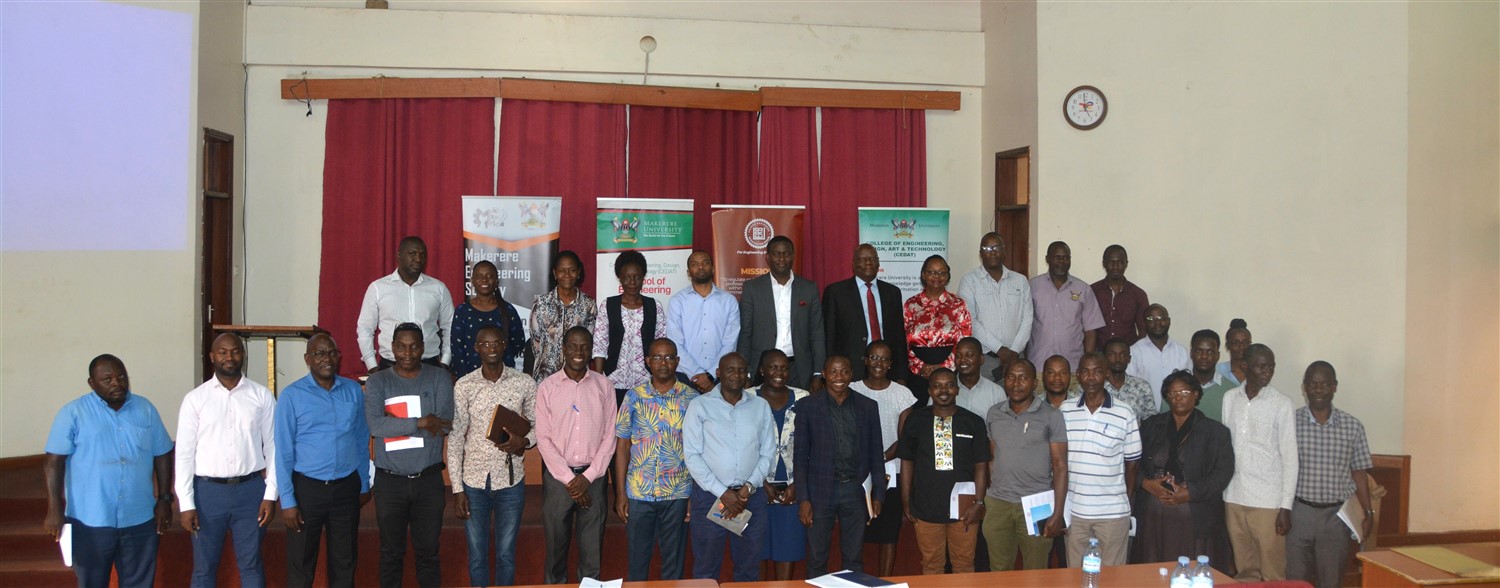
Makerere University, together with the Ministry of Lands, Housing, and Urban Development and the Urban Authorities Association of Uganda (UAAU) are set to undertake an urban expansion planning drive that will result in better-planned cities and urban areas in Uganda.
A national workshop on Urban Extension Planning in Uganda financed by Cities Alliance was held on Wednesday 25 th April 2024, in the CEDAT Conference Hall during which participants delved into the concept, the principles and importance of urban expansion, and its fundamental stages. They also explored the best practices for Urban Expansion Plan implementation and financial strategies.
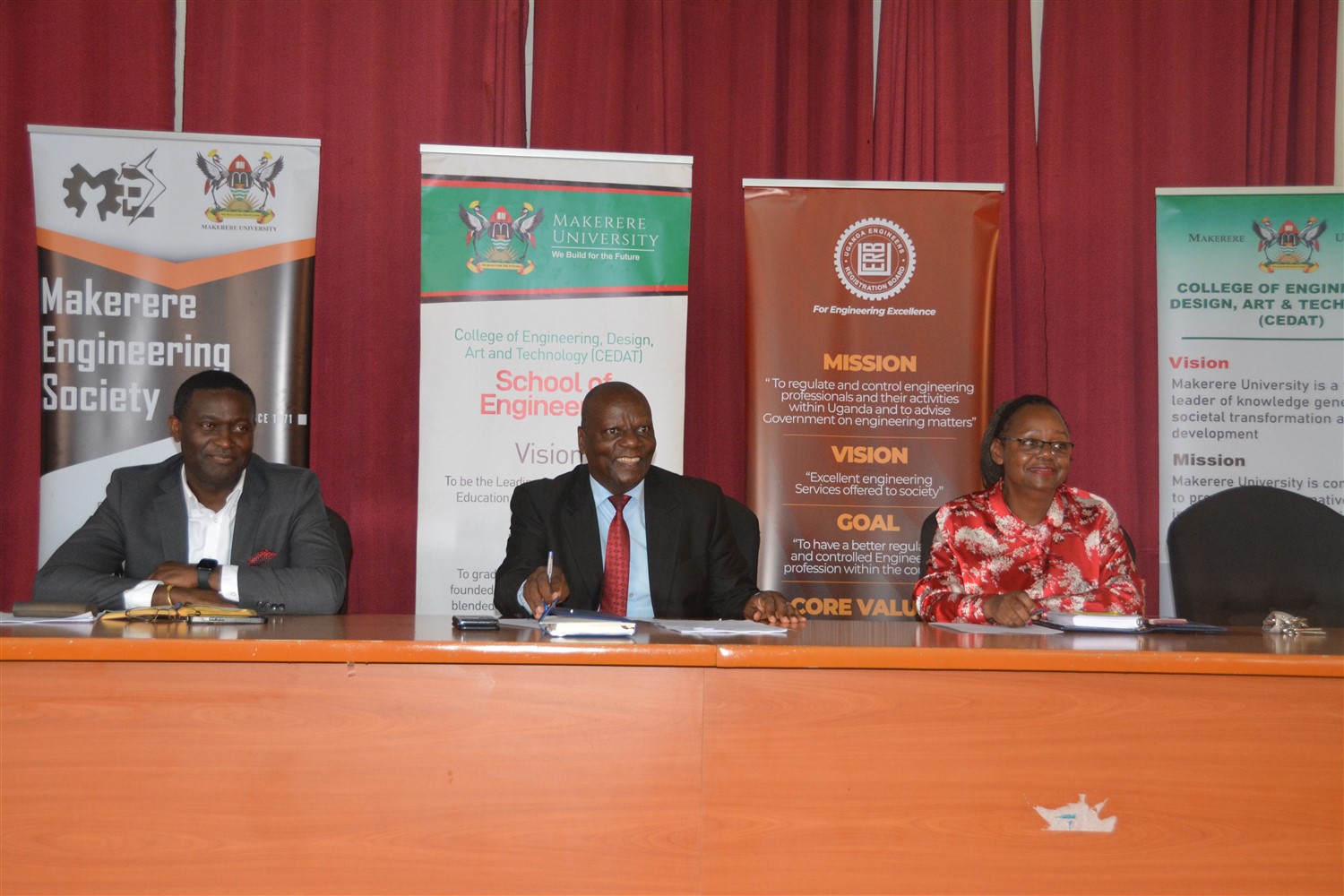
Makerere University Engineering staff who are not Registered Engineers have been urged to utilize the existing opportunity availed through a window specially created by the Engineering Registration Board (ERB) for Engineers in the Academia.
The Engineering Registration Board has come out to enlist the registration of Engineers in academia, who even though impart knowledge and skills to the engineers, many of them are not themselves Registered Engineers
During an outreach visit to the College of Engineering, Design, Art, and Technology (CEDAT), Thursday 18 th April 2024, a team from the Engineering Registration Board interacted with Makerere University staff in the engineering field drawn from the Electrical Engineering, Mechanical Engineering, Civil Engineering, Agricultural Engineering, and Software Engineering among others.
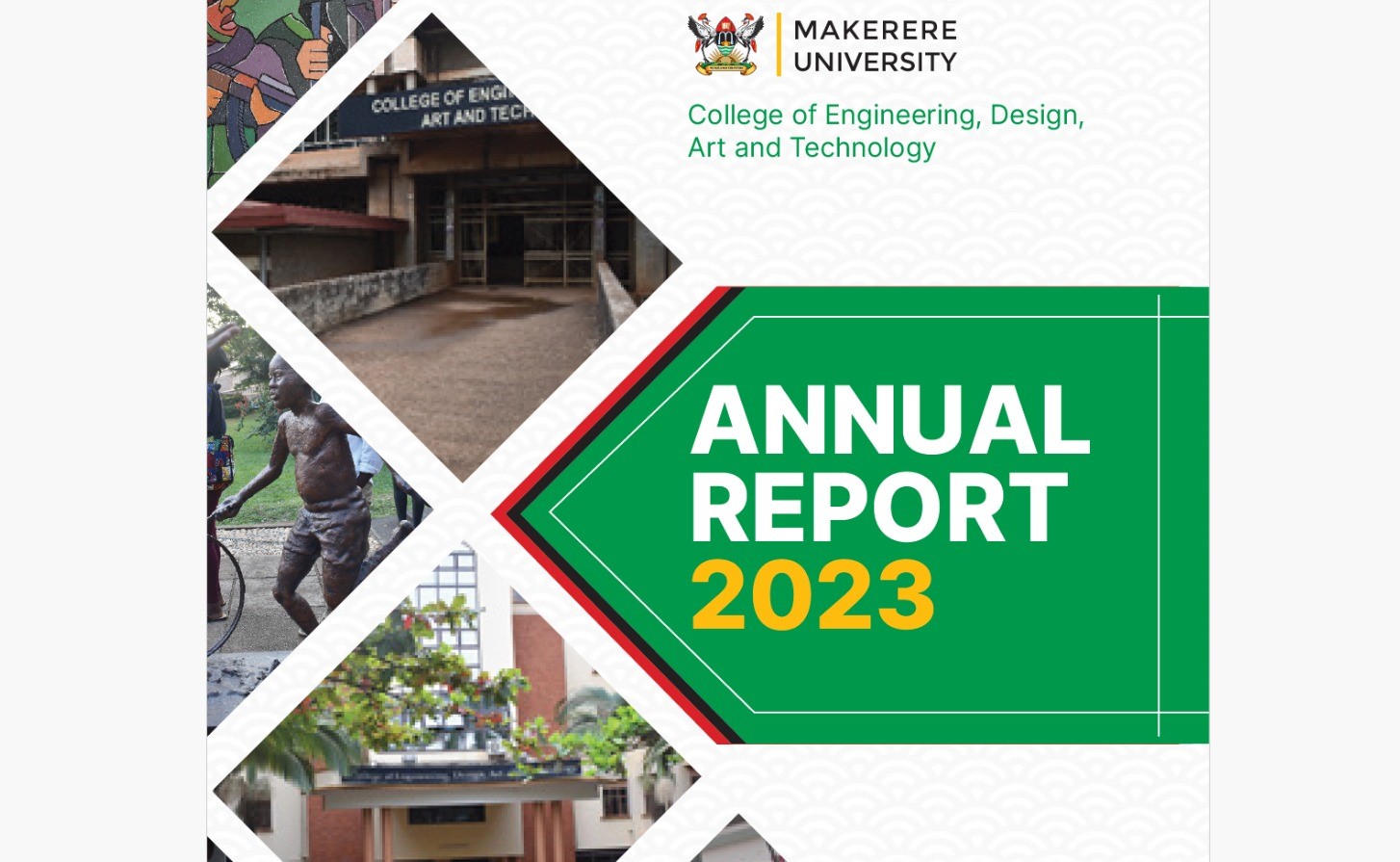
It is my pleasure to present to you the CEDAT annual report for the year 2023. This report highlights the major achievements and the challenges faced during the period under review. The report further provides an overview of the colleges’ performance regarding the implementation of the Strategic Plan 2019/2020-2029/2030.
As you might be aware, I took over the mantle of College Principal on the 2nd of October 2023, together with the Deputy Principal Assoc. Prof. Kizito Maria Kasule. This was during the third quarter of the implementation of the planned activities for the year under review. It is based on this fact that I wish to extend my sincere appreciation to our predecessors, Prof. Henry Alinaitwe and Dr. Venny Nakazibwe, the Principal and Deputy Principal respectively, for the leadership of the College until the end of their tenure. Much of what is reported therefore is greatly attributed to their effort. That notwithstanding, I take this honor to appreciate the appointing authority for giving me this opportunity to serve and to the CEDAT community for the warm reception and cordial working relations enjoyed so far.
We have a task before us as per our mandate of teaching and learning, research and innovation, as well as knowledge transfer and partnerships. This is no mean task and it calls for concerted effort by all the stakeholders including the students, the academia, and the industry. During my reconnaissance to bring myself up-to-date with the college and the state of affairs as a new leader, I interacted with key administrative units of the college including the centers, the three Schools, namely the School of Engineering, School of the Built Environment, and the Margaret Trowel School of Industrial and Fine Art. Several issues came up, both positive and negative and these need appropriate action if we are to maintain CEDAT as a Home of Innovations. I am optimistic that with the team spirit exhibited at CEDAT, a lot will be realized as we play our specified roles
I extend my sincere gratitude to all our stakeholders including but not limited to all CEDAT staff, students, alumni, partners, funders, and service providers for your unwavering commitment to serving humanity. I entreat you to keep the spirit alive as we journey together toward realizing the vision and mission of Makerere University
We are looking forward to an even more successful period ahead of us, and together definitely we shall achieve all we set out to do
Assoc. Prof. Moses Musinguzi Principal, College of Engineering, Design, Art and Technology
Click here for more details
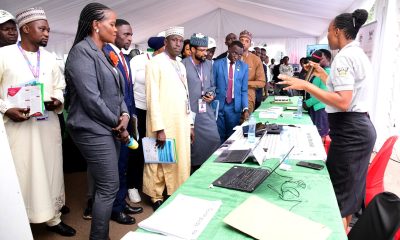
Free Course: Introduction to Data Science
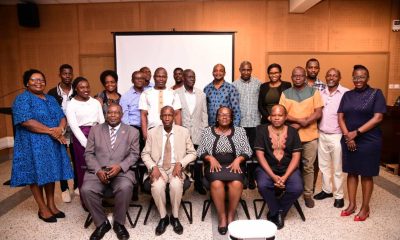
Government Asked to Make Fine Art Compulsory in Secondary Schools
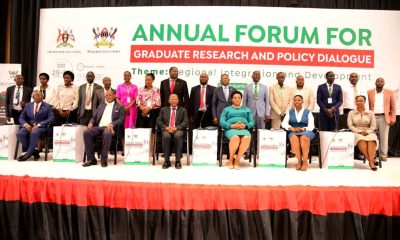
Hon. Dr. Muyingo Officially Launches Graduate Forum, Research Management System

Prof. Justin Epelu-Opio, Our Longest Serving DVC Rests

Dr. Martin Aliker – Celebrating A Life Well Lived

IMAGES
VIDEO
COMMENTS
March 08, 2024 by Jake Hertz. From 3D processors to self-powered sensors, these academic research projects show how "the next big thing" in electronics may emerge from labs worldwide. Many of the most influential hardware companies can trace their origins back to a university lab. Even RISC-V, the open-source ISA taking the hardware world by ...
Electrical Engineering Research Topics Examples. 1. Electrical engineering comprises the comprehension of electricity and how it works. The main task of electrical engineers is to improve the distribution of energy to different electrical devices. Electrical engineers utilize their skills and knowledge to solve different technical issues.
Electrical and electronic engineering is the branch of engineering that makes use of electricity. Electrical engineering concentrates on systems for generating and transmitting large electrical ...
Table of contents. Top 75 Emerging Research Topics in Electrical Engineering. 1. Power Systems and Renewable Energy. 1.1 Smart Grids and Micro-grids. 1.2 Energy Harvesting and Storage. 1.3 Electric Vehicles and Transportation. 2. Communications and Networking.
Electrical engineers design the most sophisticated systems ever built. From computers with billions of transistors to microgrids fed by renewable energy sources, from algorithms that predict disease to solar cells and electric vehicles, electrical engineering touches all parts of modern society. We leverage computational, theoretical, and ...
Browse the archive of articles on Nature Reviews Electrical Engineering. ... Several projects are reviewed to highlight areas of current research focus, and future trends of wind power generation ...
Integrated Circuits and Systems. This area is concerned with the application-driven design of electronic circuits and systems, spanning a wide spectrum from low frequencies to mm-wave and THz. These systems are designed with a variety of fabrics and technologies, ranging from silicon subsystems and modules, CMOS and BiCMOS chips, emerging nano ...
The research that drives EECS forward is based out of four major labs. Most EECS faculty members are affiliated with one of these labs, where they explore challenging questions and develop innovative technological solutions every day. Nearly 130 EECS faculty members find their research homes in four major affiliate labs: Computer Science and ...
2021 SURE/SROP Research Projects in ECE. Directions: Below are listed the most recent descriptions of 2021 Summer Undergraduate Research in Engineering (SURE) and Summer ... This is a highly interdisciplinary project, and the student will have the opportunity to work with experts in electrical engineering, chemical engineering, and materials ...
When you join IEEE, you join a community of technology and engineering professionals united by a common desire to continuously learn, interact, collaborate, and innovate. IEEE membership provides you with the resources and opportunities you need to keep on top of changes in technology; get involved in standards development; network with other ...
Research projects in the Solid-State area cover a wide variety of topics from integrated photonics and optoelectronics to semiconductor materials to high-frequency devices and integrated circuits to nanoscience and the development of nanotechnogies. ... Electrical and Computer Engineering EECS Building 1301 Beal Avenue Ann Arbor, MI 48109-2122 ...
2022 SURE/SROP Research Projects in ECE. Directions: Below are listed the most recent descriptions of 2022 Summer Undergraduate Research in Engineering (SURE) and Summer Research Opportunity Program (SROP) projects available in Electrical and Computer Engineering (ECE).Please consider this list carefully before applying to the SURE or SROP program. You are welcome to contact faculty if you ...
Students can earn two types of credit for EE research: EE 490 (CR/NC), or EE 499 (graded). A maximum of 10 credits of EE 499 (not 490) can count toward the EE elective area. EE 490 or 499 represents research or a design project carried out under the supervision of a faculty sponsor. Students may register for between 2 - 5 credits of EE 499 each ...
Topics include developing fast internet networks, smart Bluetooth devices, and GPS systems. Other topics focus on building tiny electronic chips inside computers and phones. Researchers also work on voice technologies, self-driving cars, drones, and more. In essence, electrical engineering researchers focus on a wide variety of subjects.
Master Project/Thesis Proposal Guidelines. This information applies to both EE 297A and EE 299A. A Proposal should have eight components: Title and Signature page, Abstract, Objectives, Introduction, Proposed Work, Summary and Conclusion, Proposed Schedule, and References. Find the guidelines for preparing these components below:
Here are some automation and robotics projects for engineering students In 2023: 16. Line-Following Robot. Construct a line-following robot that uses sensors to detect and follow a marked path on the ground. This project involves working with microcontrollers, motor control, and sensor integration.
MS Thesis research proposal: The main objective of this research is to come up with methodologies for calculating Area Frequency and Inertia that can be applied on actual power system netwrok Phasor Measurements Units (PMU) data. We will then utilize this information to reduce a multi-area transmission network for dynamic stability studies.
Facilities and Equipment Use. UNT's Electrical Engineering labs offer a wide variety of research opportunities and experiences for all of our students. Institutional labs can be used by any student, with or without faculty supervision, for any projects. As the name suggests, these often double as classrooms. Research labs are under the direct ...
Embark on a journey of discovery through research, pushing the boundaries of what's possible in electrical engineering. See also 155 Best Statistics Project Topics for College Students These projects are like jumping into the shoes of a tech superhero - solving problems, creating wonders, and making the world a cooler place.
Electrical Engineering. College of Engineering; School of Electrical Engineering and Computer Science; Postal address Show on map. State College. United States. Overview; Fingerprint; ... Project: Research project. RNA 100%. Adenosine Deaminase 48%. Viruses 25%. SARS Virus 14%. Simulation Training 12%. CAREER: Irregular Modulation: Harnessing ...
Conversion of Single Phase to Three Phase Supply. The project aim is to convert the single-phase supply into a three-phase supply for powering three-phase loads. The system creates two new lines each with a phase difference of 120°. Below are some additional electrical engineering projects list and ideas. Cell Phone Detector.
Dylan Meyer. Advisor: Scott Diddams Lab: Frequency Comb & Quantum Metrology Lab Bio: Meyer is a first-year PhD student in the FCQM group.He received his undergraduate degree from the University of Alabama in Electrical Engineering. My research proposal is the development of highly stable and robust millimeter wave time and frequency (T&F) transfer, supporting T&F transfer between atomic clocks.
Electric vehicle closed loop mathematical modeling comprises the following steps. Battery modeling; I would say battery modeling of an electric vehicle would be another electrical engineering research project area.. I did a project on performance improved battery modeling for electrical vehicle simulation. You can find the paper presented at the IEEE conference held at IIT Delhi (ICPS 2016) here.
325+ Topics for (EEE) Electrical Engineering Projects. The electrical and electronics projects deal with generation, design, control, automation, and integration with advanced technology. These project ideas are based on the electrical power system, electronic application, instrumentation, control system, wireless communication technology ...
The study examines how students approach these problems as well as how it is developing their engineering judgment. Work on this project includes analyzing previously collected interviews, in-class discussions, and students' homework, as well as helping the growing research team to develop new open-ended modeling problems. ... and students ...
We are offering the following thesis subjects within the research area of microwaves in medical engineering. The projects are conducted within the MMG research group at the Division of Solid-State Electronics (Department of Electrical Engineering). If you have any questions you are very welcome to contact: [email protected]
Electrical Engineering. The Sc.B. program in Electrical Engineering equips students with a solid foundation for careers in electrical engineering and related fields, to advance the knowledge base for future technologies, and to merge teaching, scholarship, and practice in the pursuit of solutions to human needs.
An international team of researchers, including a group from Northwestern Engineering and Northwestern Chemistry, has set a new world record for power conversion efficiency (PCE) of single-junction perovskite solar cells (PSCs).. These solar cells - created from an emerging solar material - have the potential to generate greater solar energy at a lower cost than today's industry-standard ...
Assist in designing and troubleshooting avionics systems with GE Aerospace's engineering team. Welcome to the GE Aerospace Explore Electrical Engineering Job Simulation! We are thrilled to have you here. GE Aerospace builds upon our established 100+ years of expertise, extensive partnerships, and commitment to customers.
Students from the Department of Electrical and Computer Engineering at the College of Engineering, Design, Art and Technology (CEDAT) under the Integrated Smart Systems group presented their research work and innovation projects on Wednesday 17th April 2024 at the college, with the best three of the projects and innovations awarded, and the rest of the players […]